Until 2009, Porsche->ke1 had nothing to do with electrification, still using flat-six, V-8, and V-10 engines across its lineup. But in five years, the Germans made a huge leap forward in the hybrid->ke147 world, launching four models that combined internal combustion engines with electric motors. The 2012 Porsche Panamera S Hybrid, 2009 Porsche Cayenne Hybrid, 2014 Porsche 918 Spyder, and the 2015 Porsche 919 Hybrid all signaled that Porsche is embracing the future, on both the road and the race track. At the 2015 Frankfurt Motor Show, Porsche launched its very first full-electric vehicle->ke1030, in the form of a four-door concept car->ke169.
Meet the Mission E, the Porsche that lacks the growl of a race-bred gasoline engine, but delivers outstanding performance that rivals that of the 2015 Tesla Model S P85D.
Futuristic by design, impressively quick, and quite practical thanks to its four-seat configuration and good driving range, the Mission E is the kind of concept I wish Porsche would approve for production as soon as tomorrow. Unfortunately, that's not likely to happen very soon given the amount of experimental technology it comes with, but it does signal Porsche's intent to offer an EV at some point. Keep reading for the full rundown.
Updated 03/30/2016: Porsche dropped a new video in which it explains how the Concept Study Mission E was built. Hit "play" to learn more about the concept's exterior and interior design.
Continue reading to learn more about the Porsche Mission E.
2015 Porsche Mission E Concept
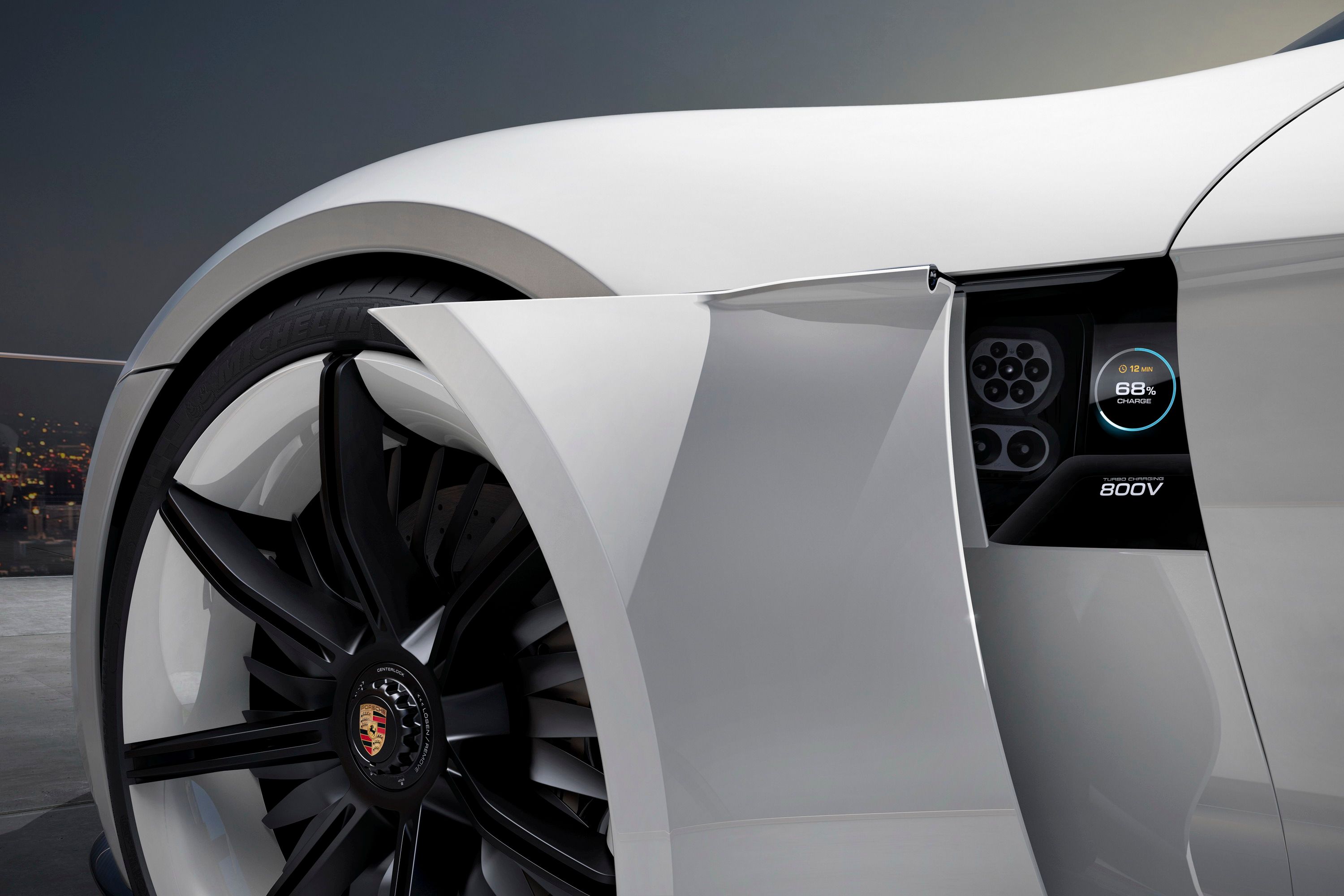

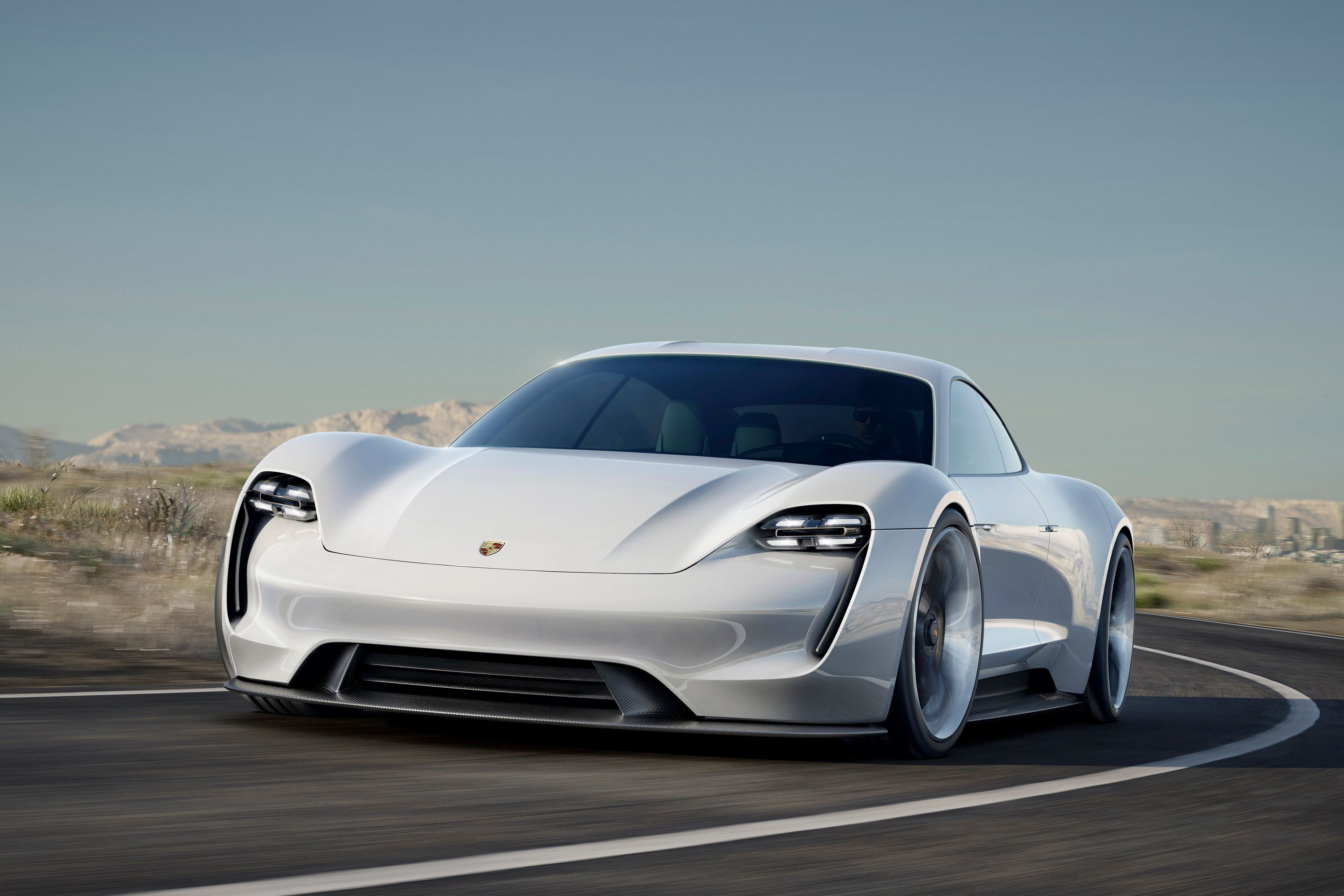
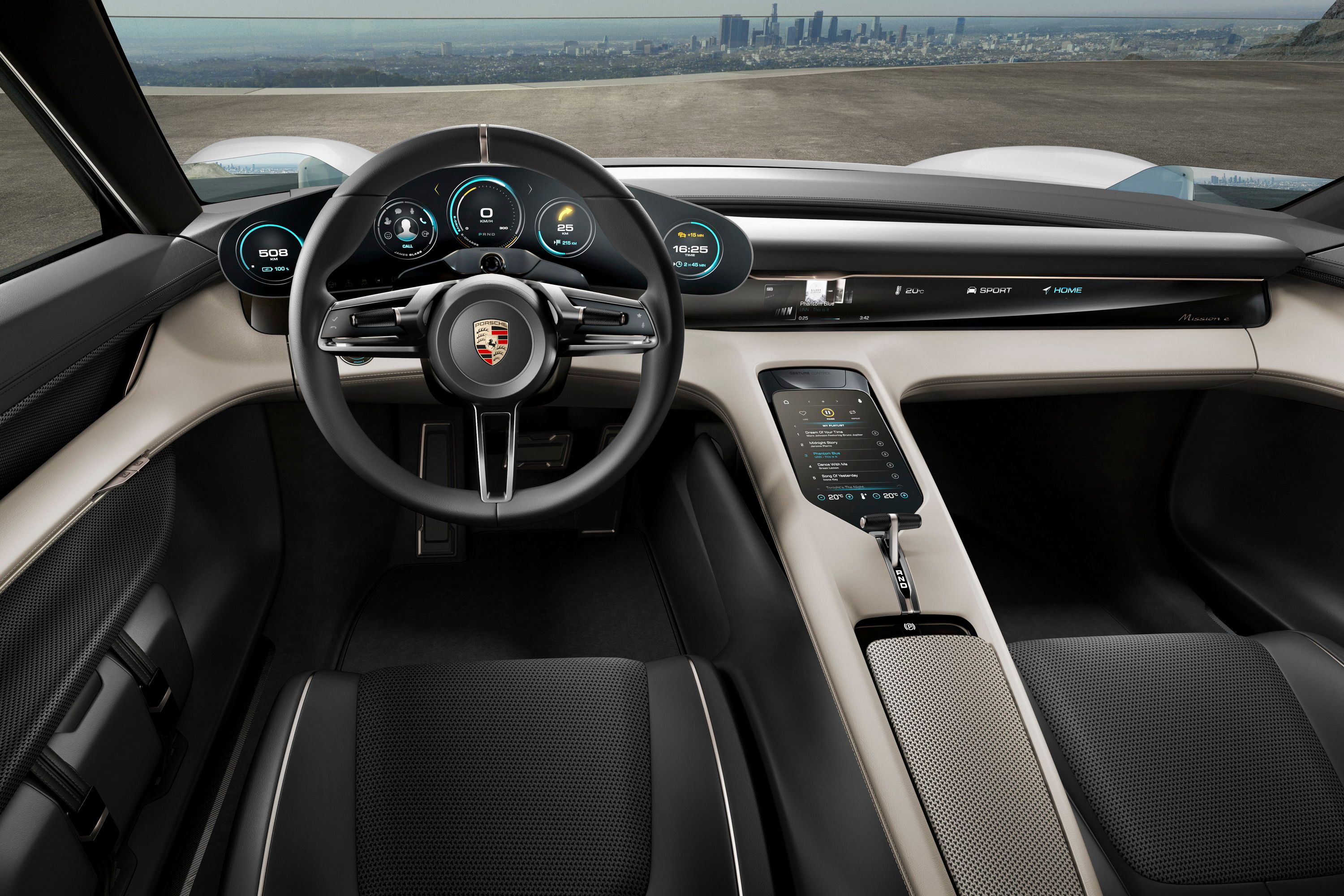
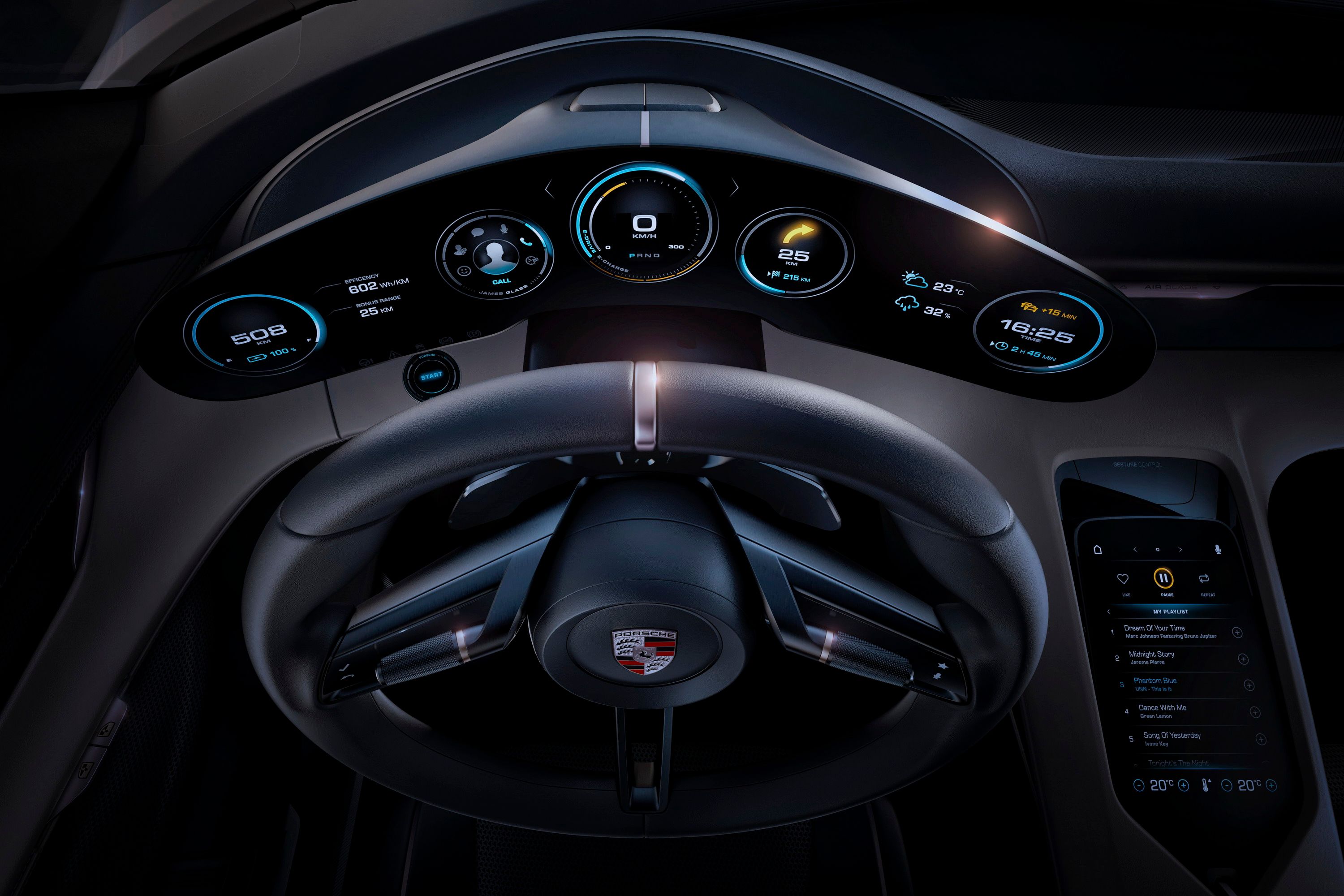
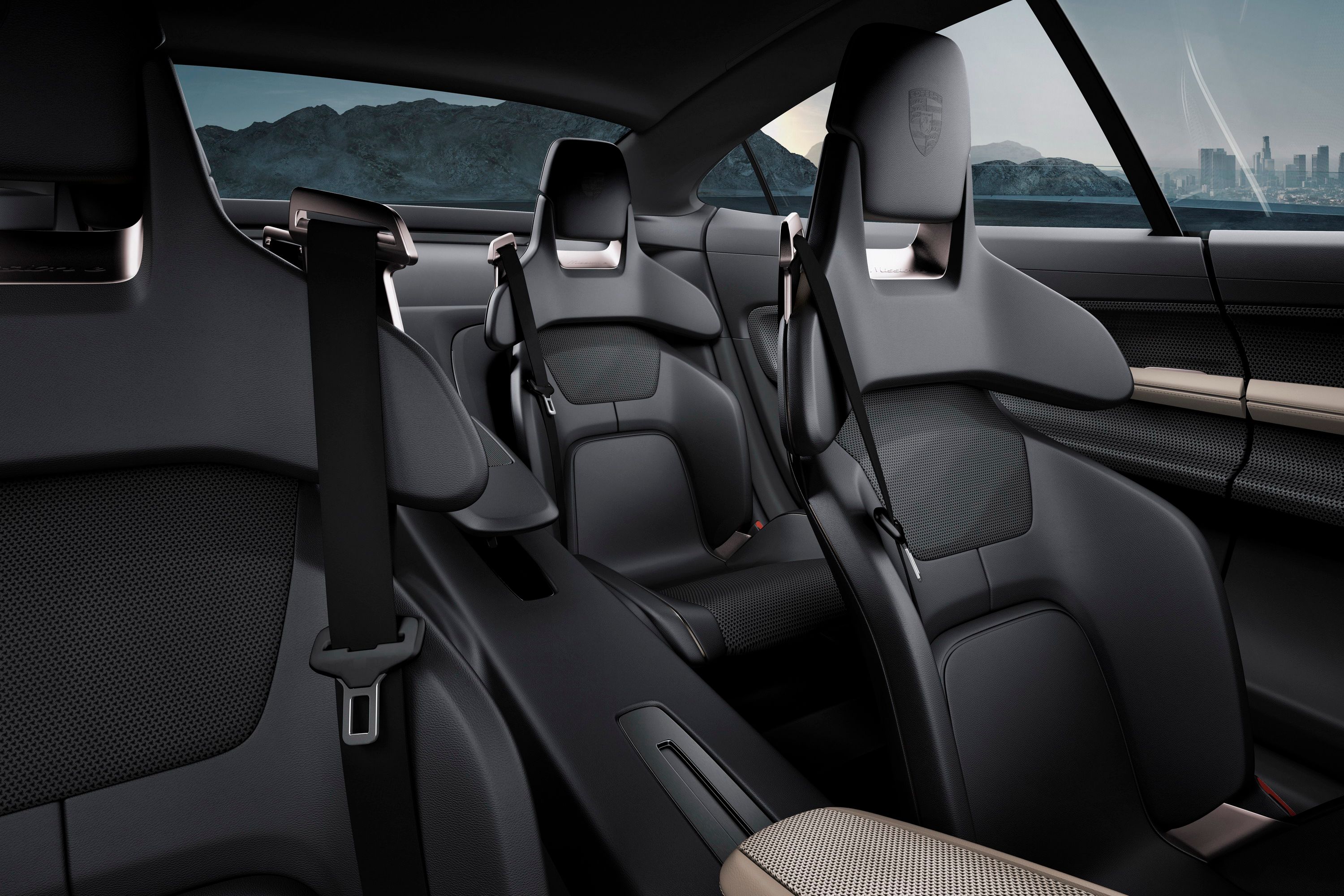
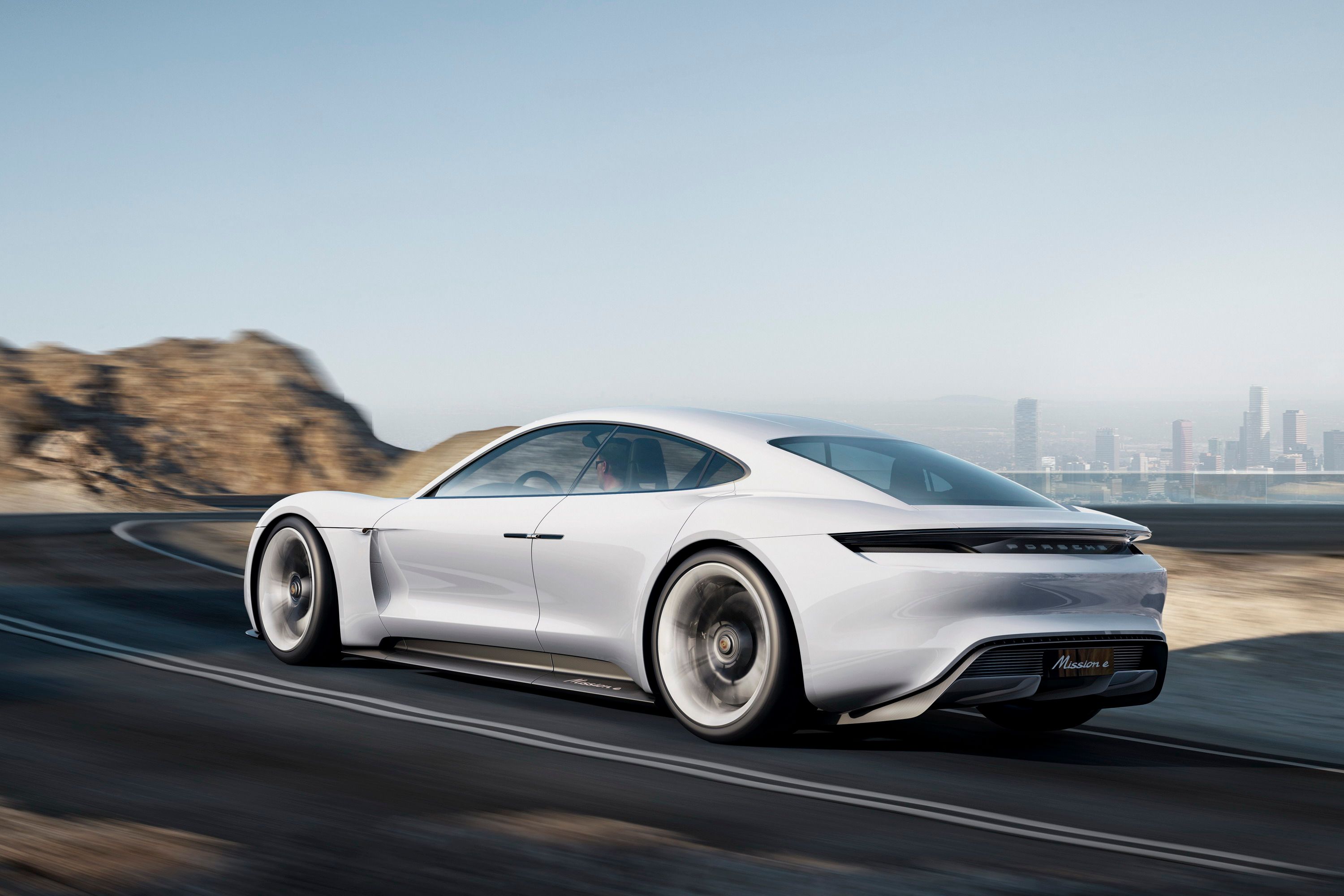
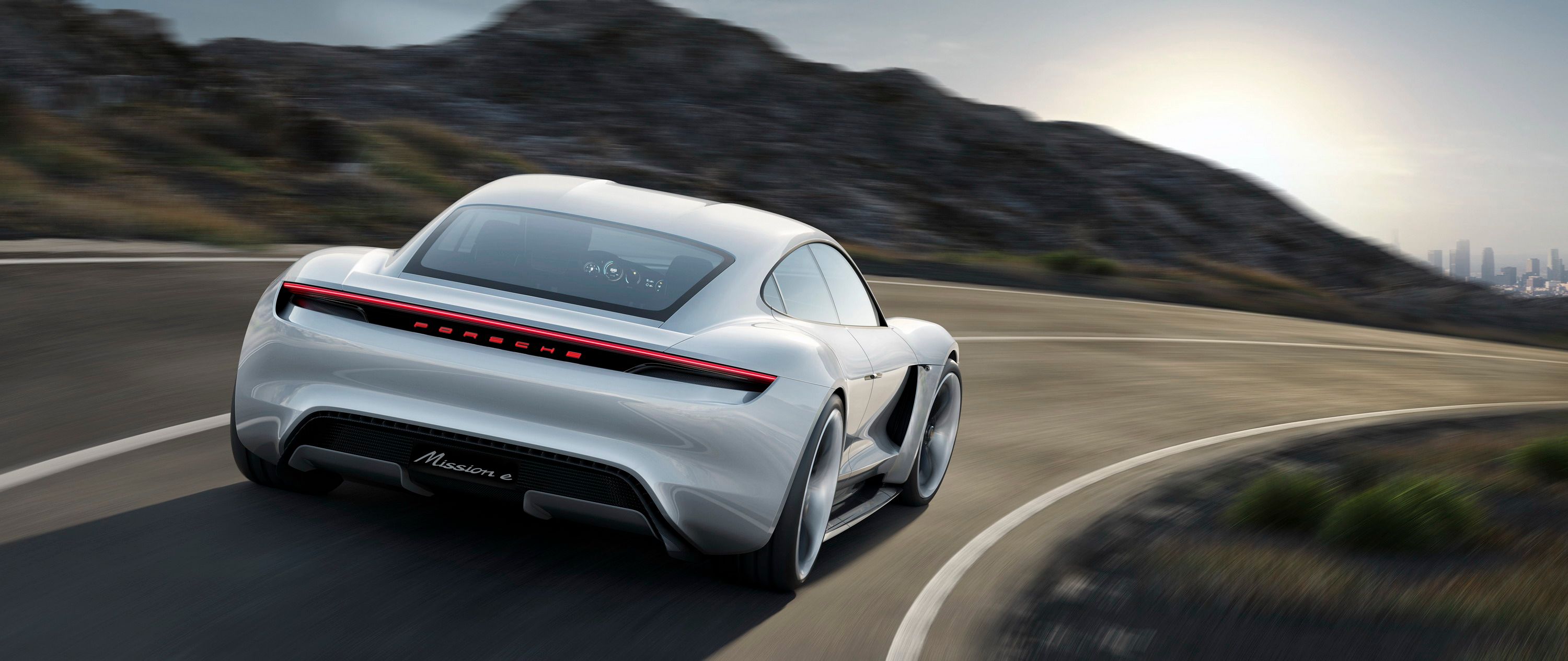
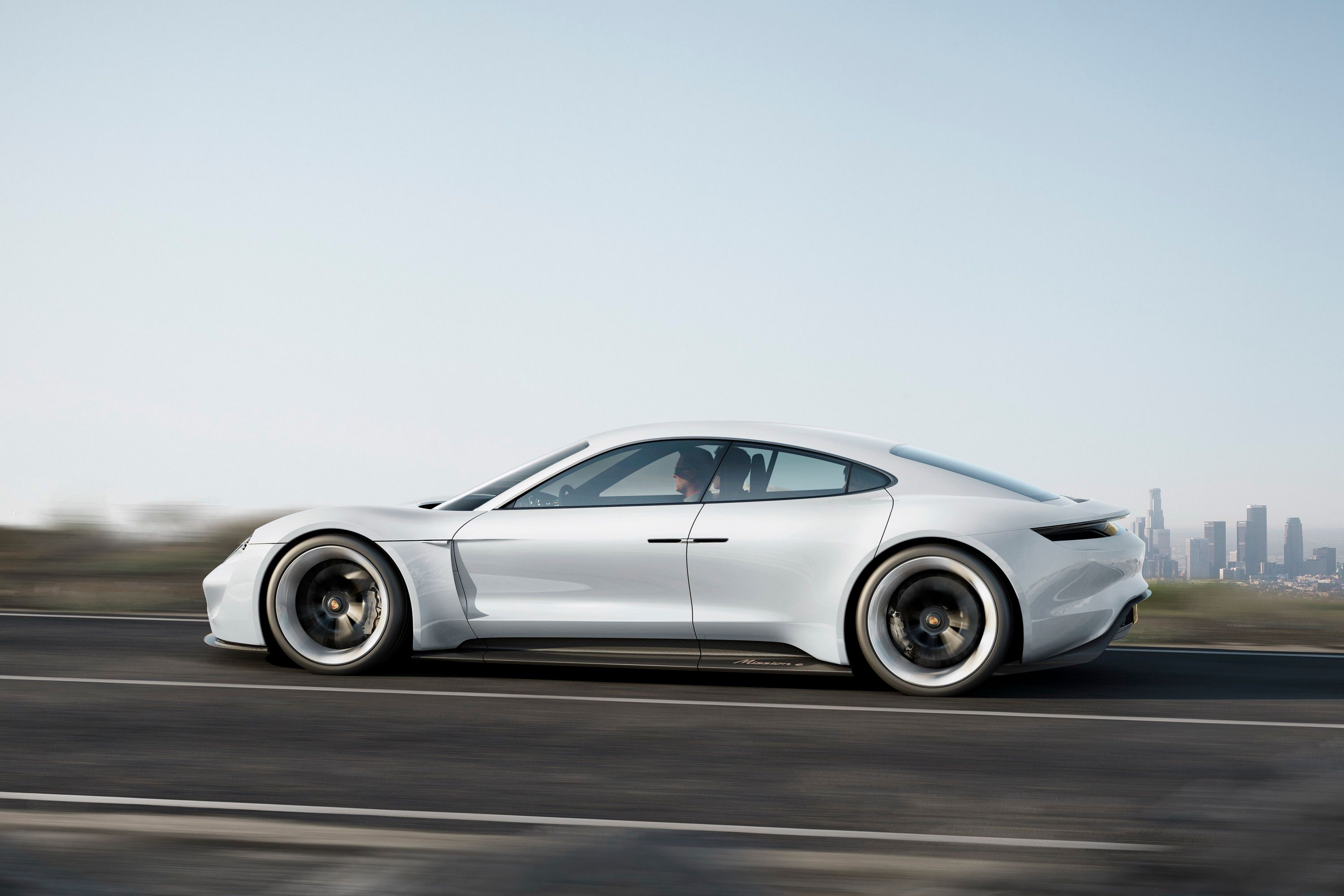
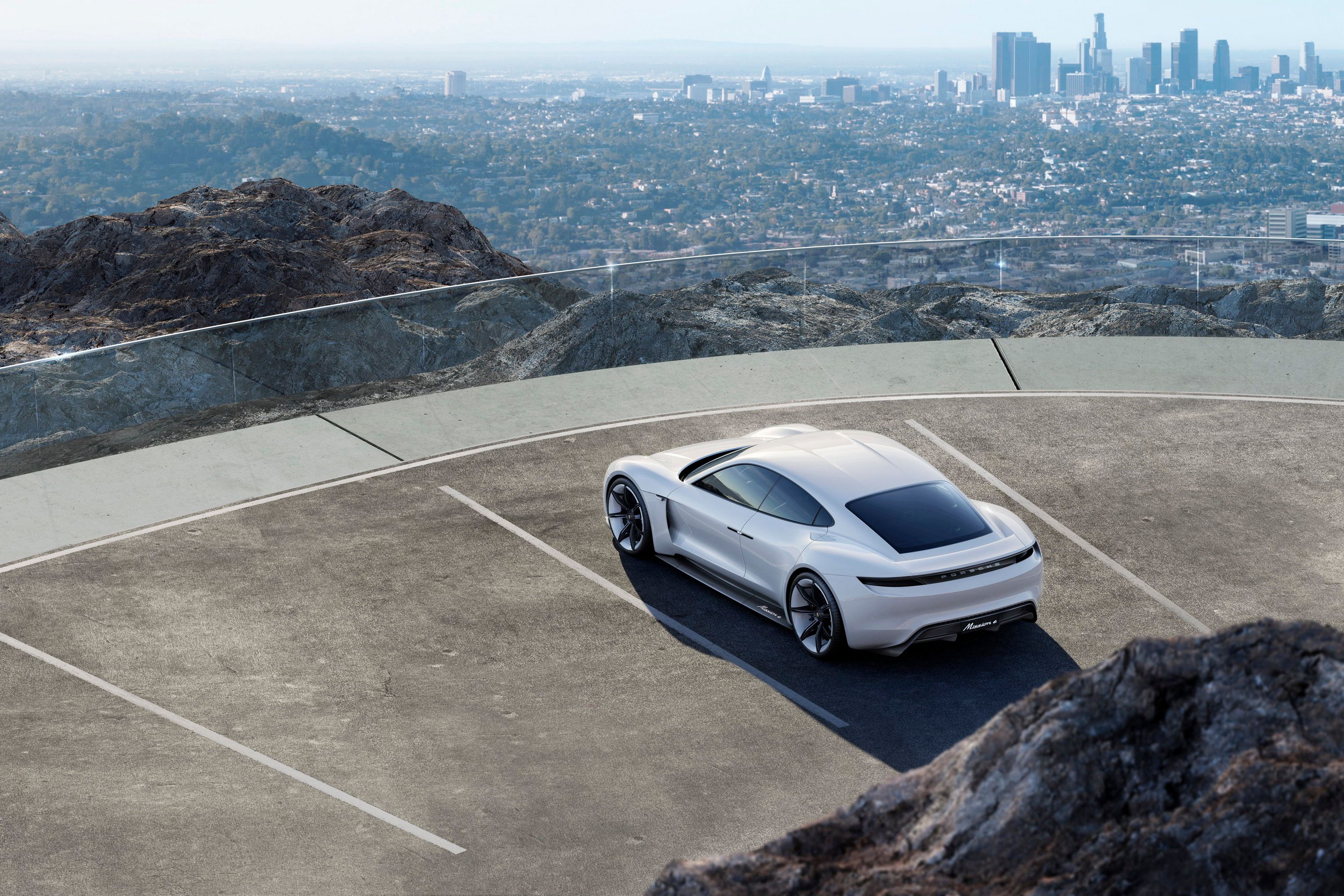
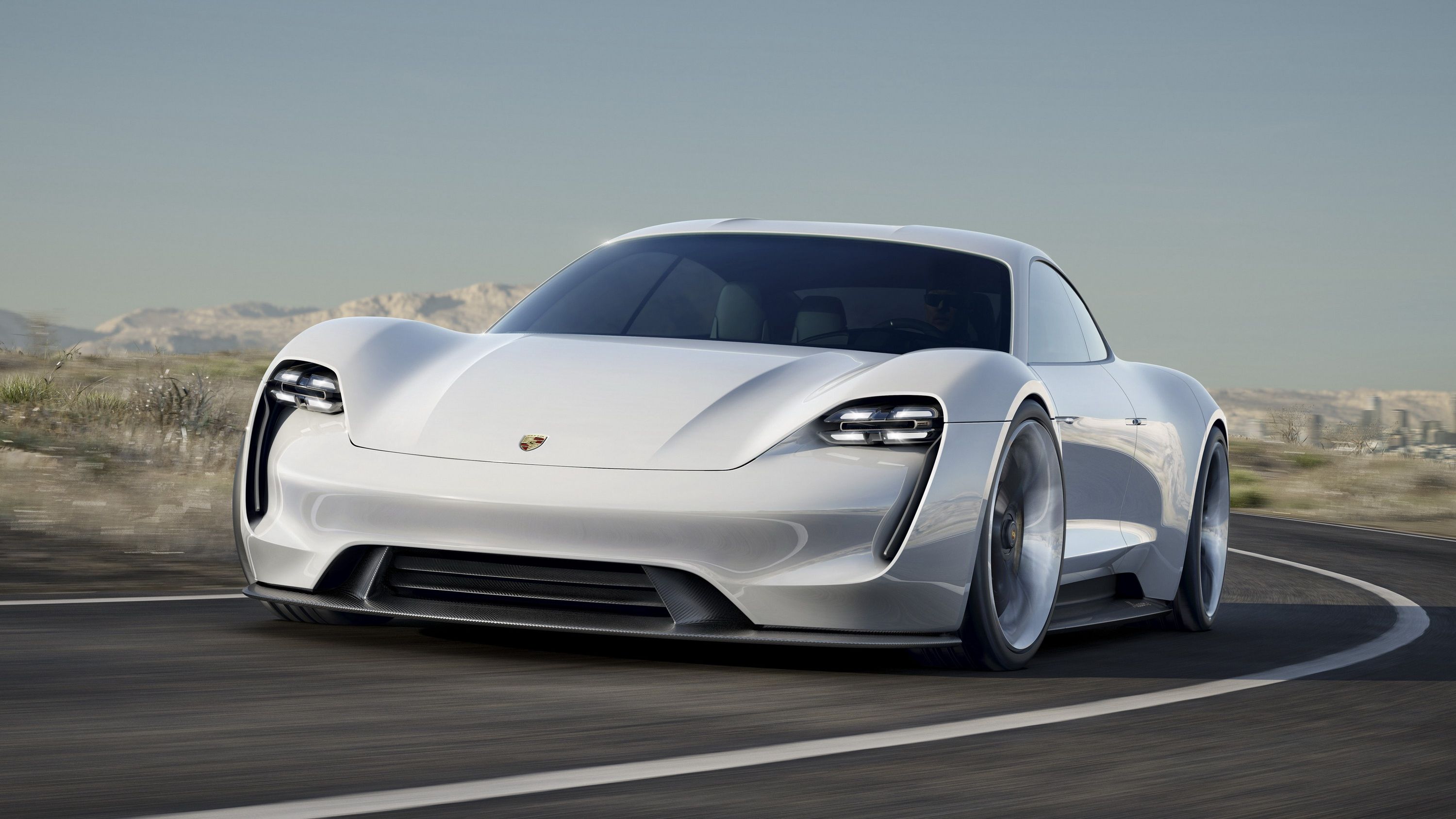
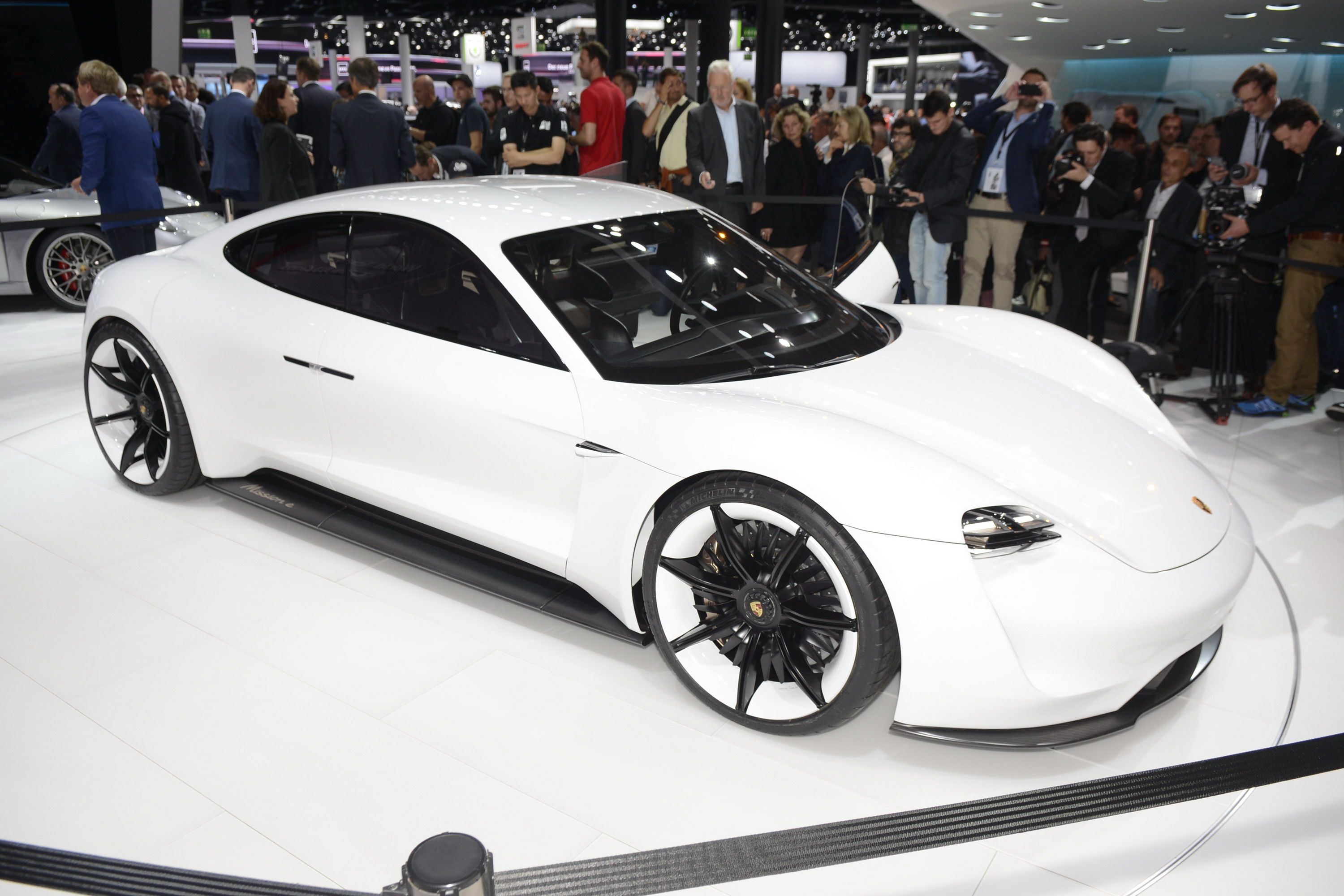
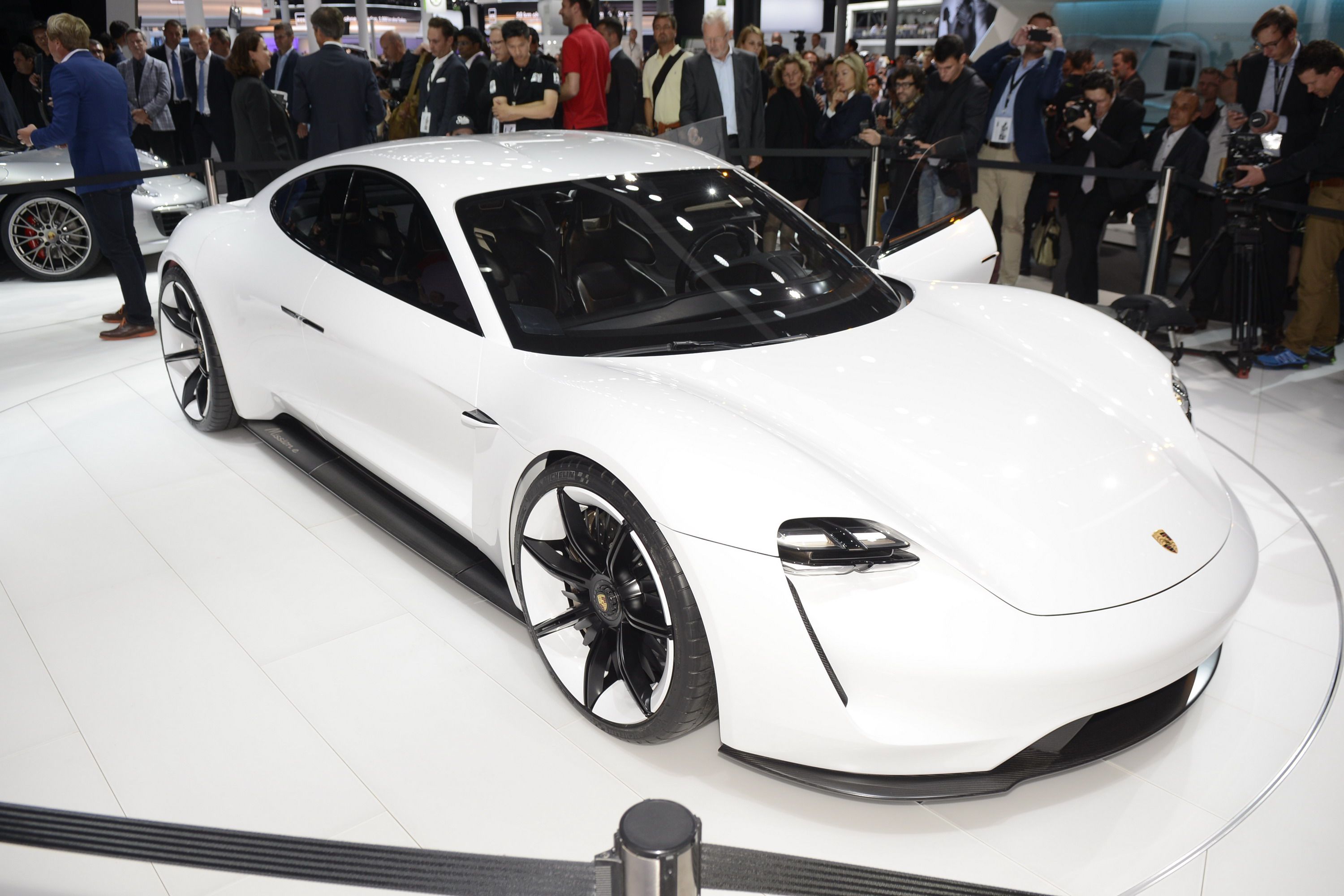
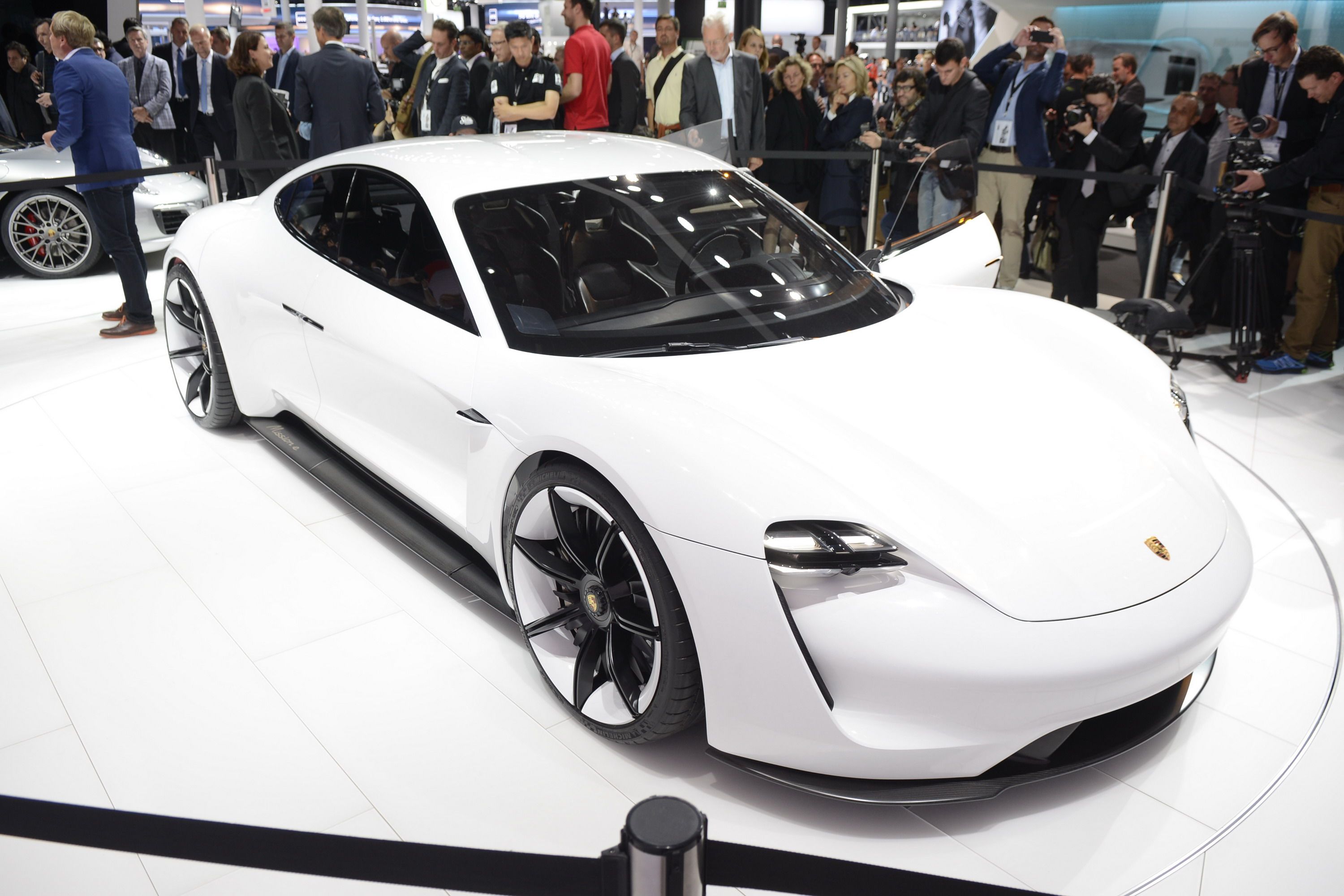
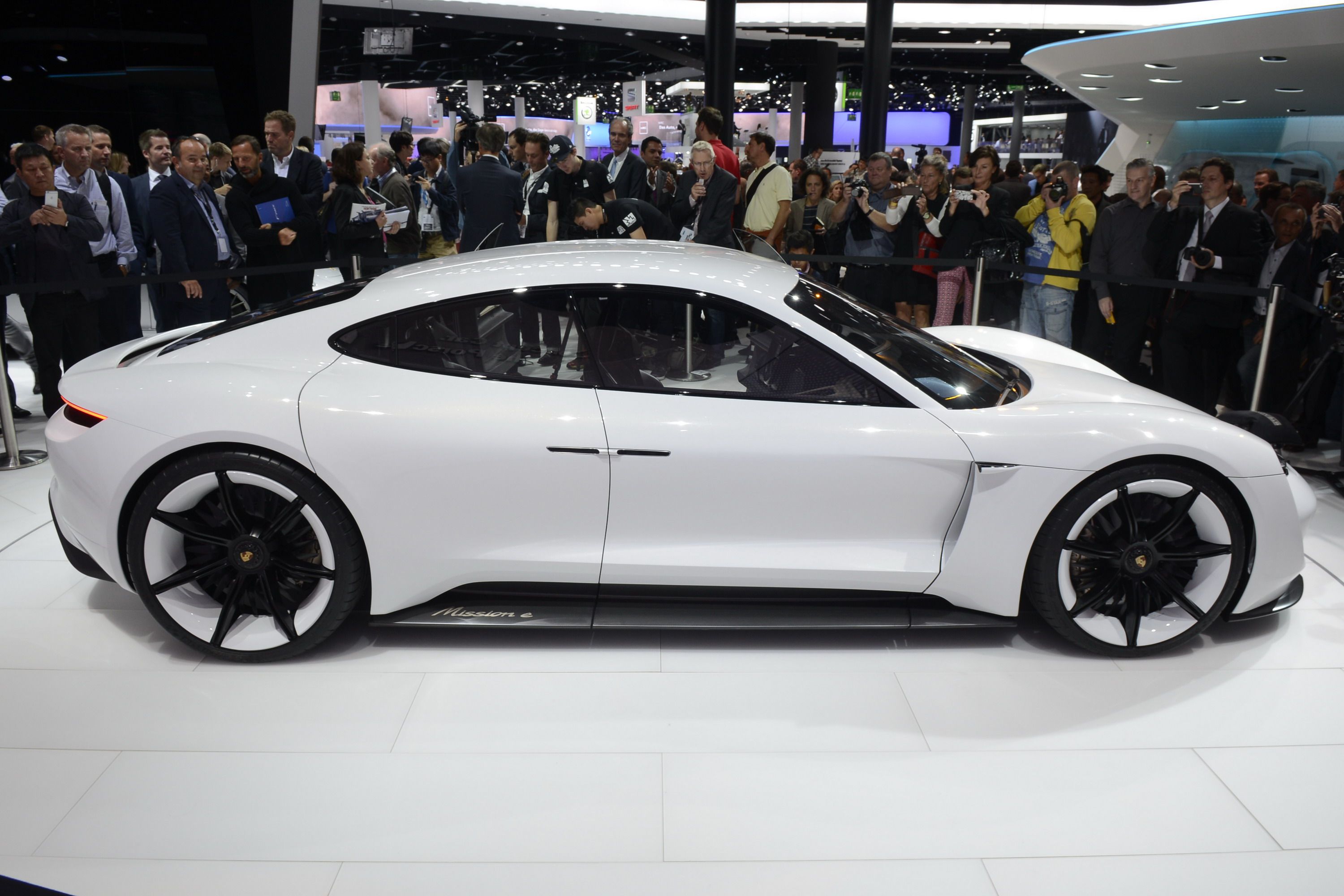
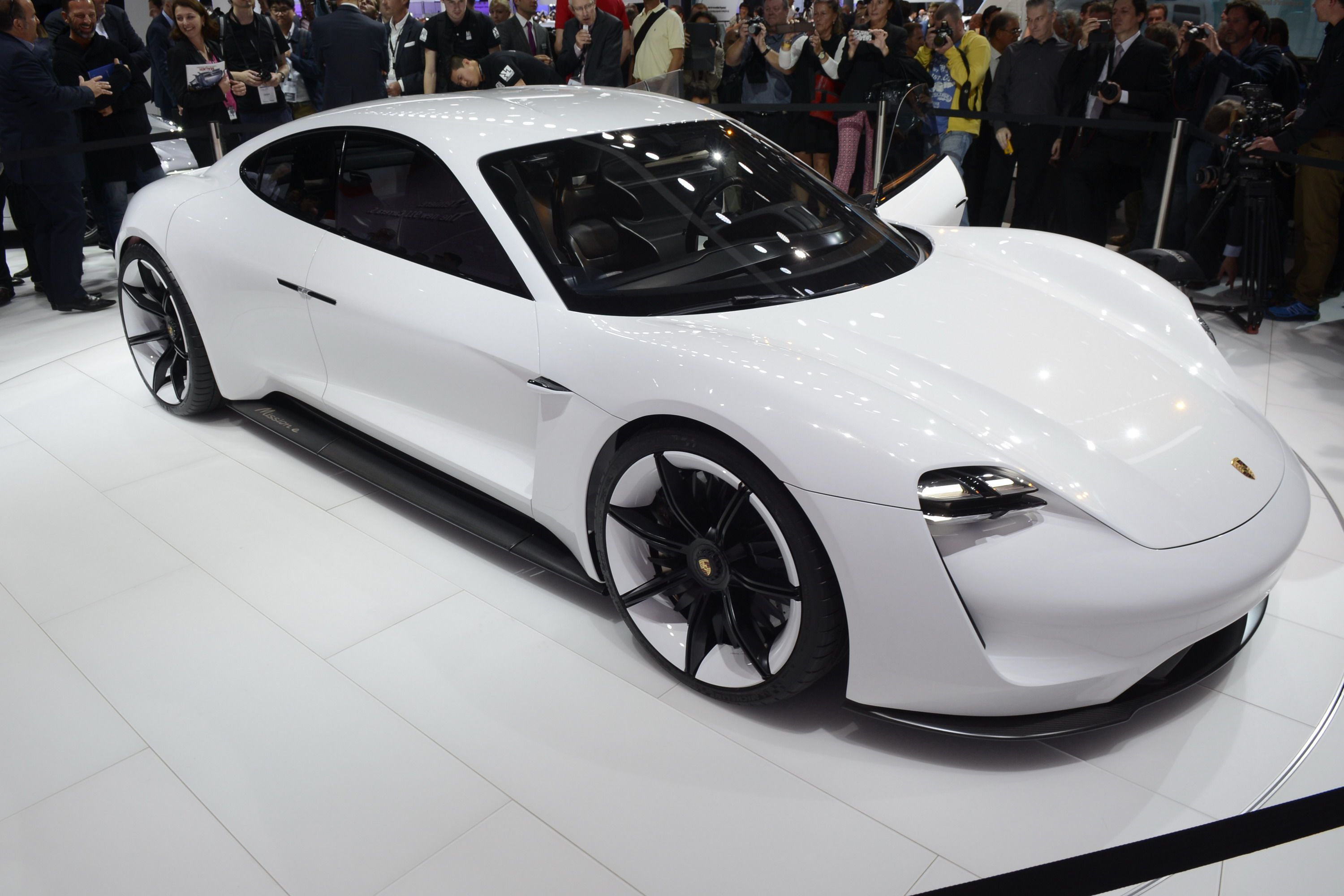
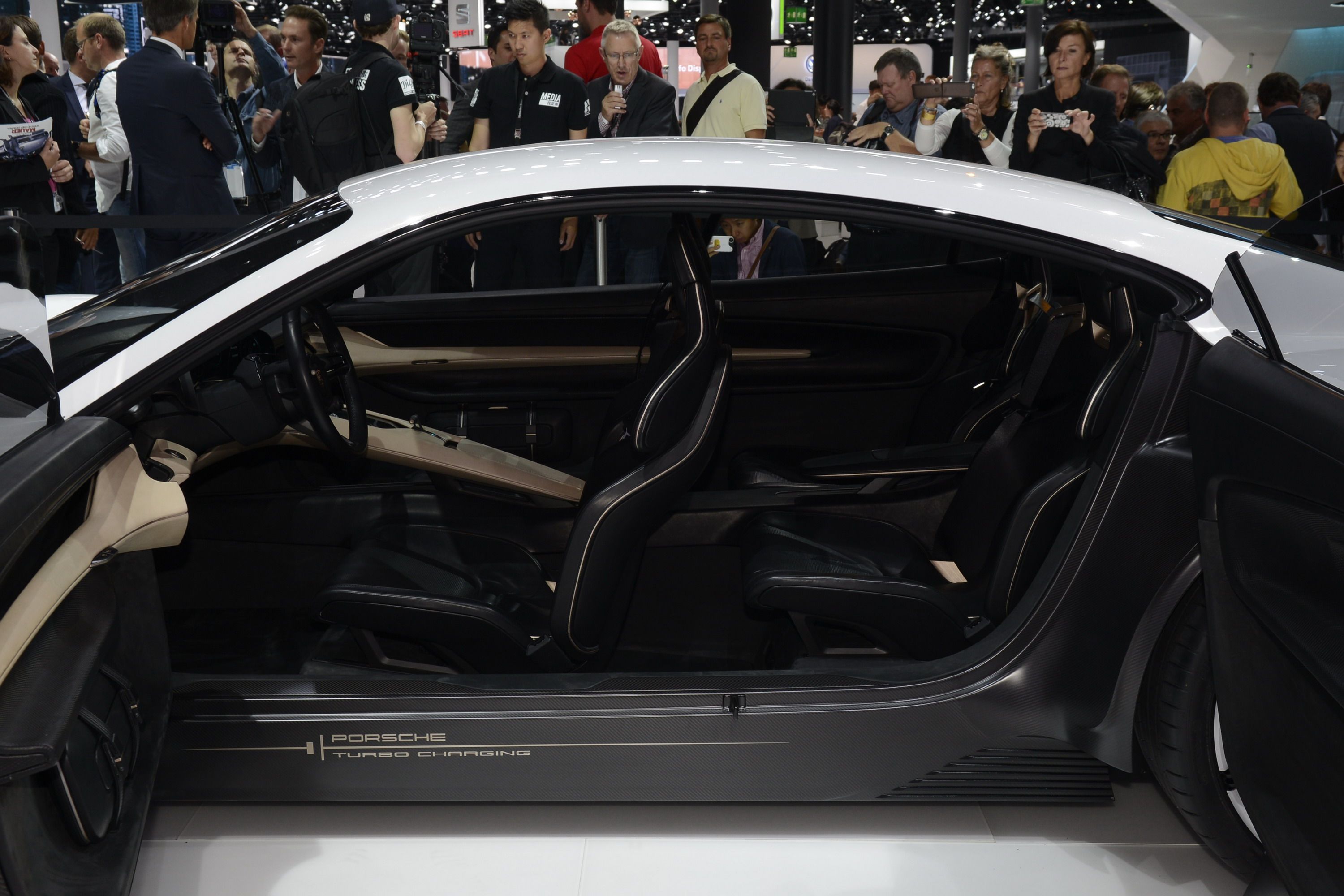
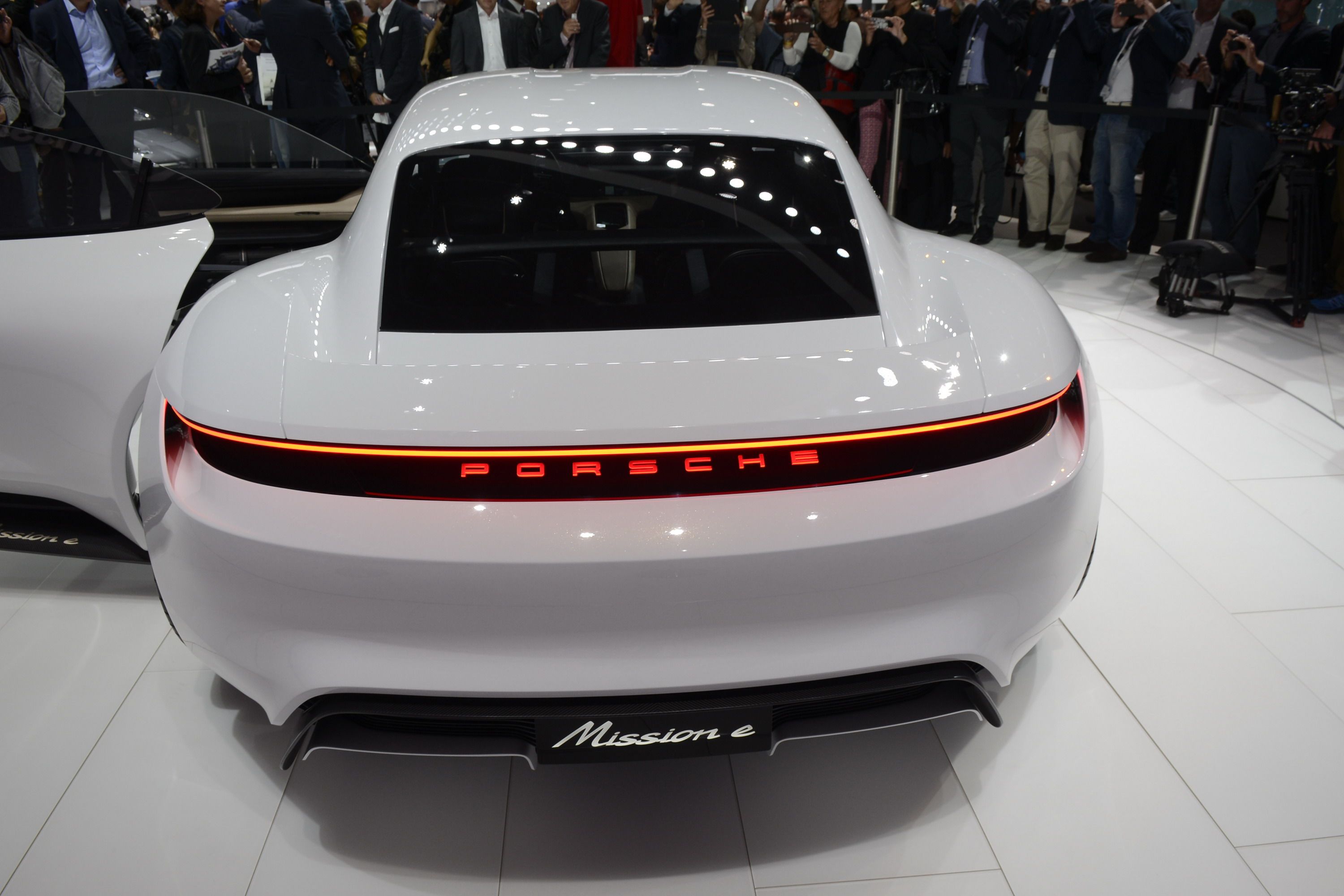
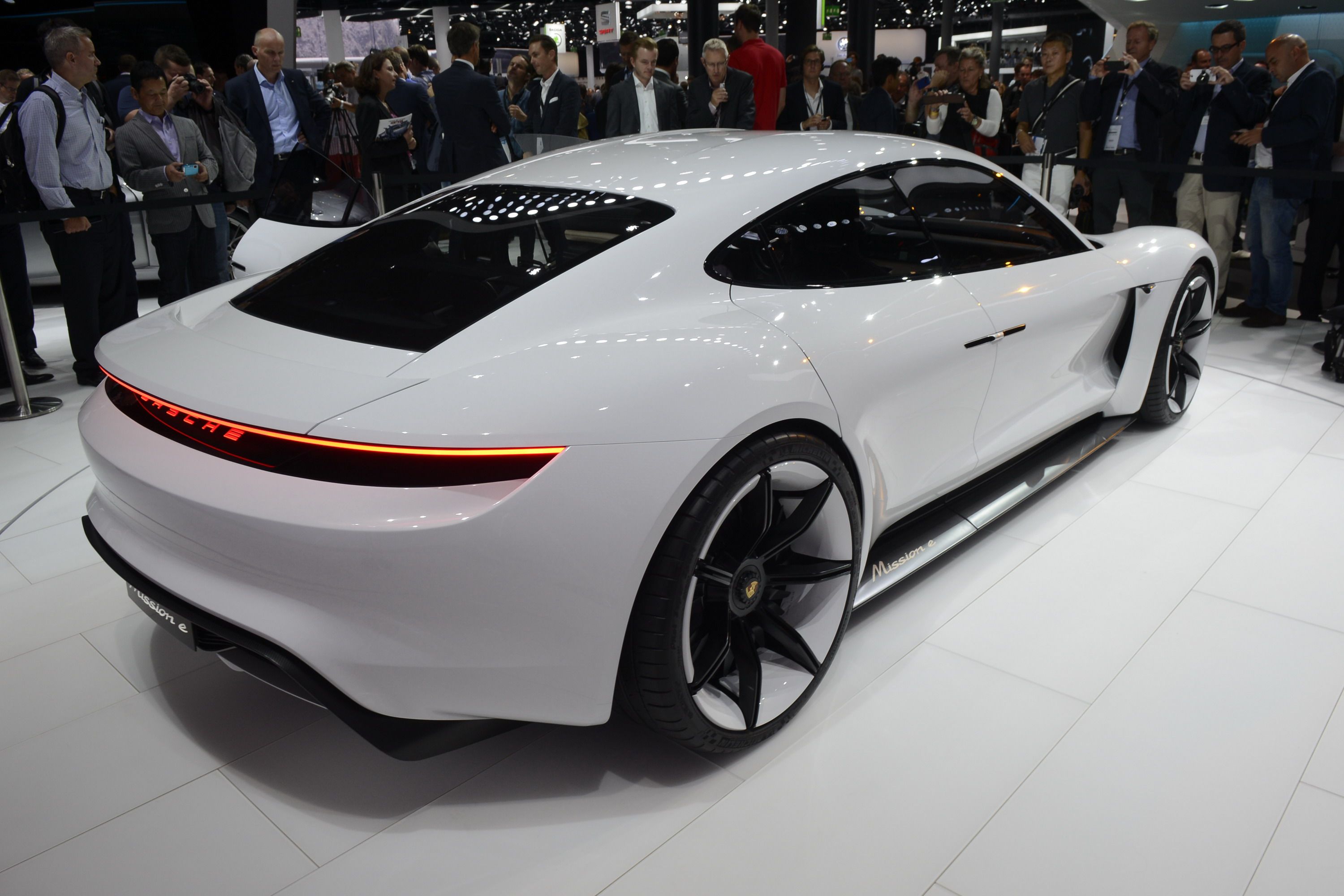
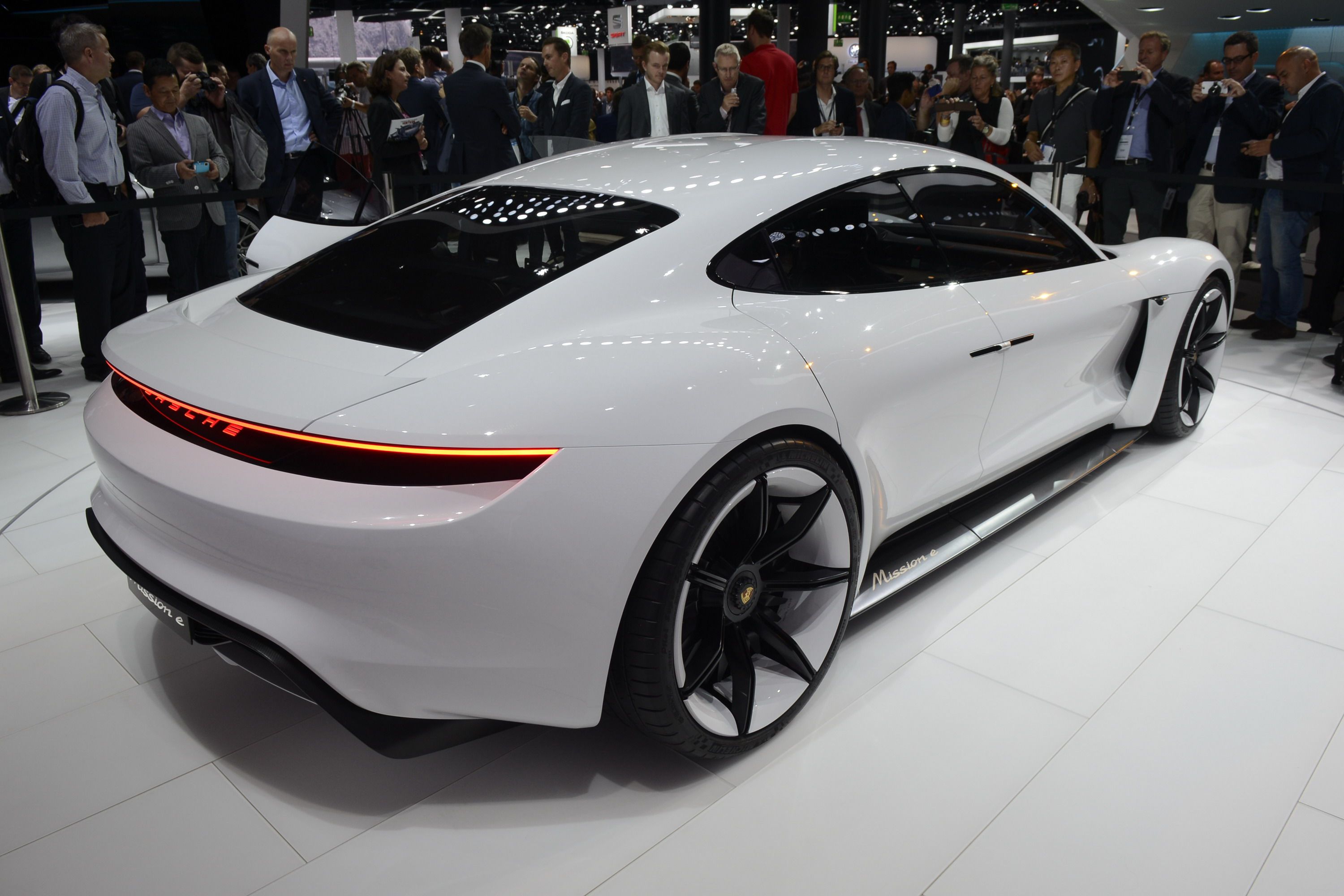
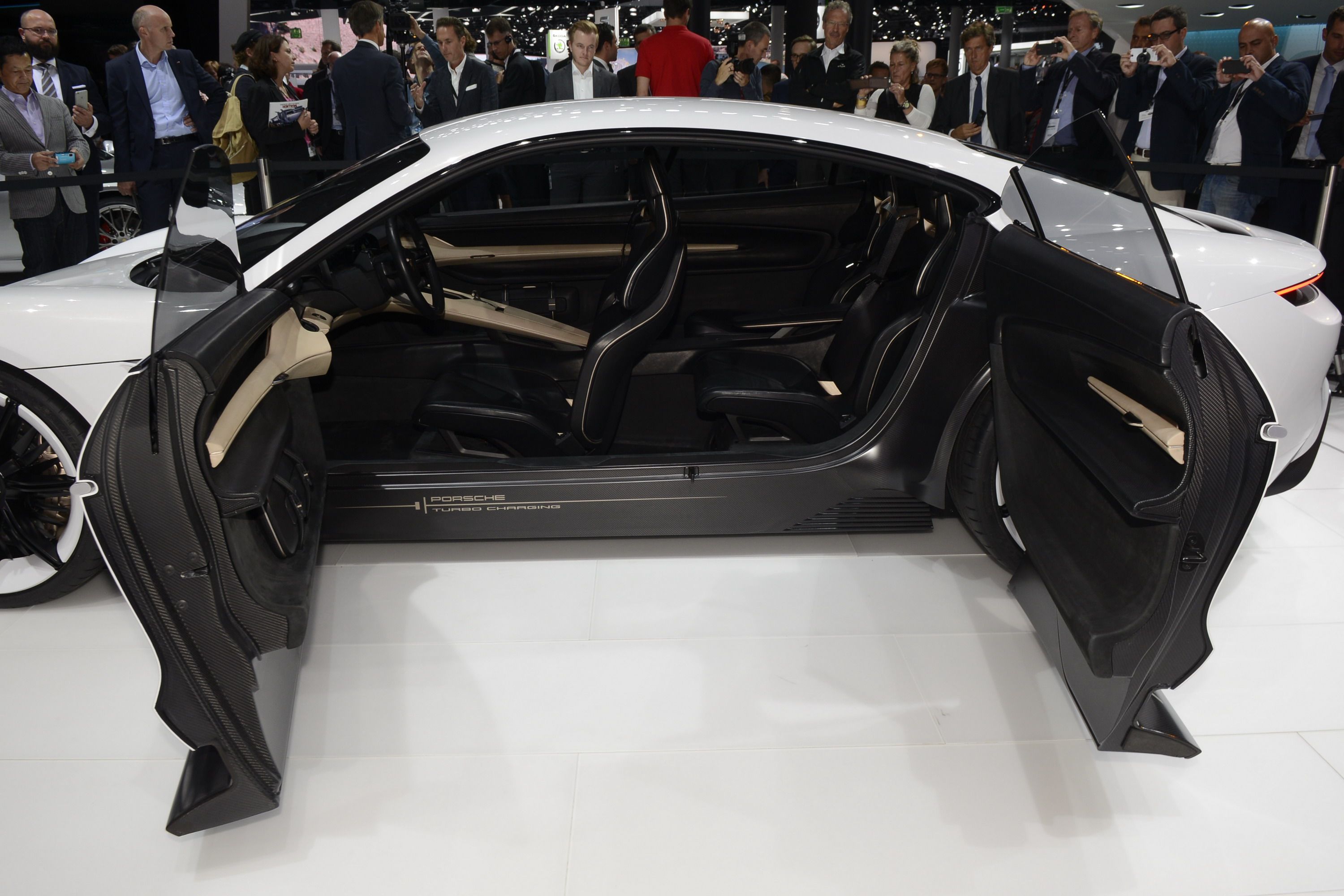
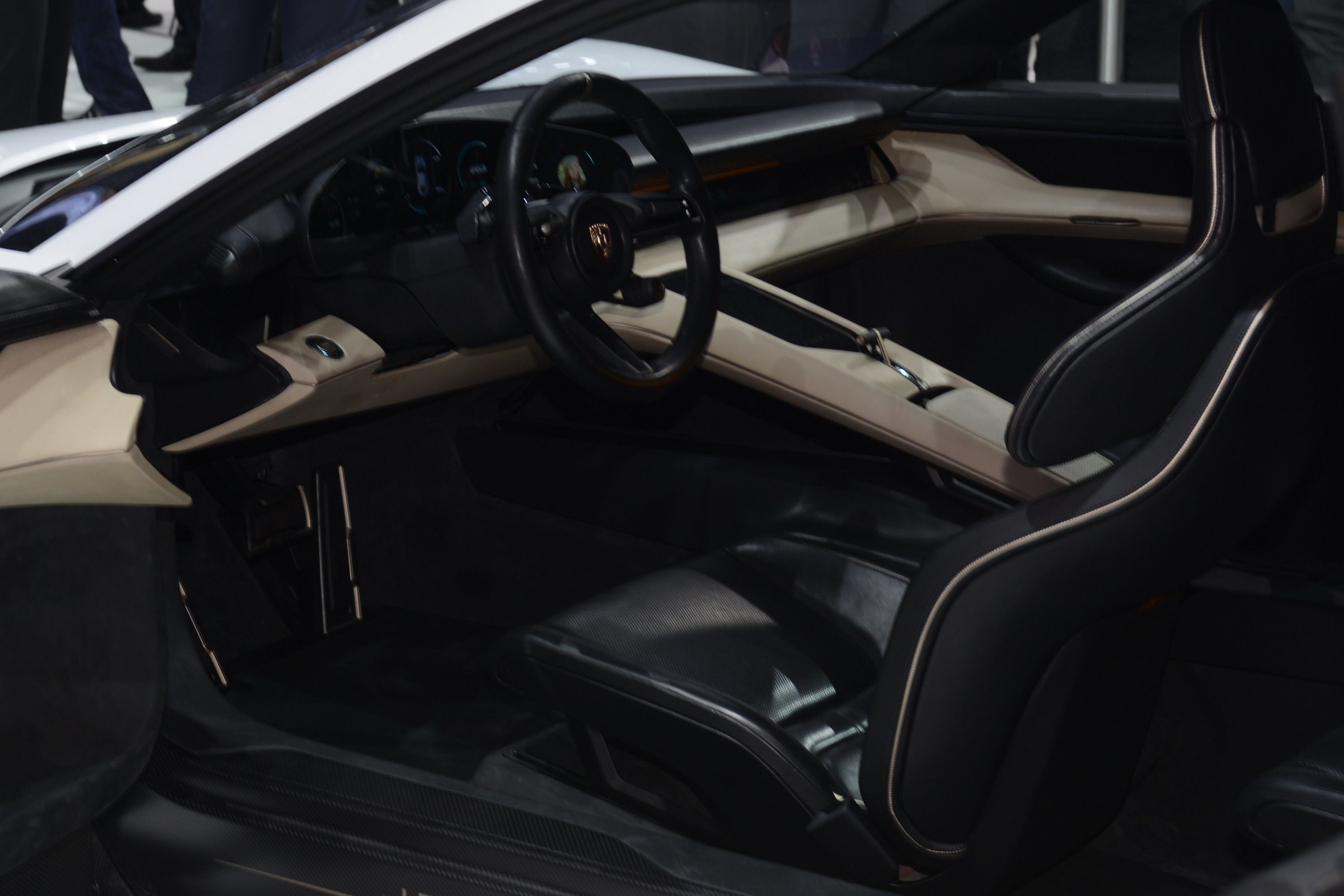
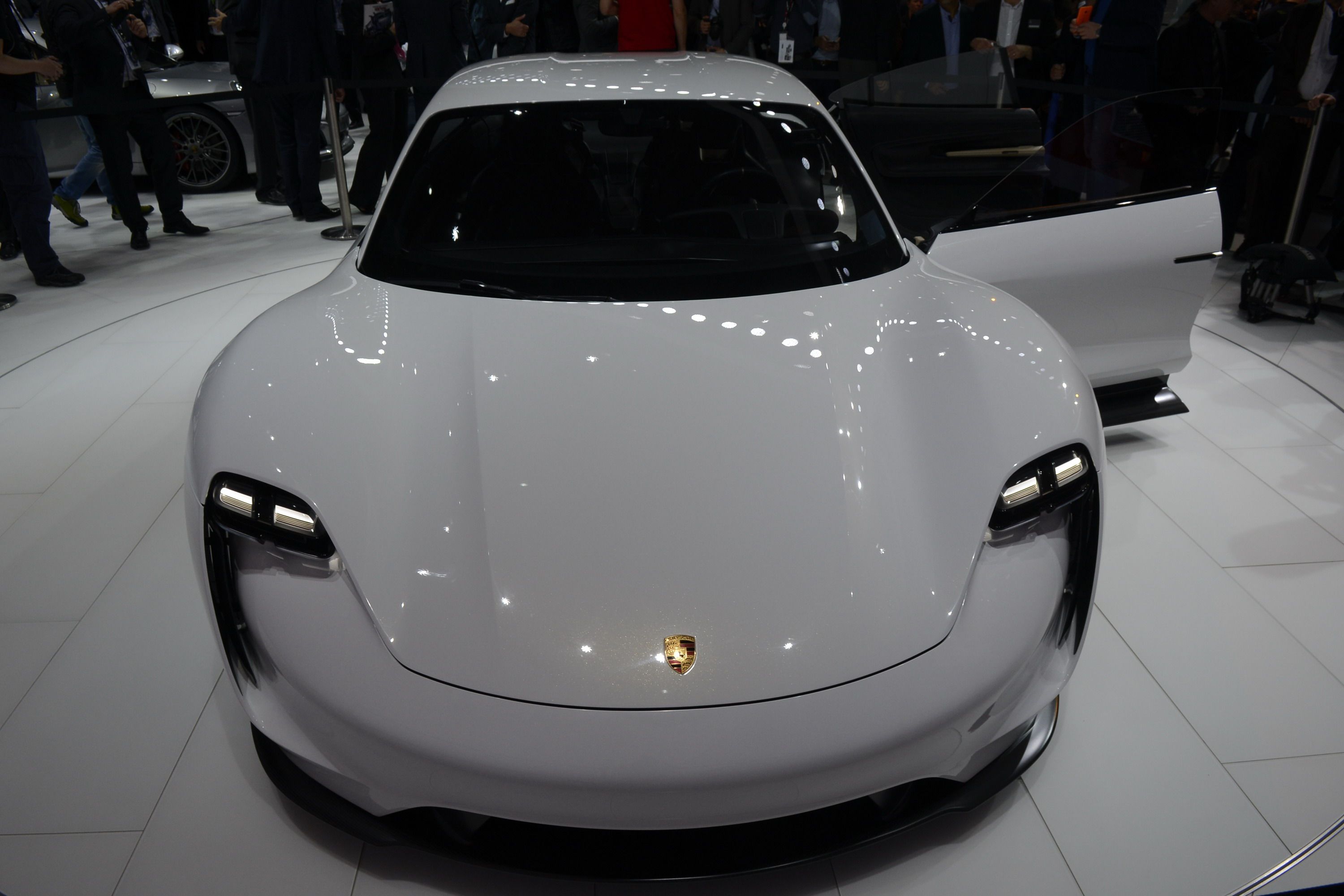
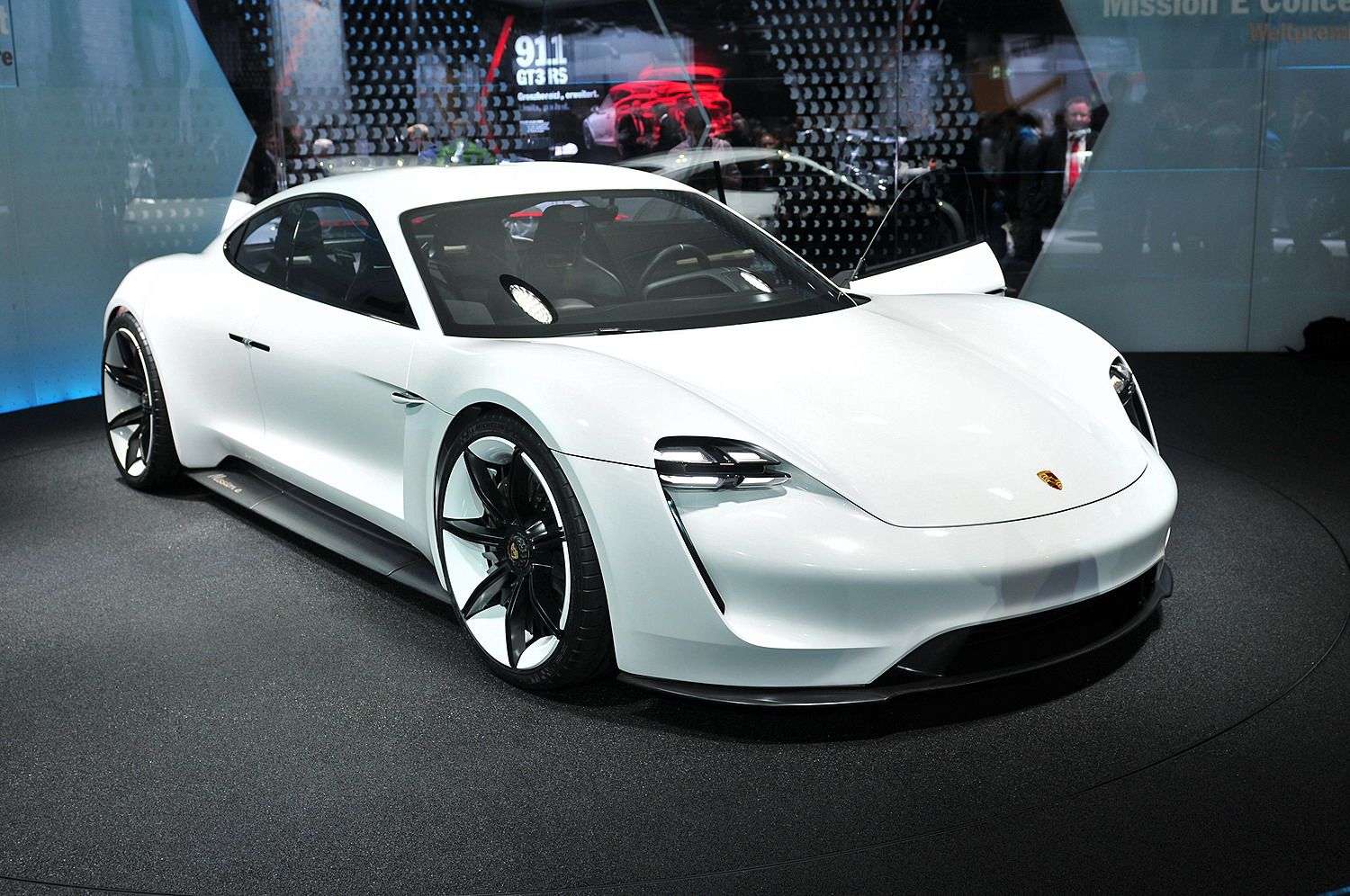
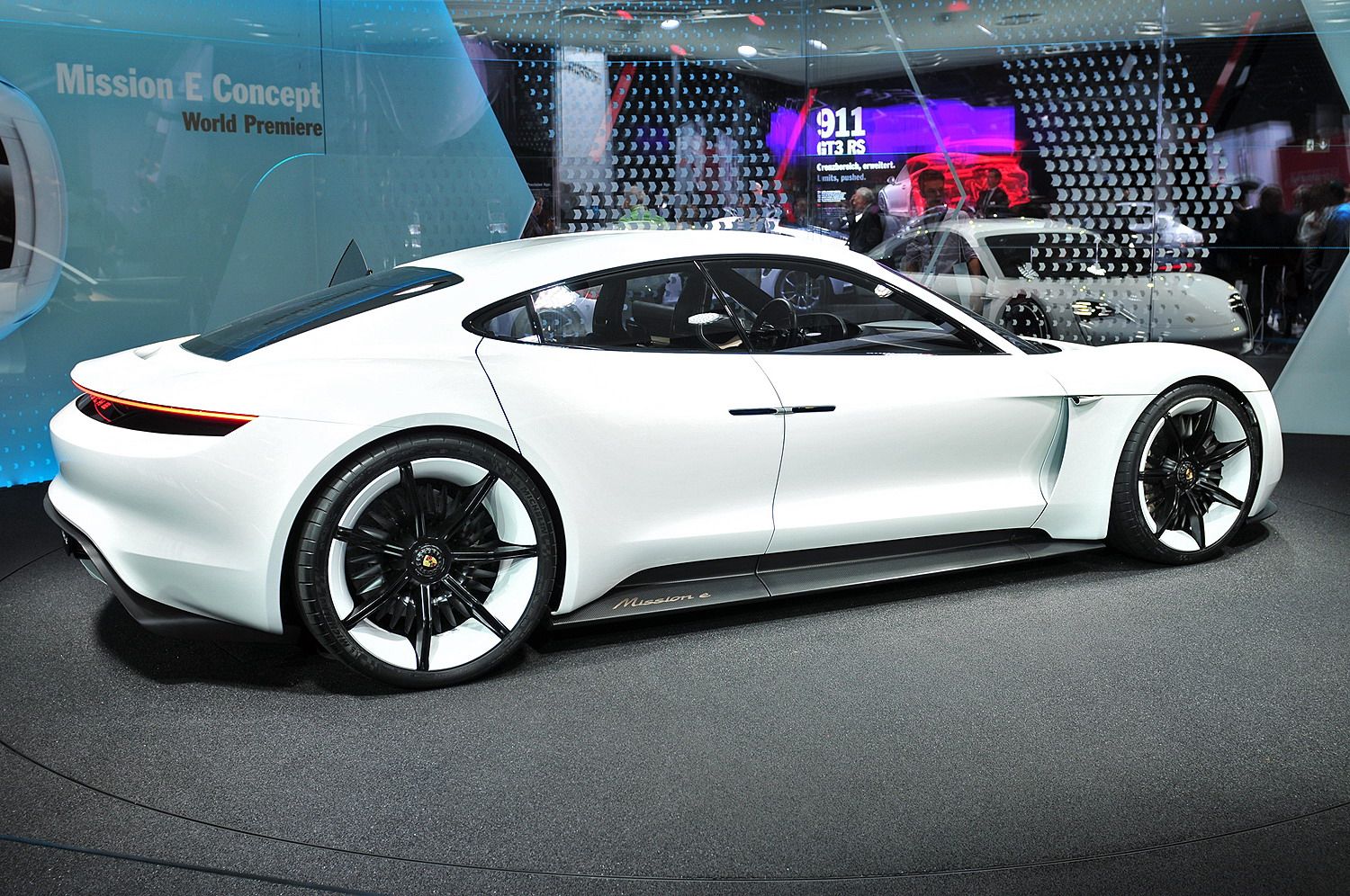
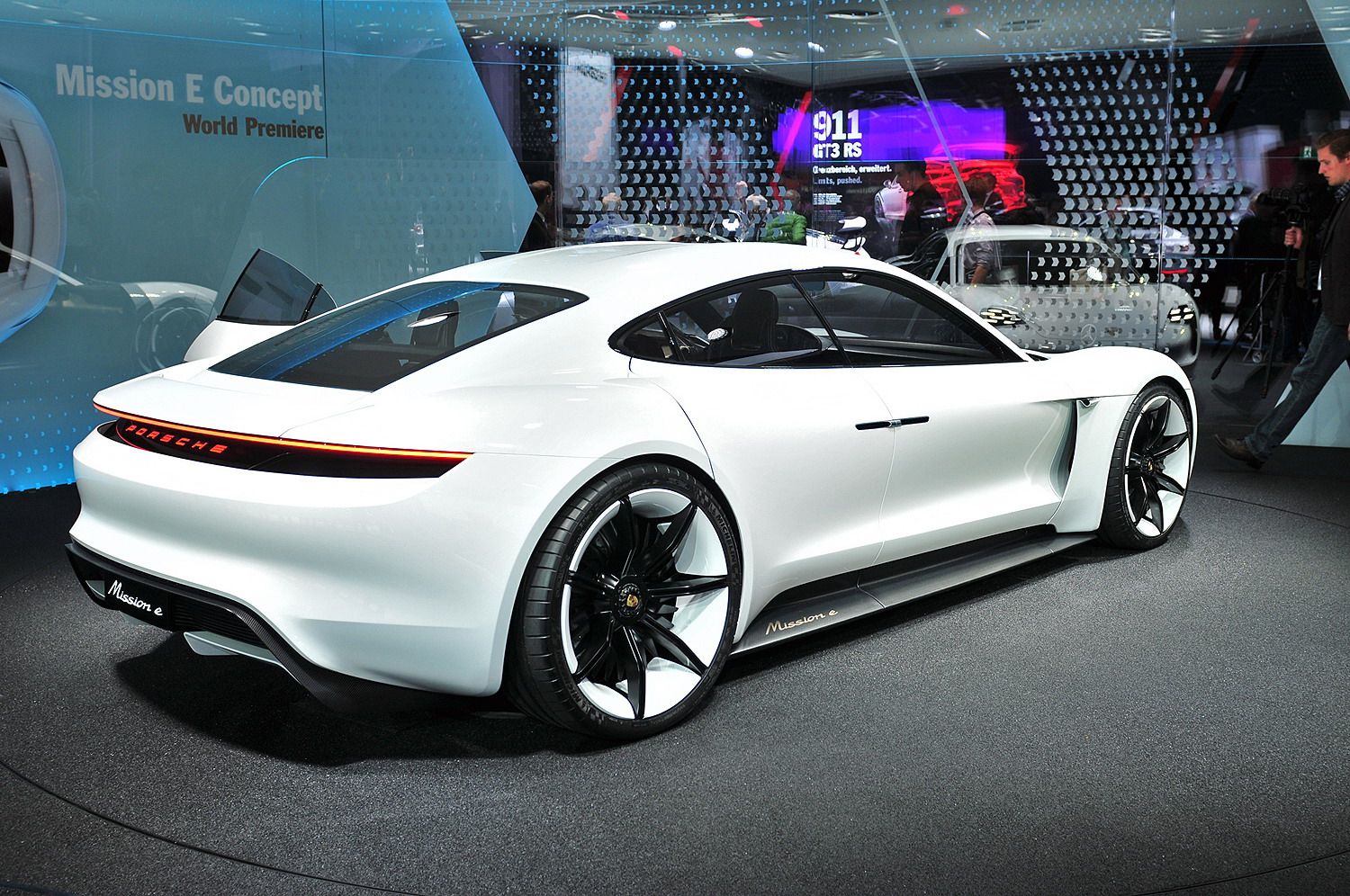
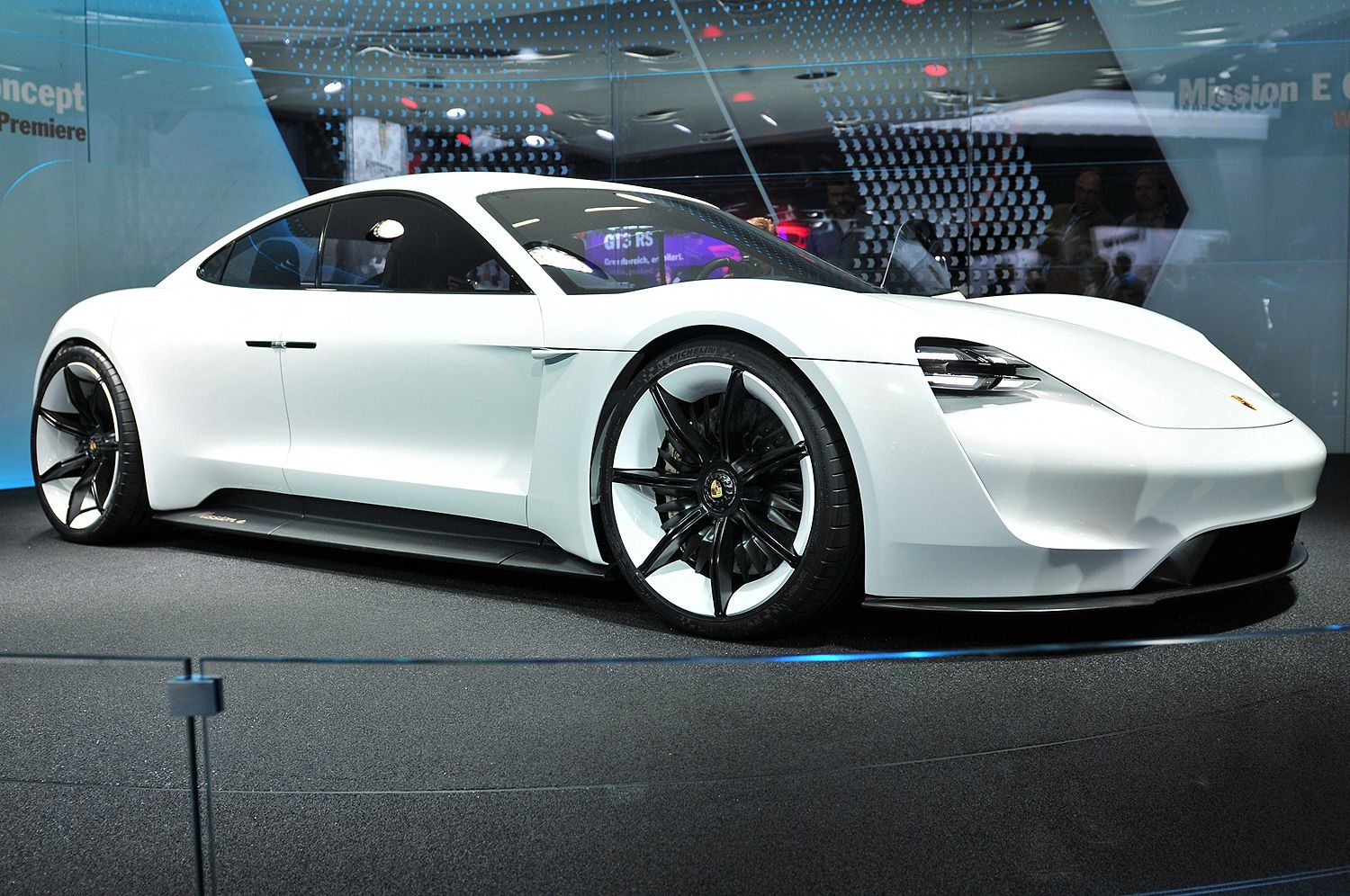
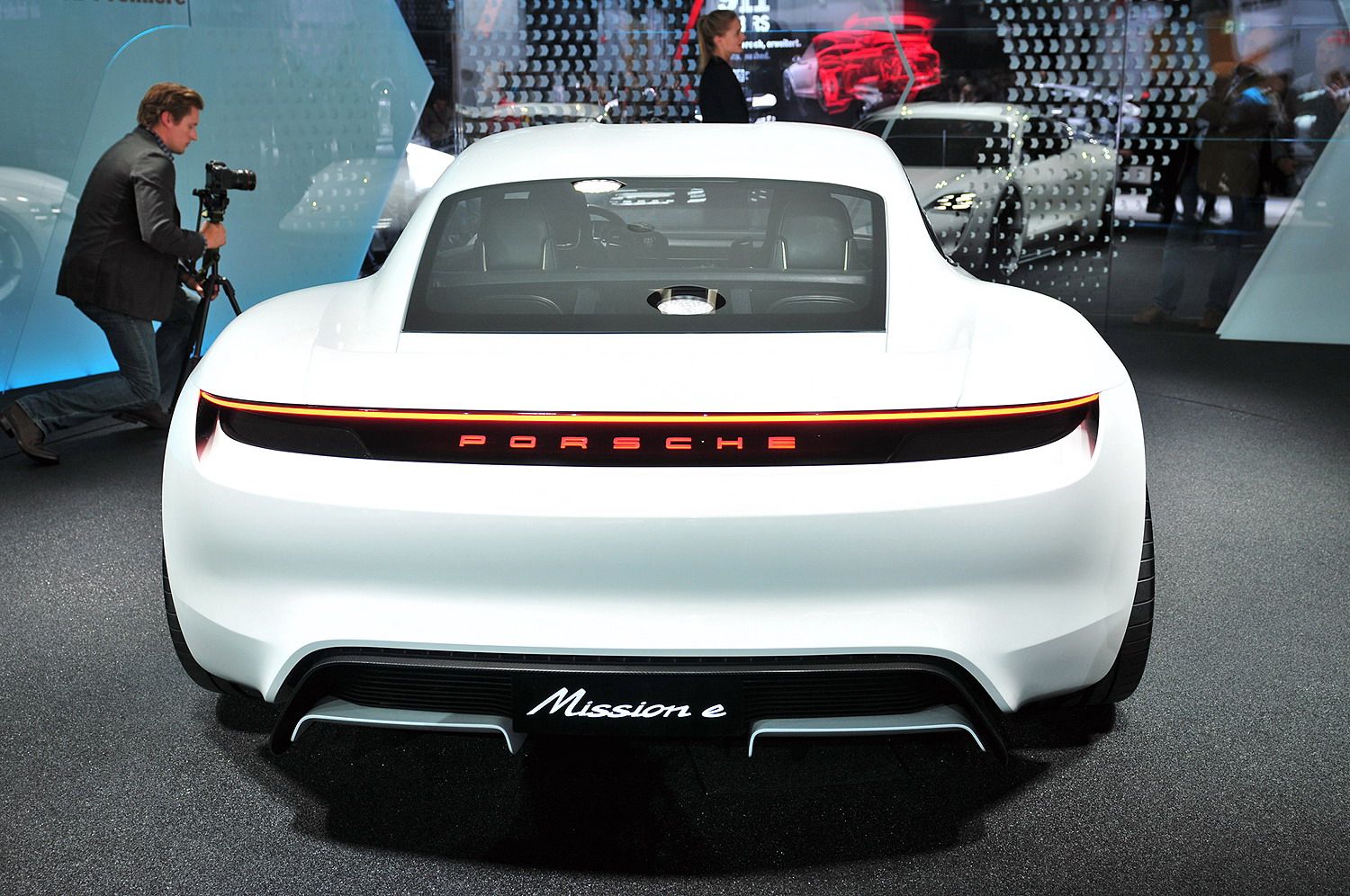
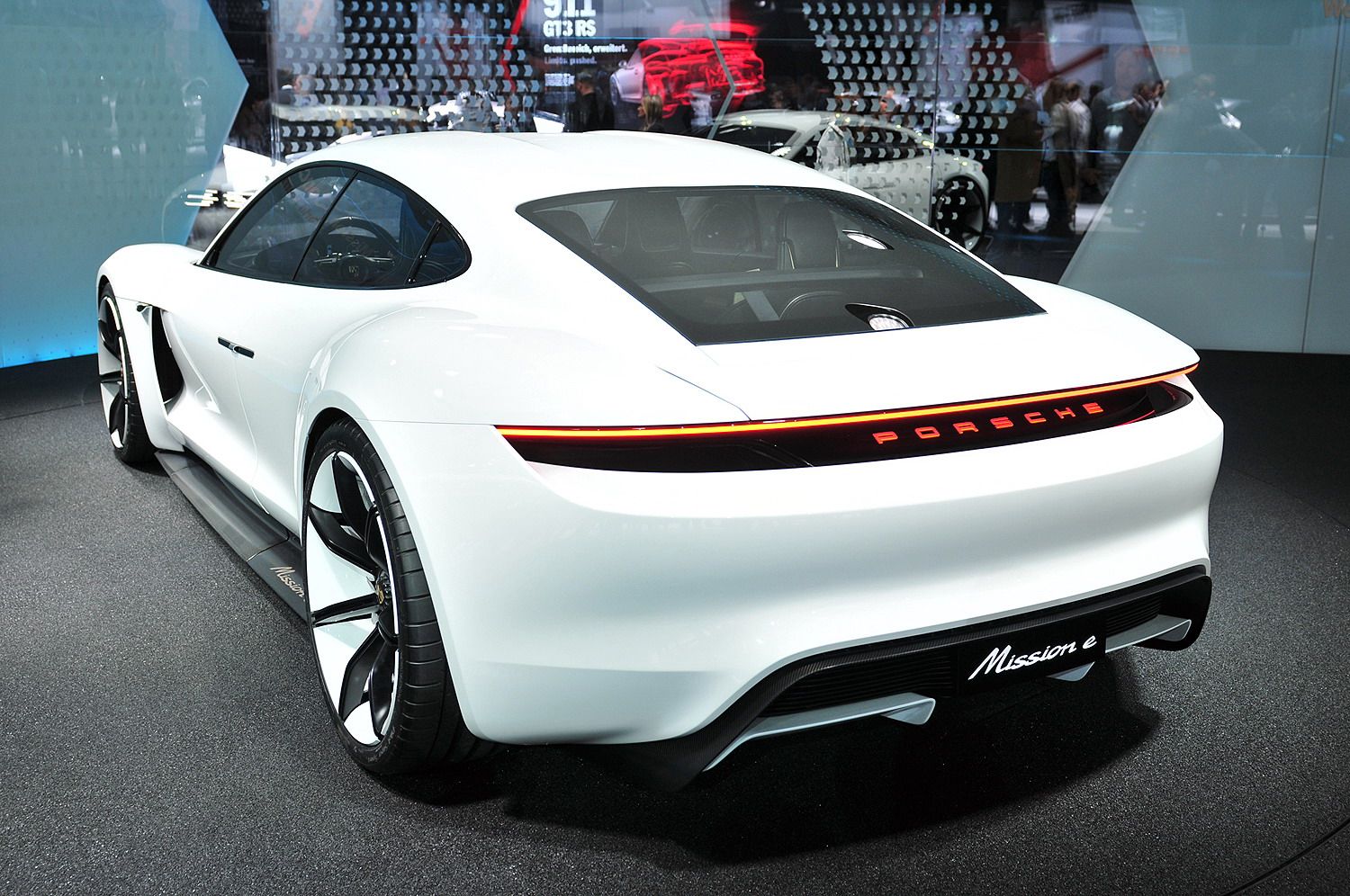
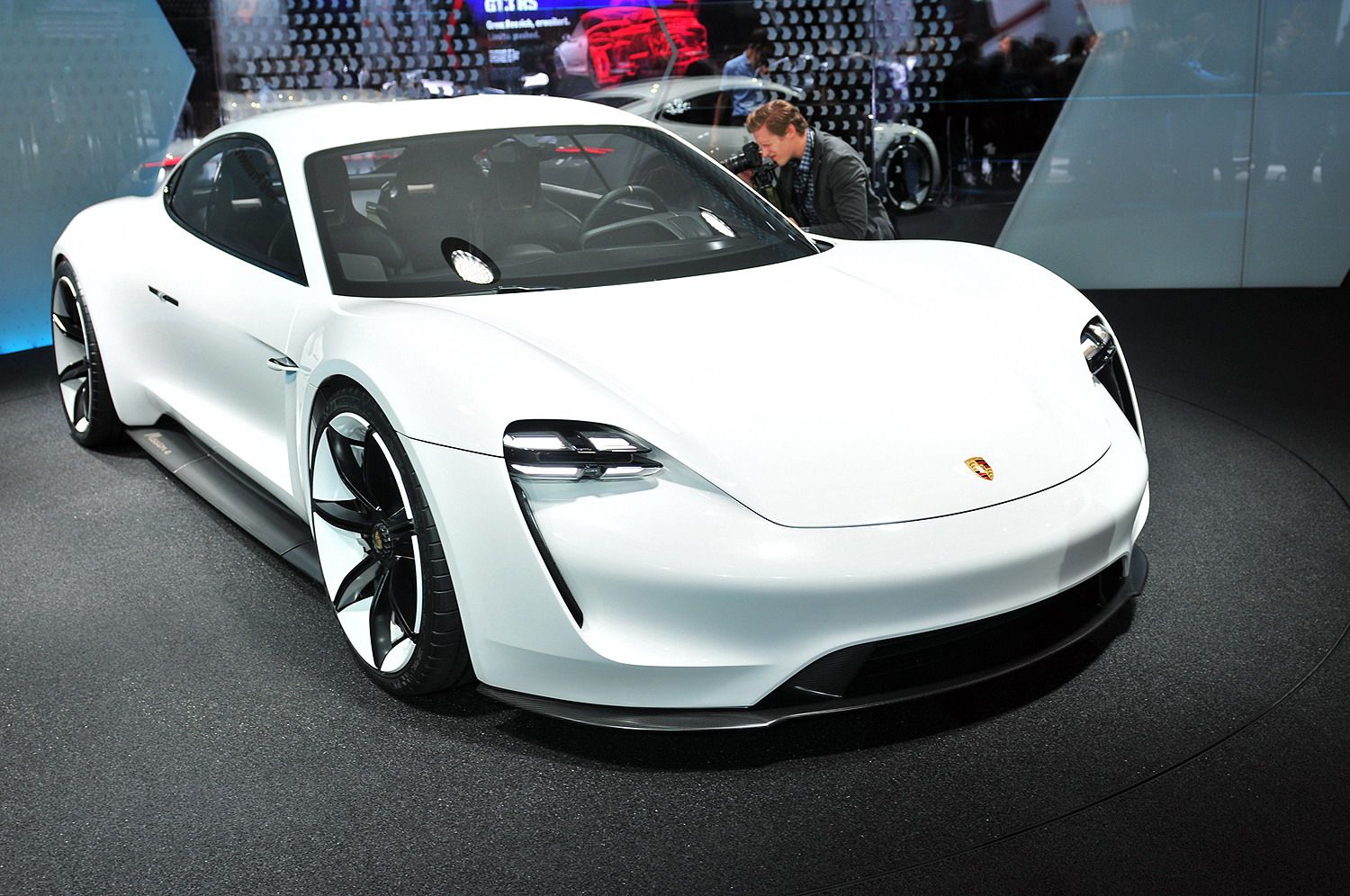
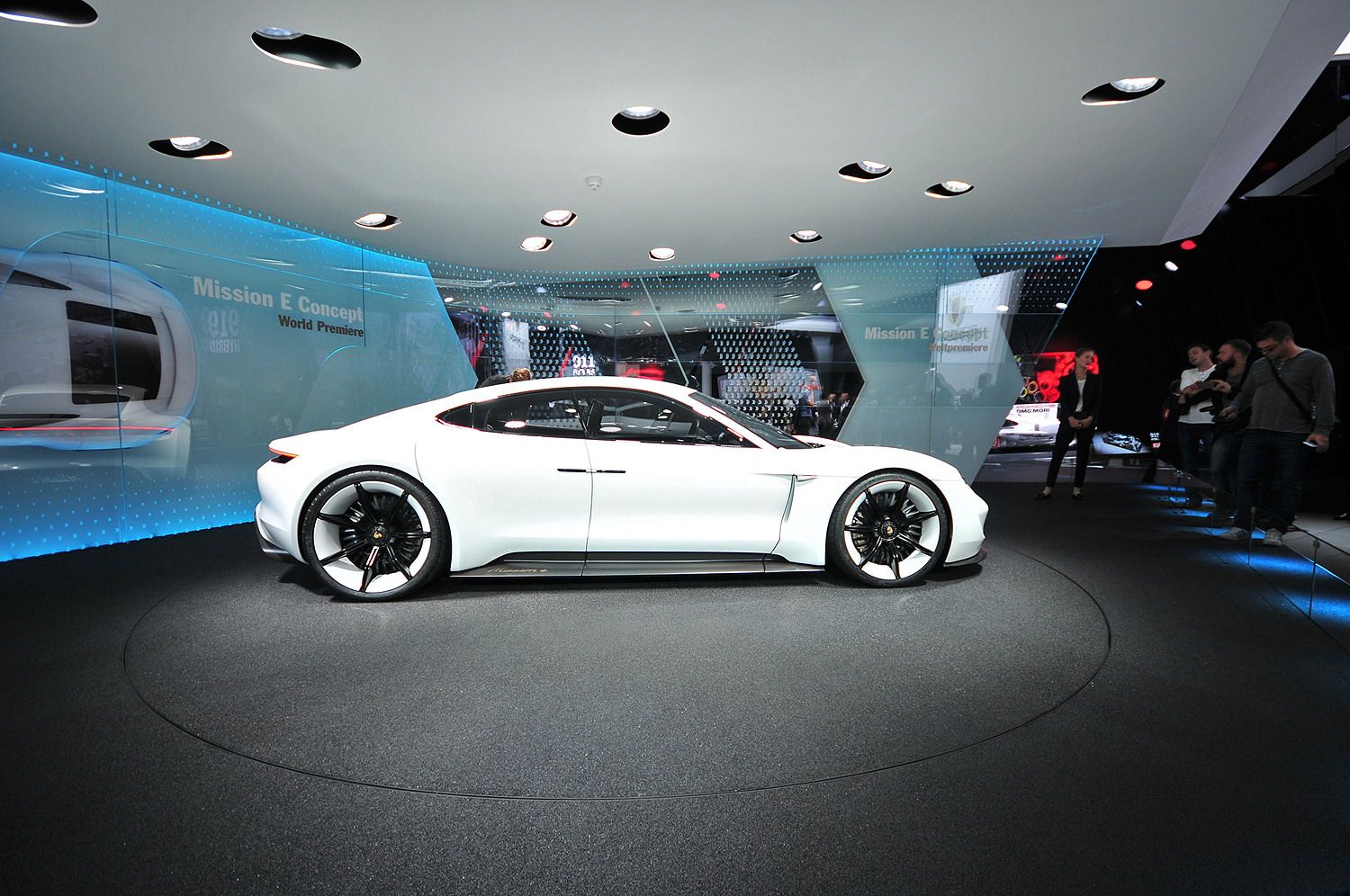
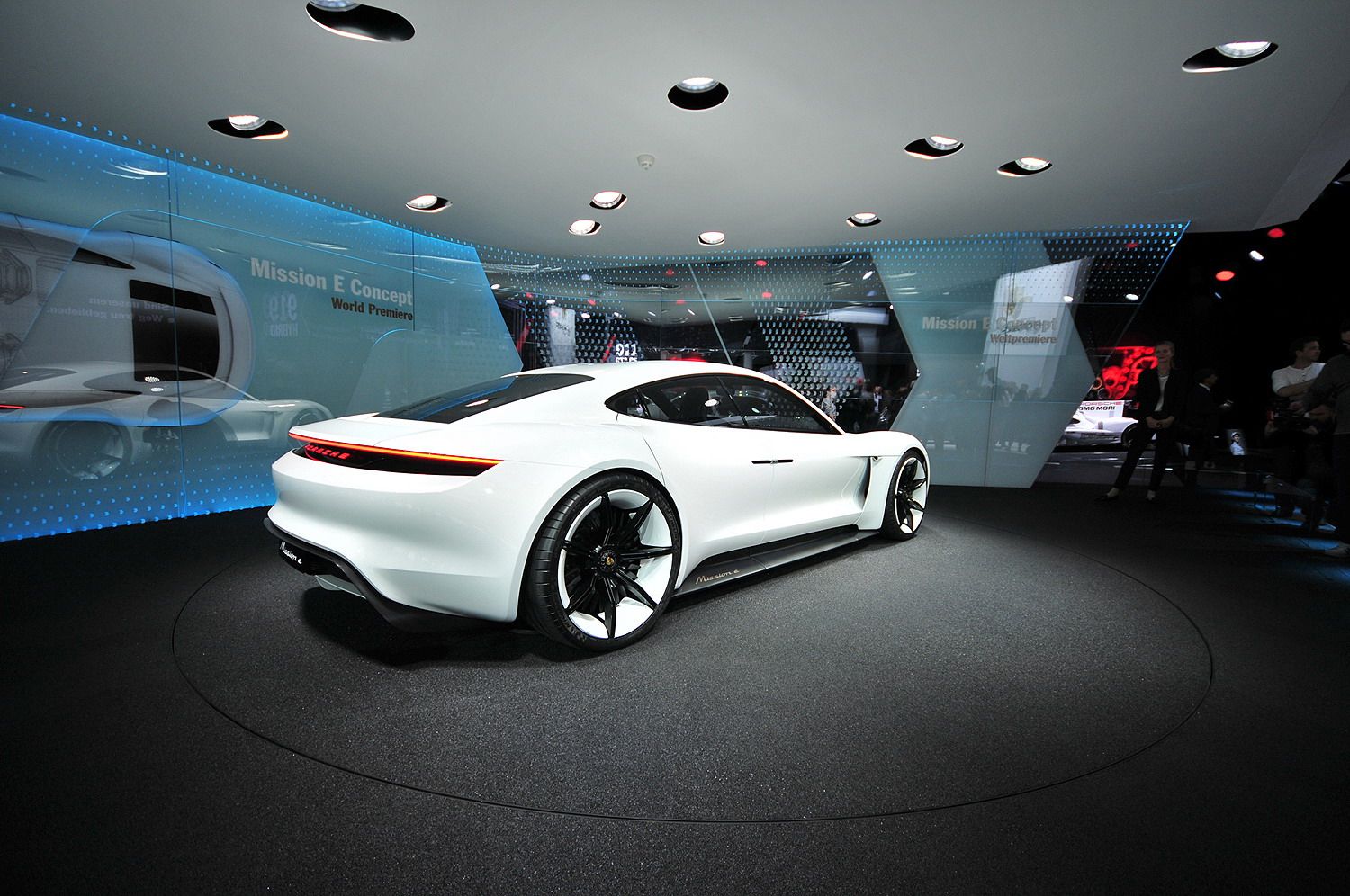
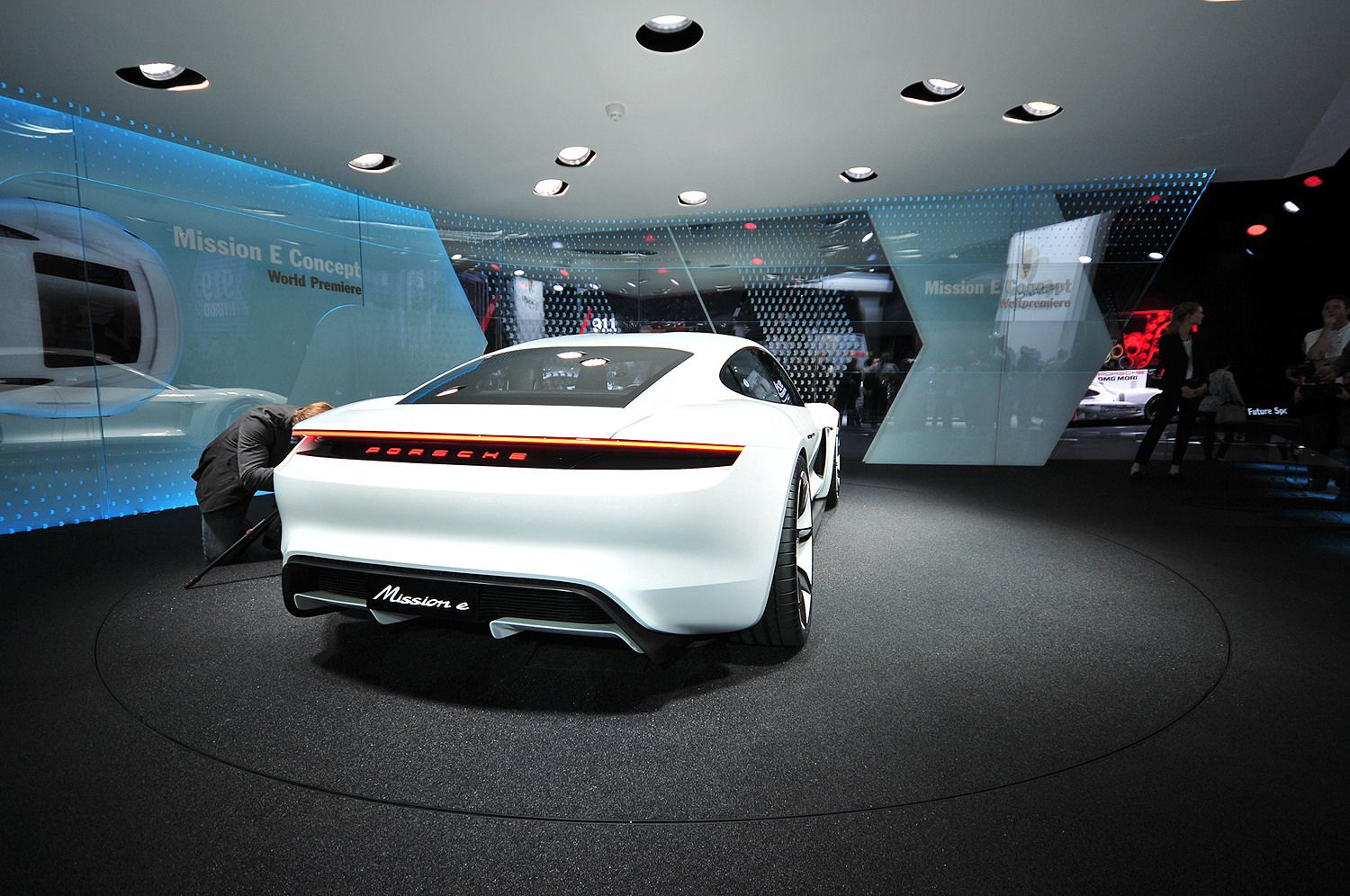
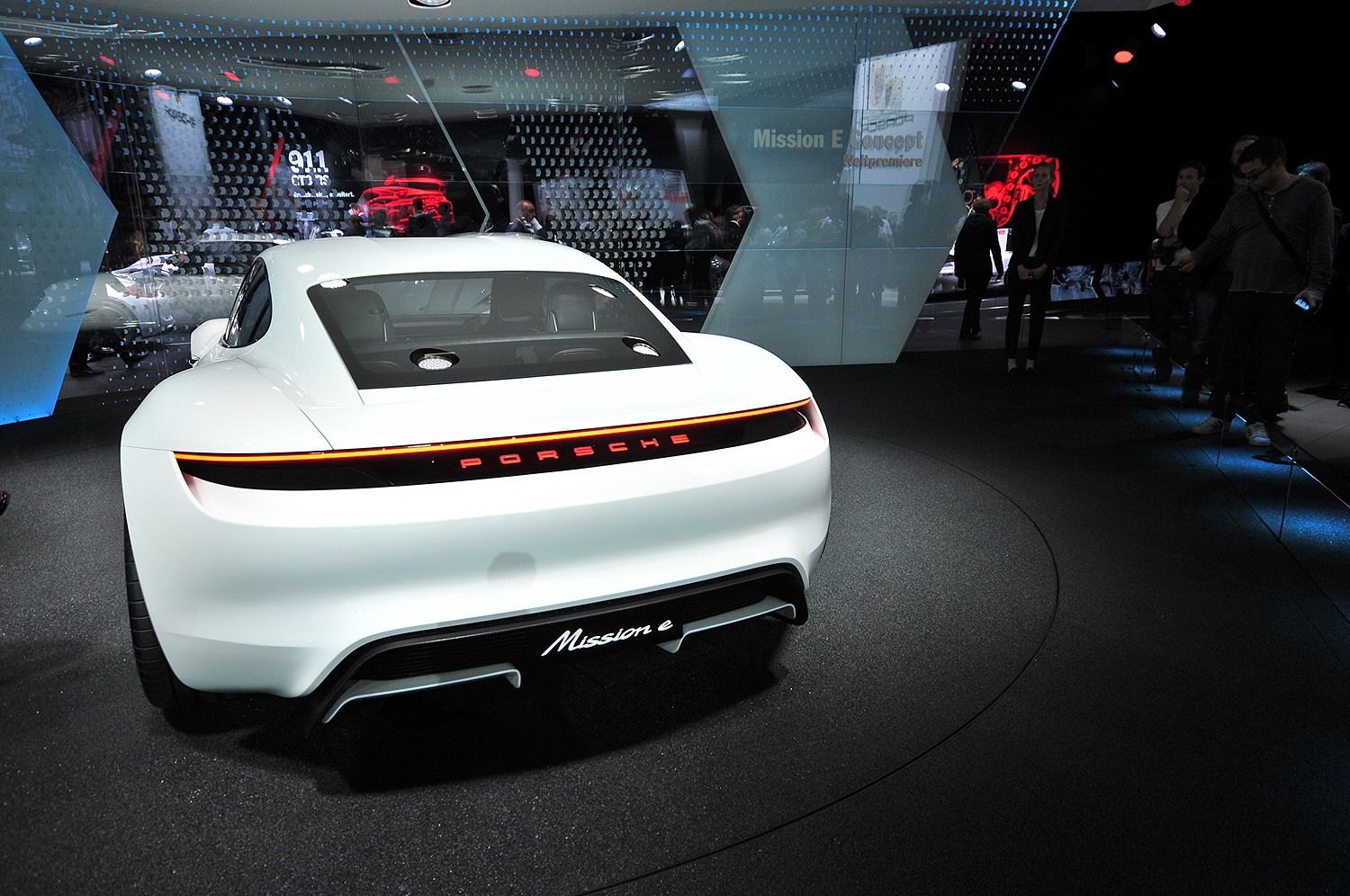
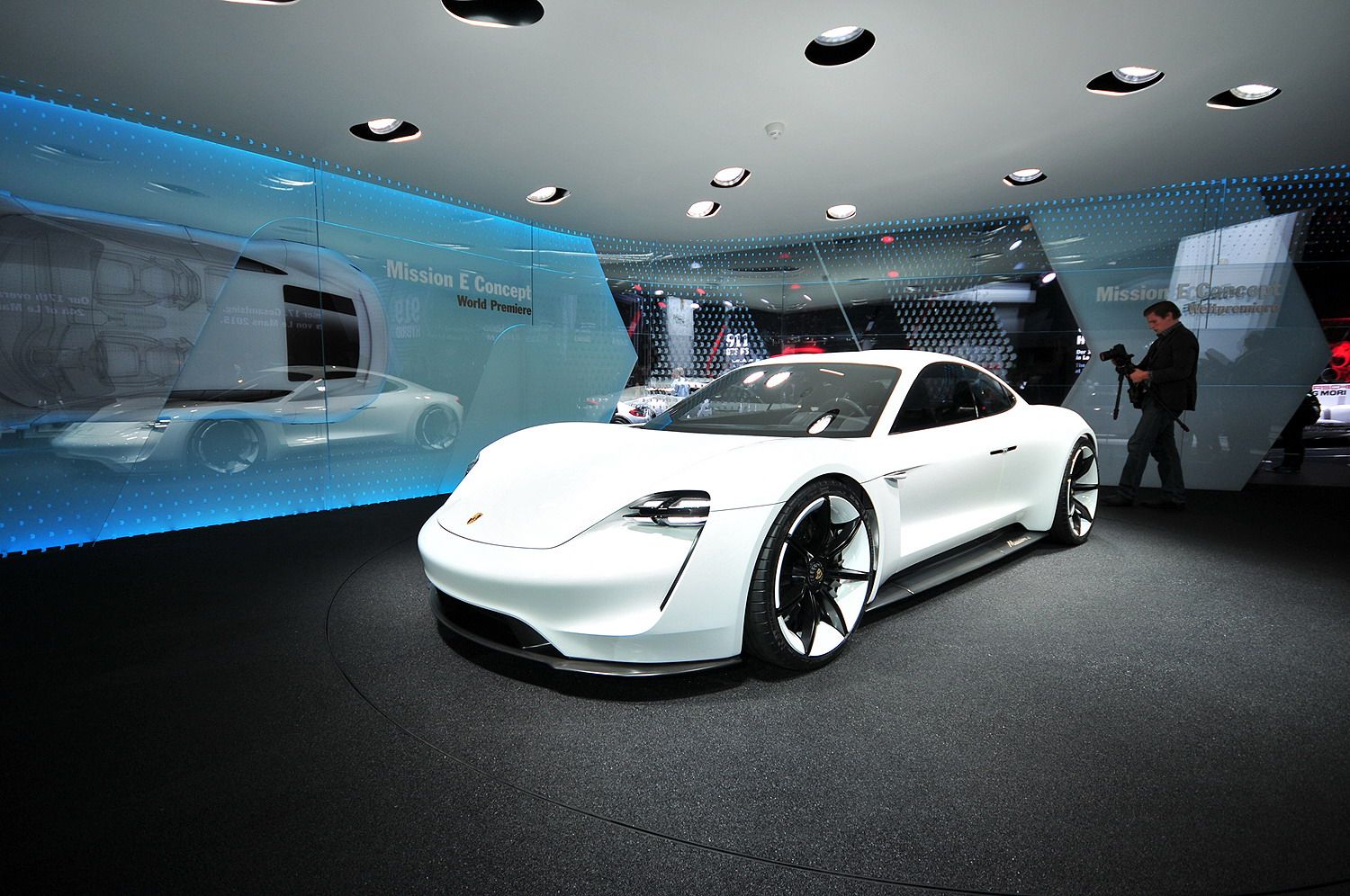
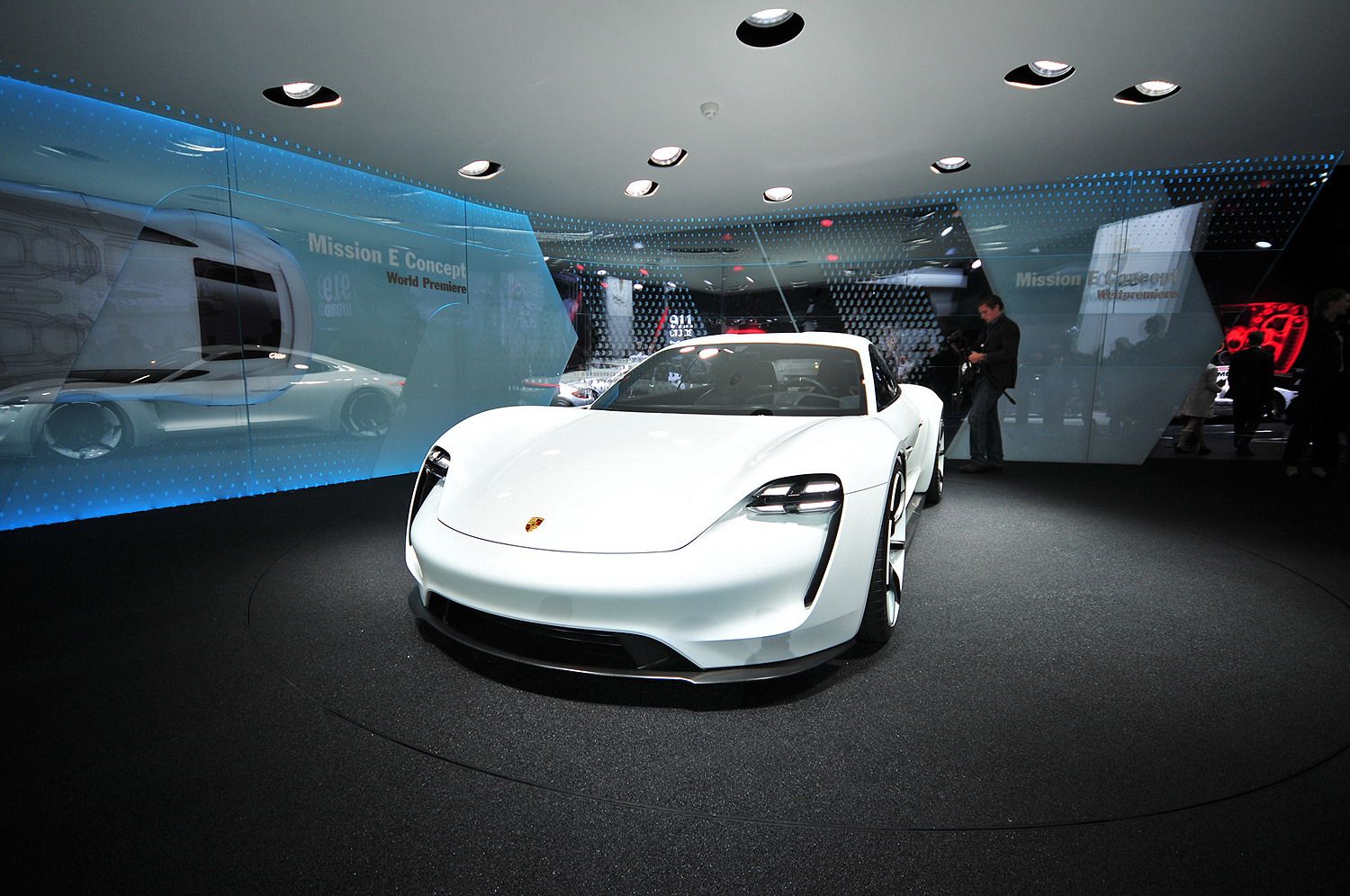
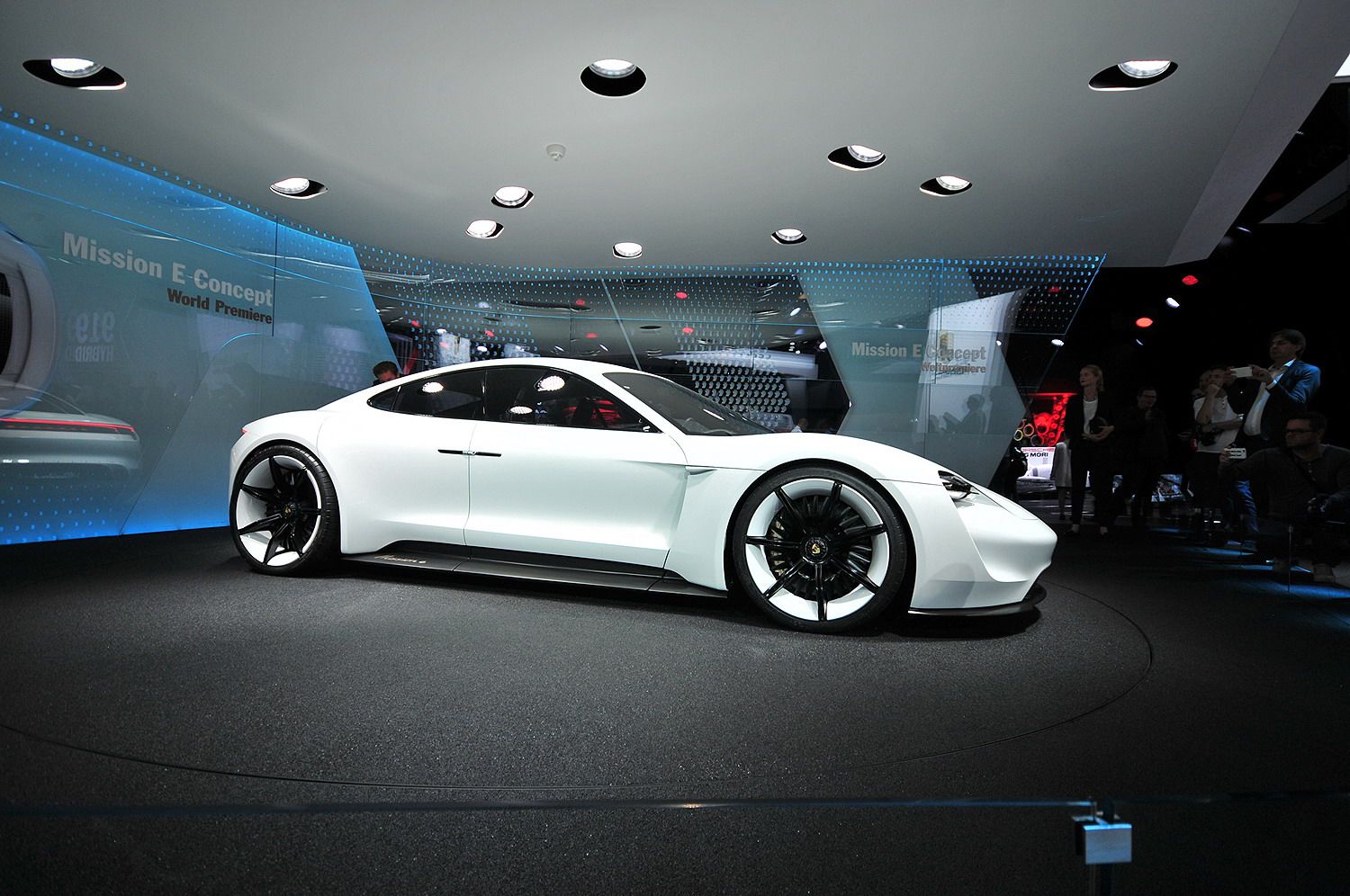
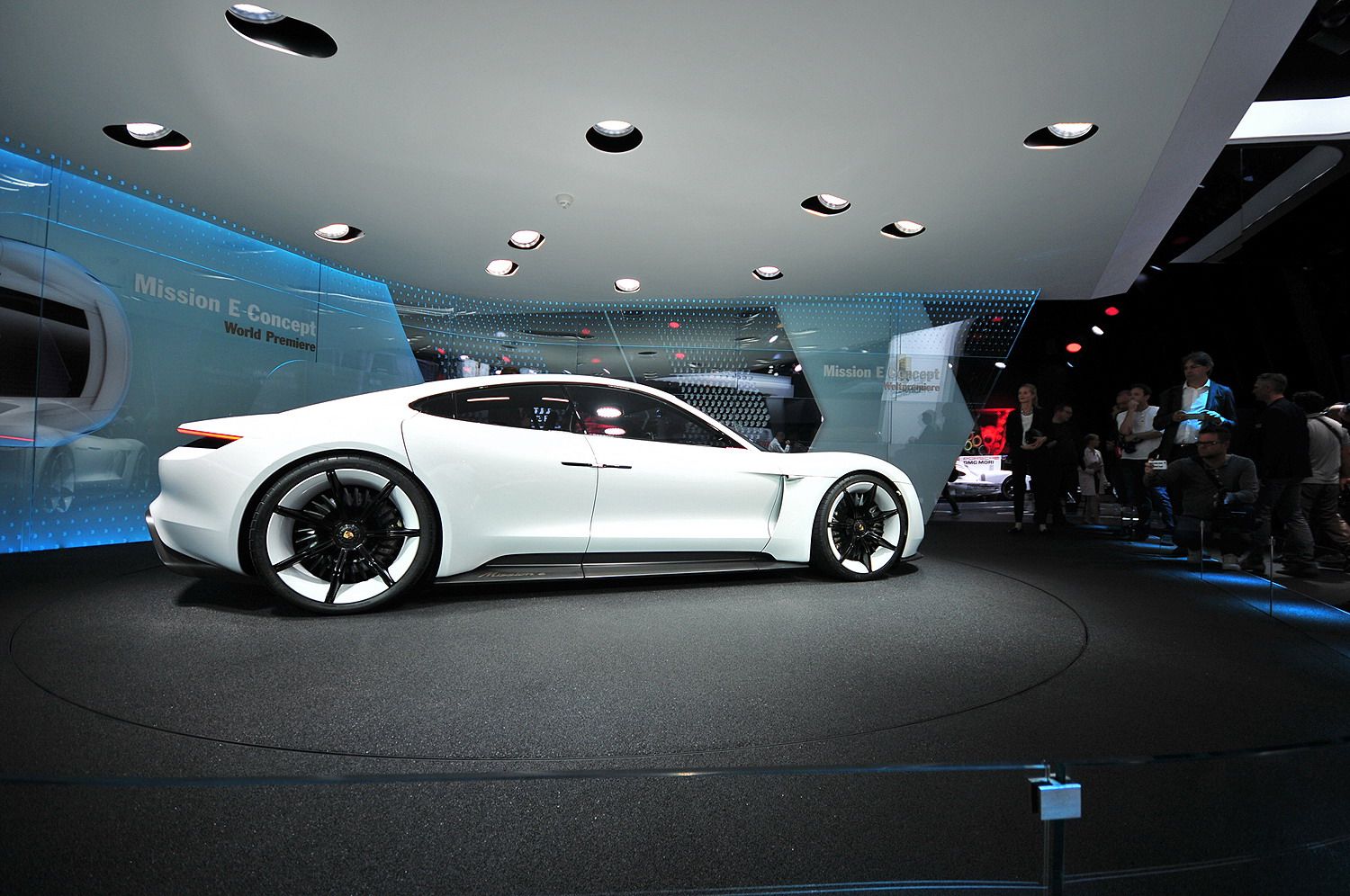
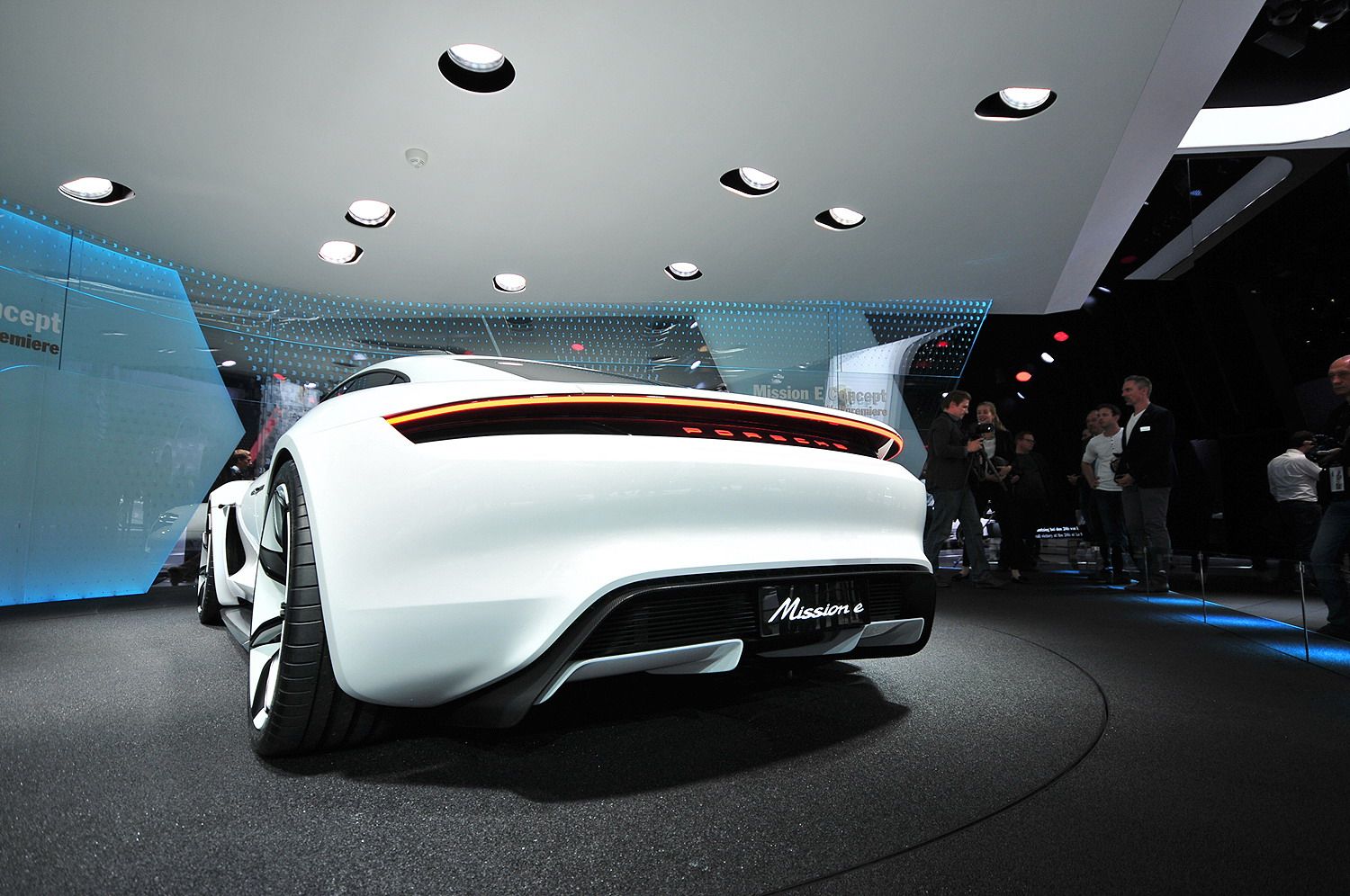
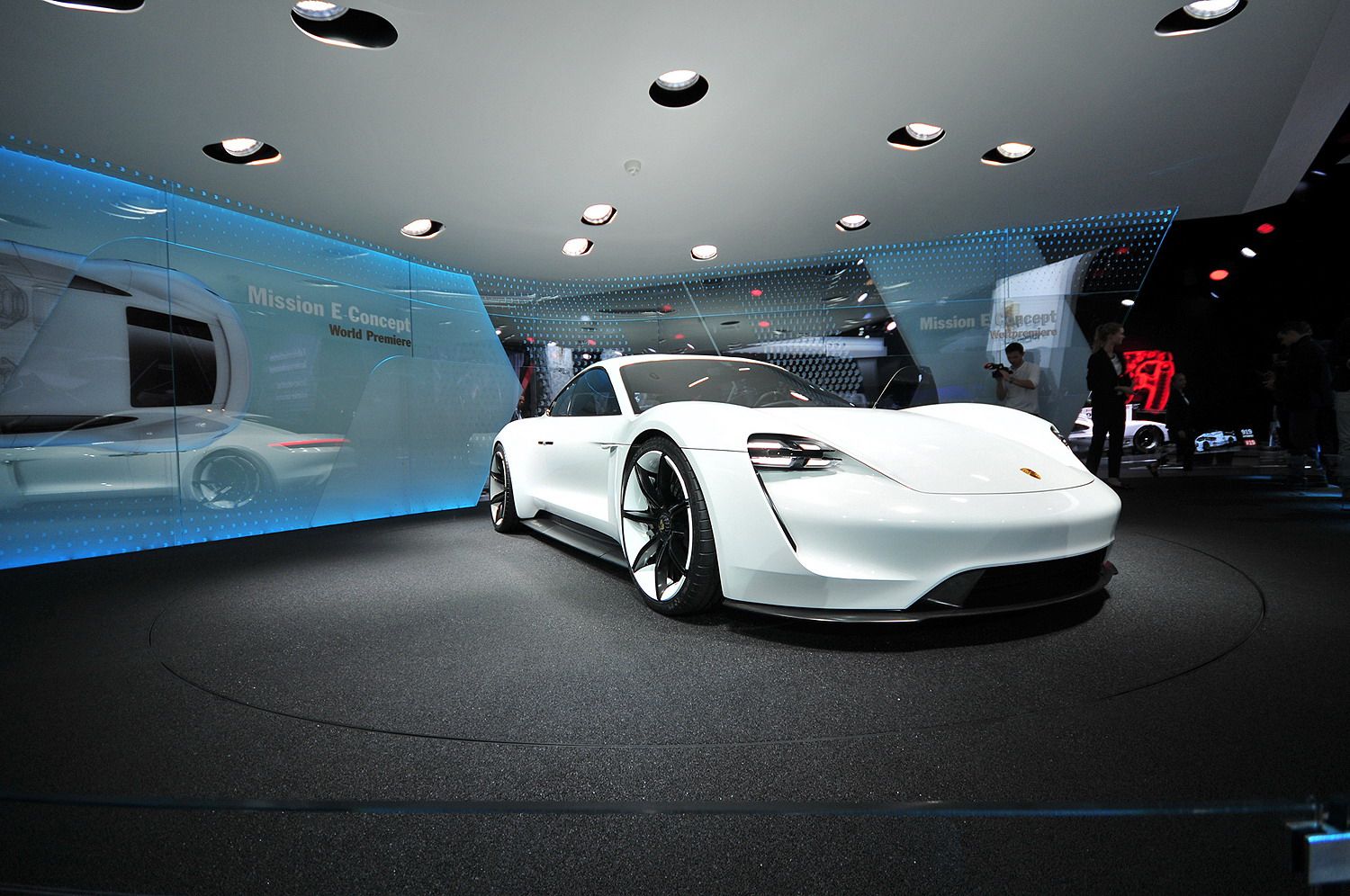
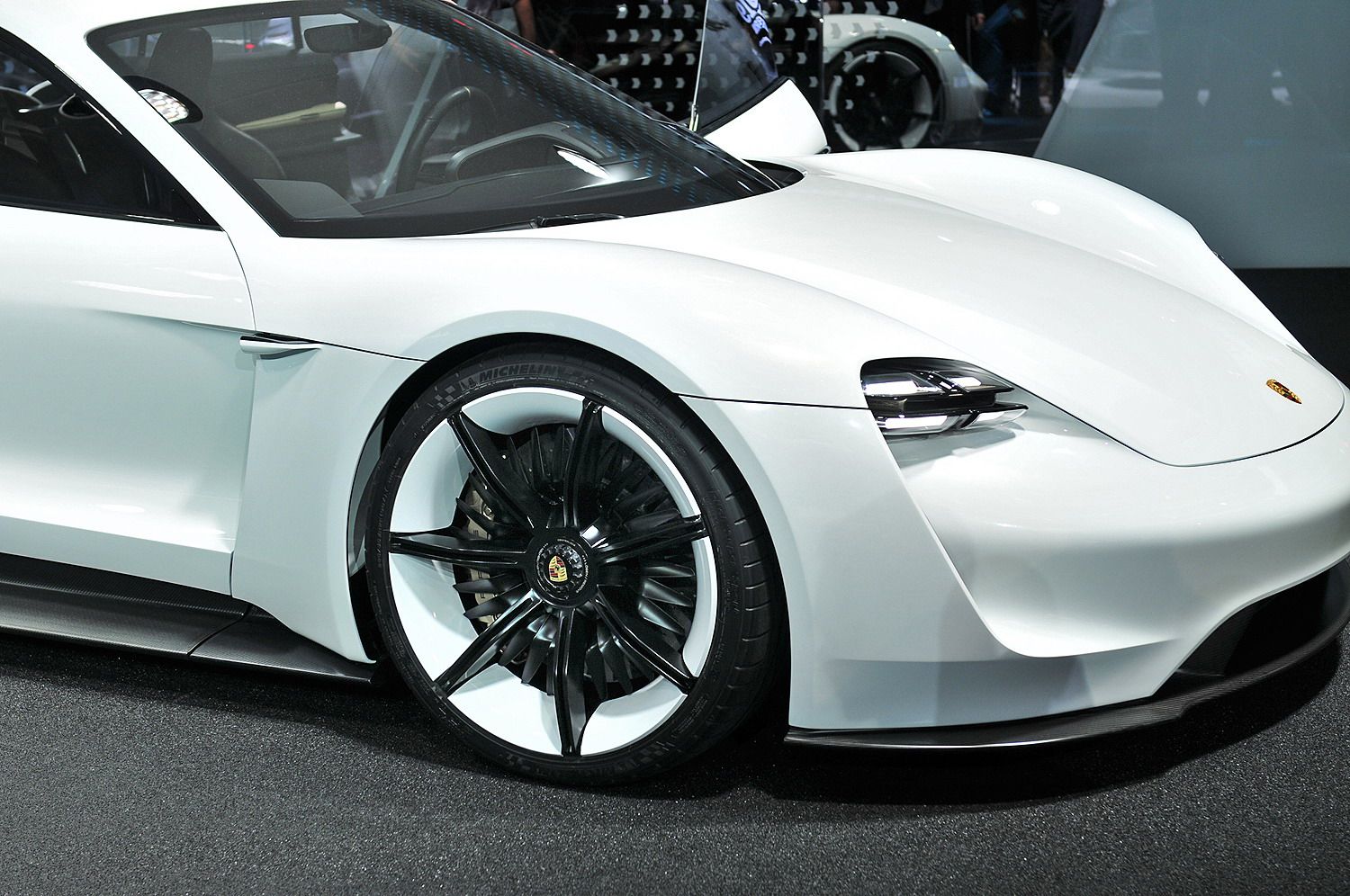
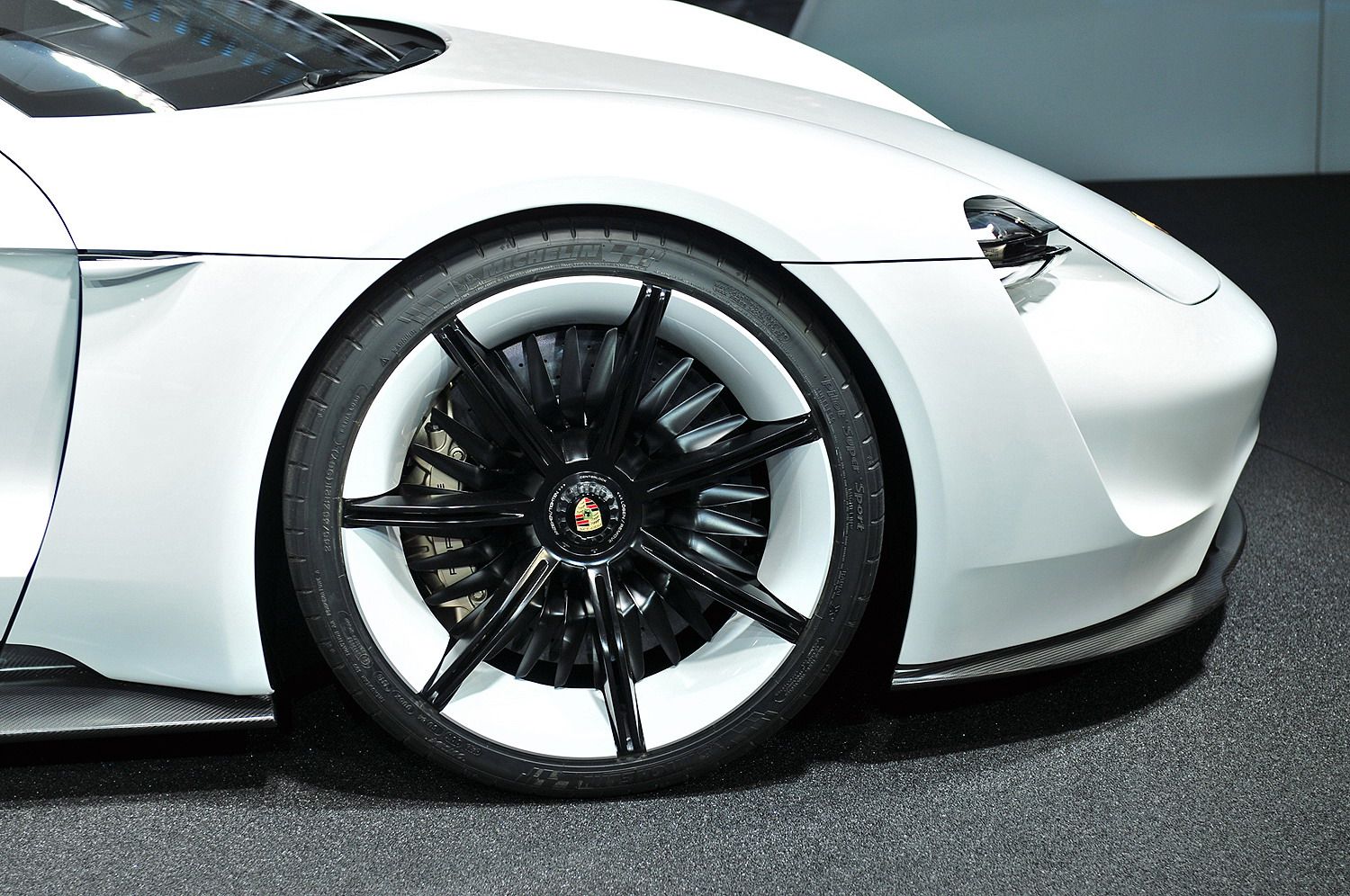
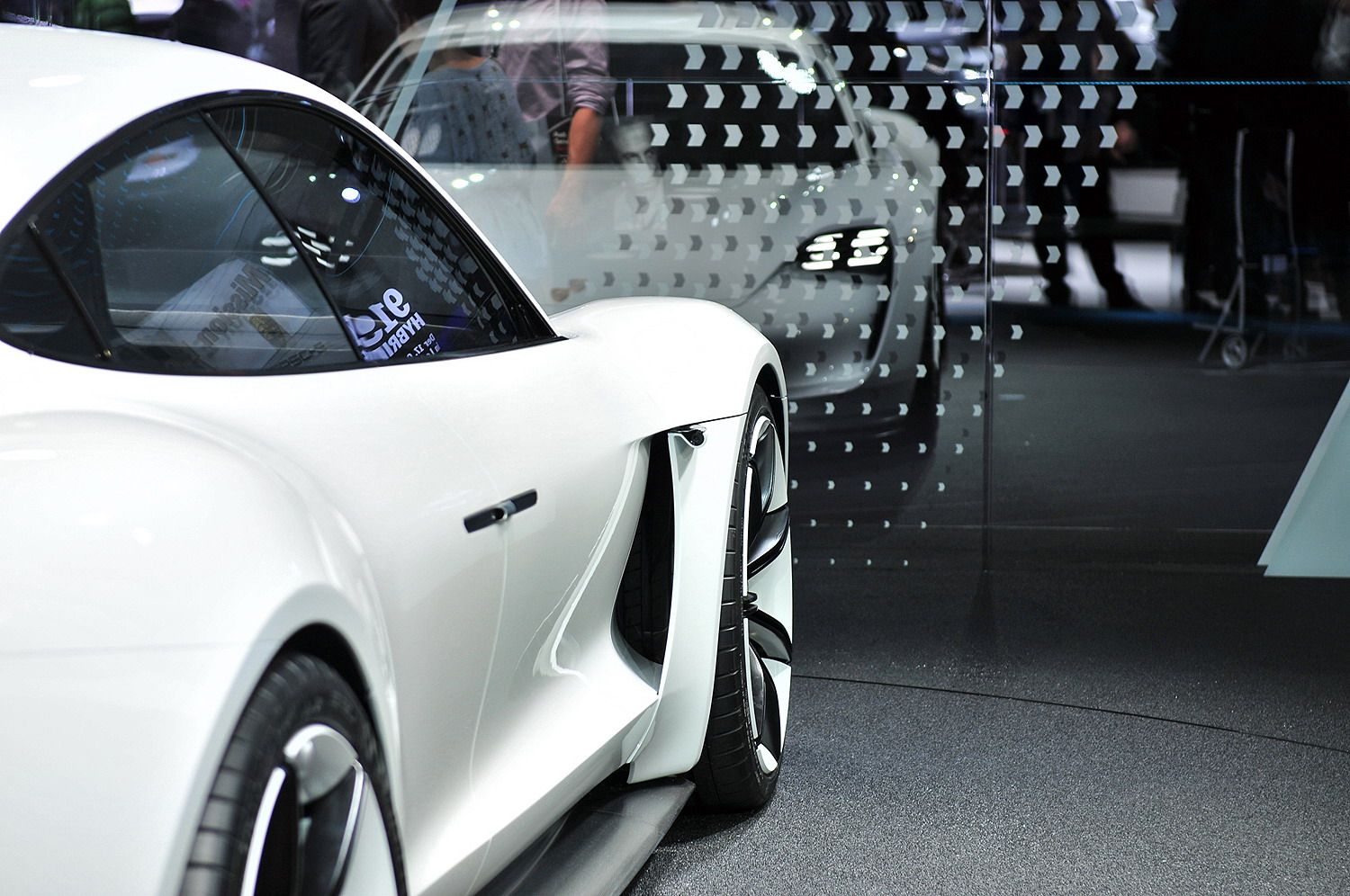
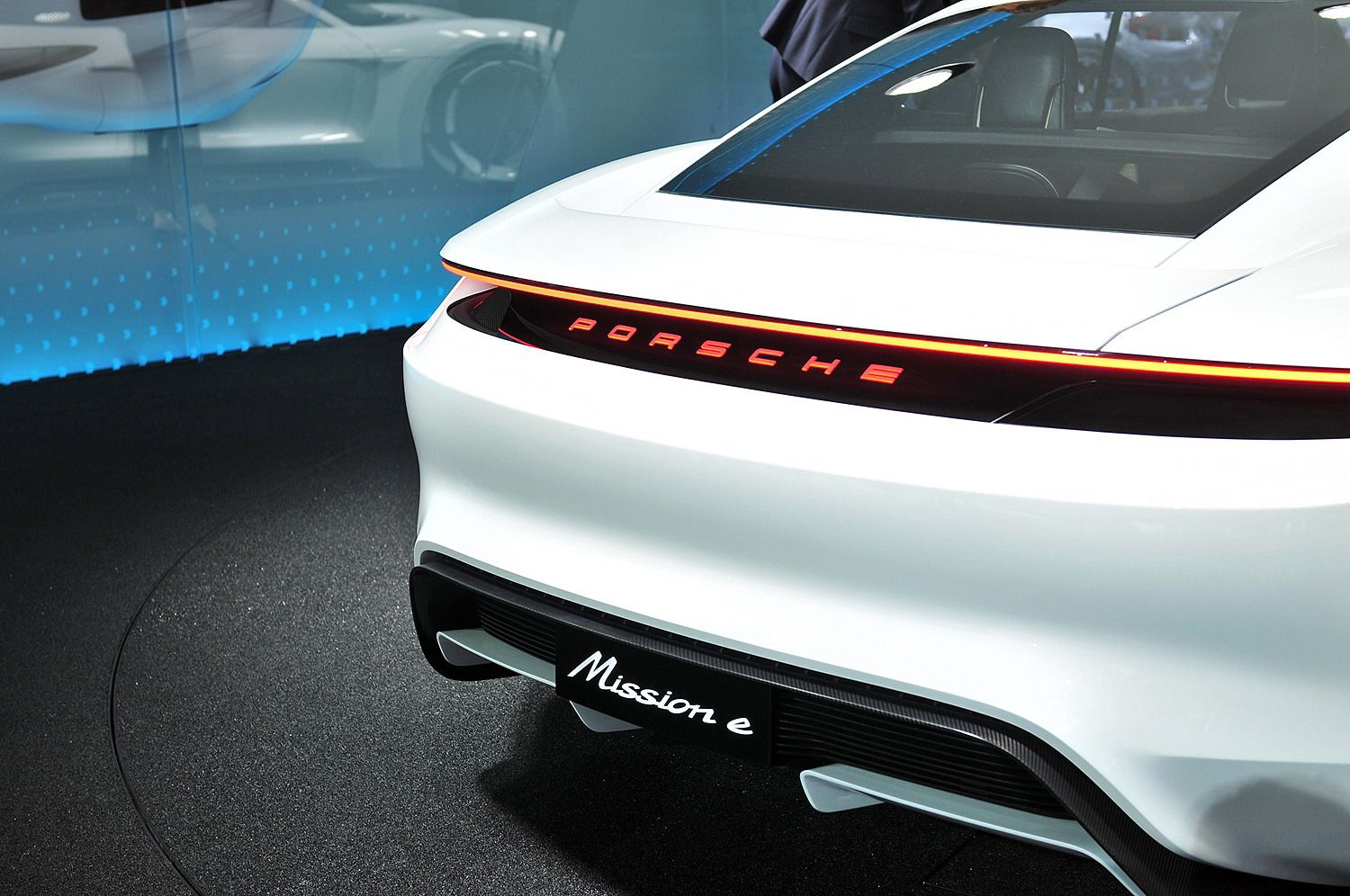
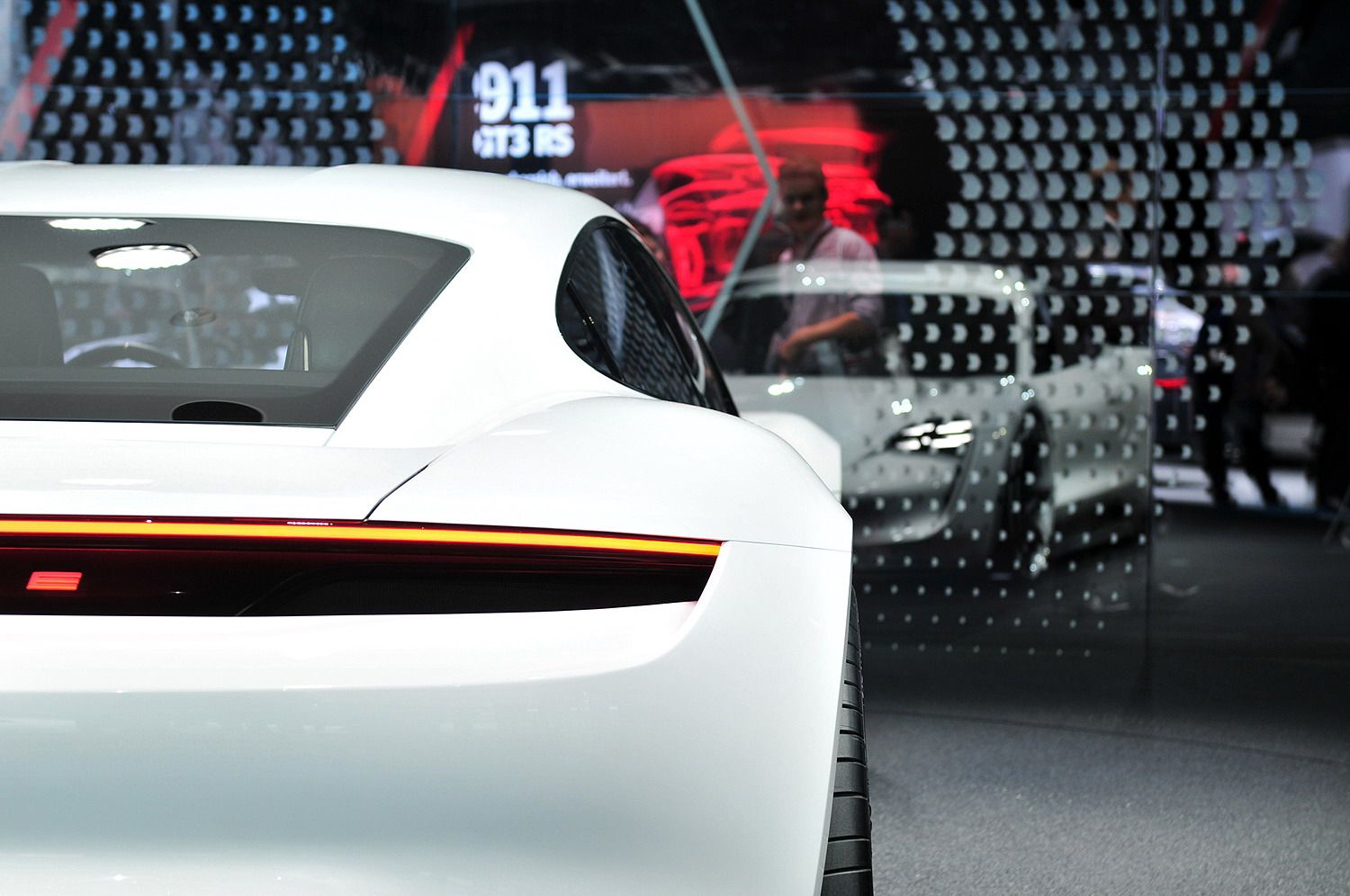
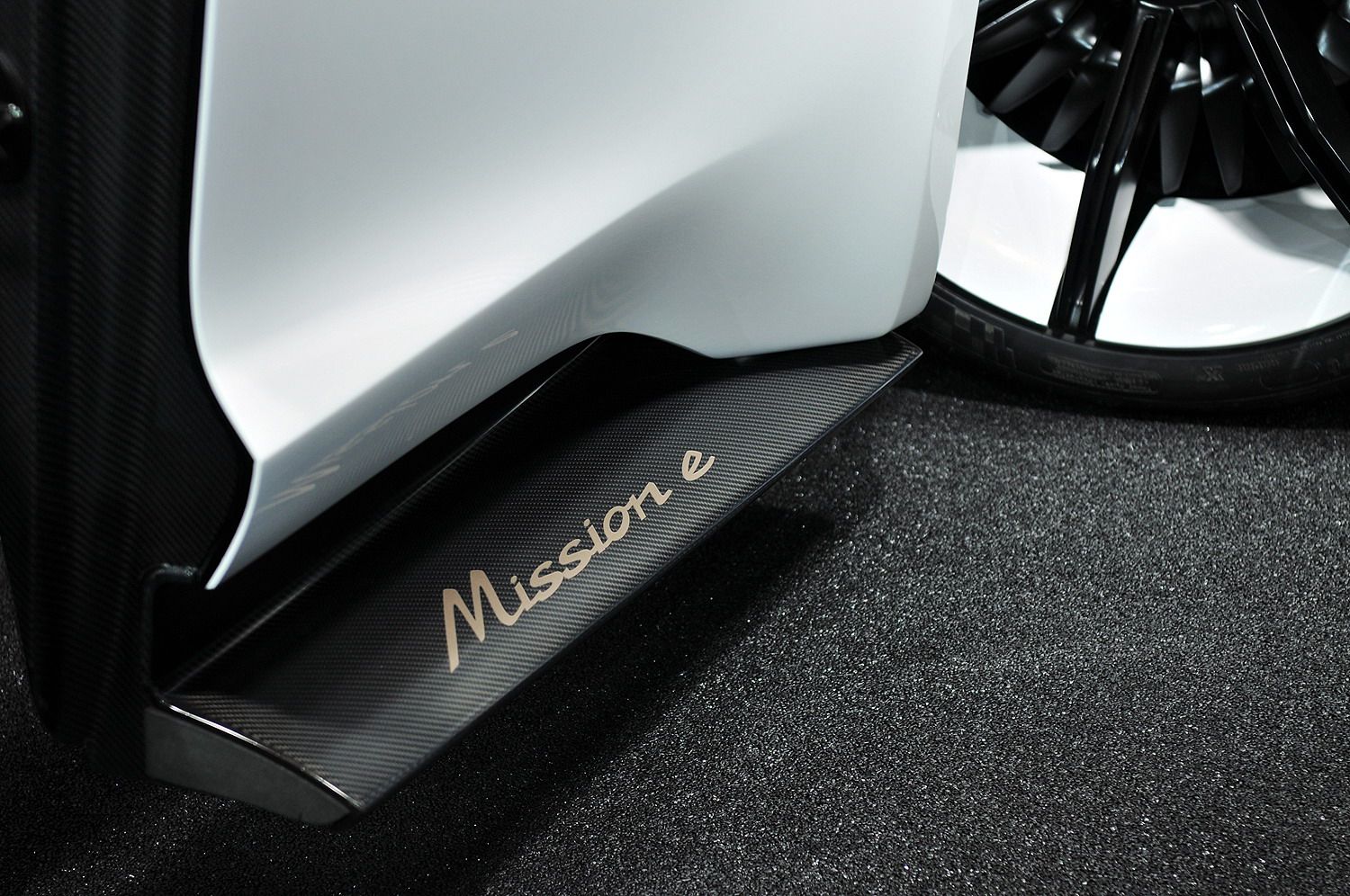
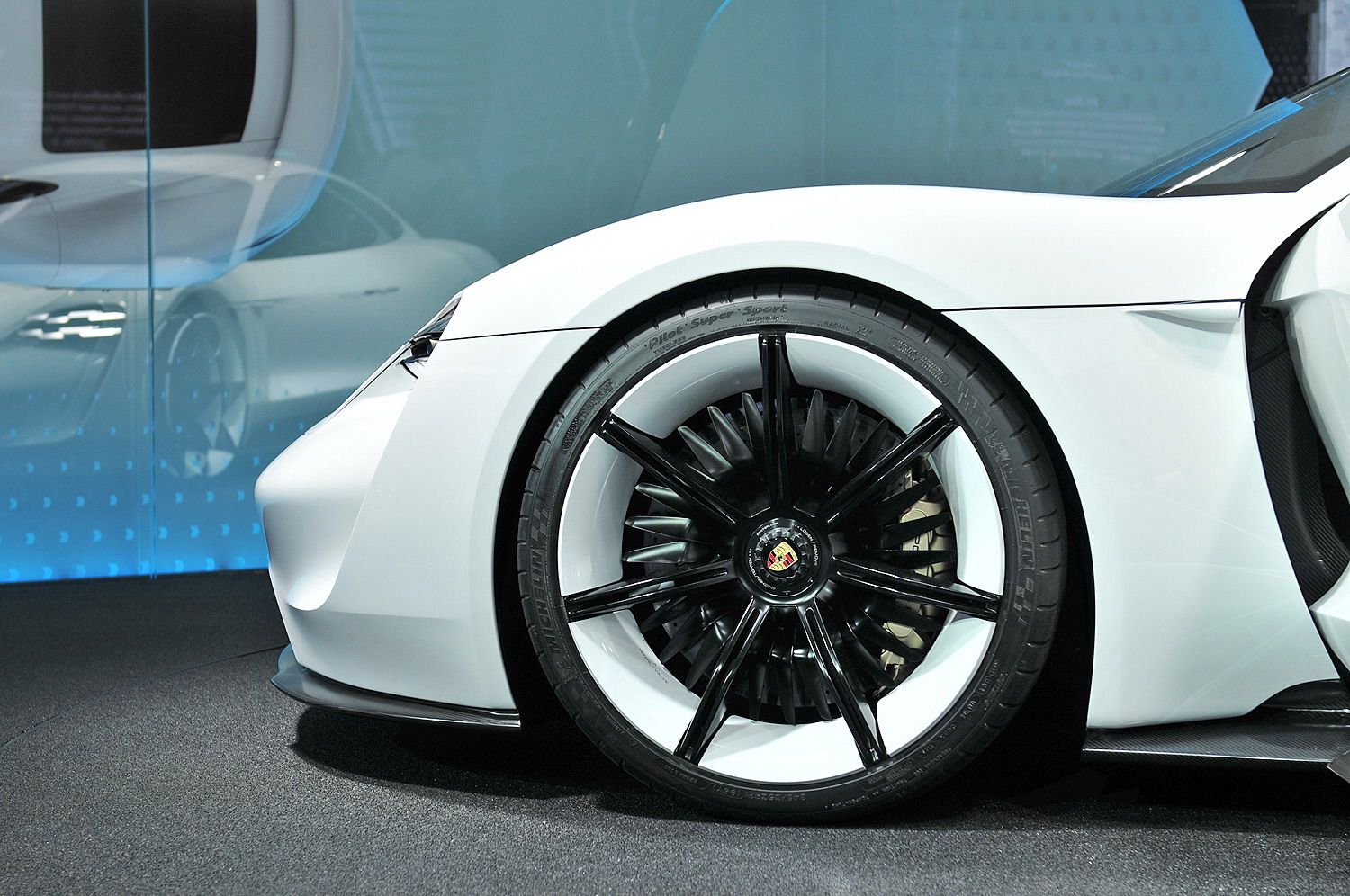
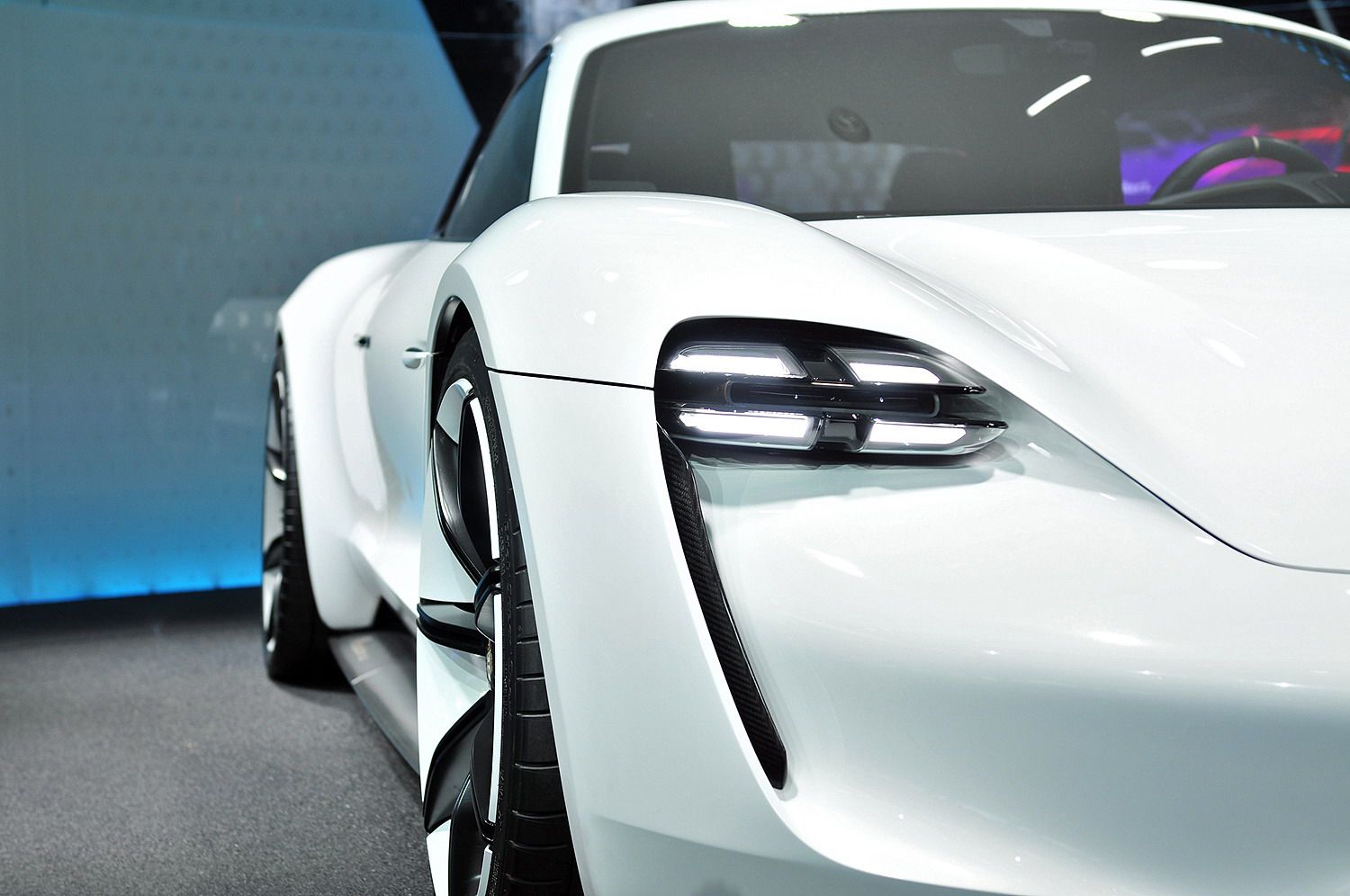
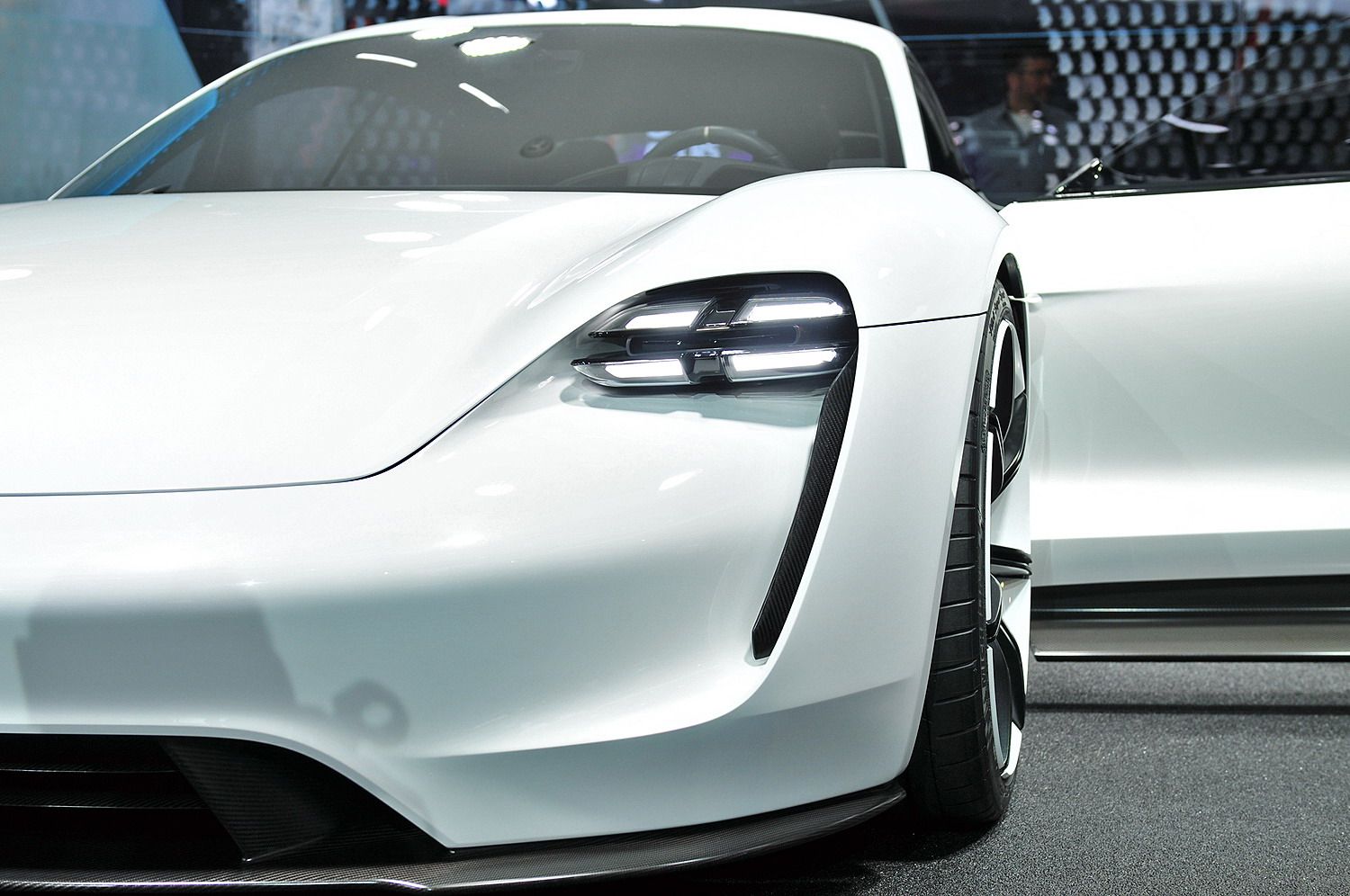
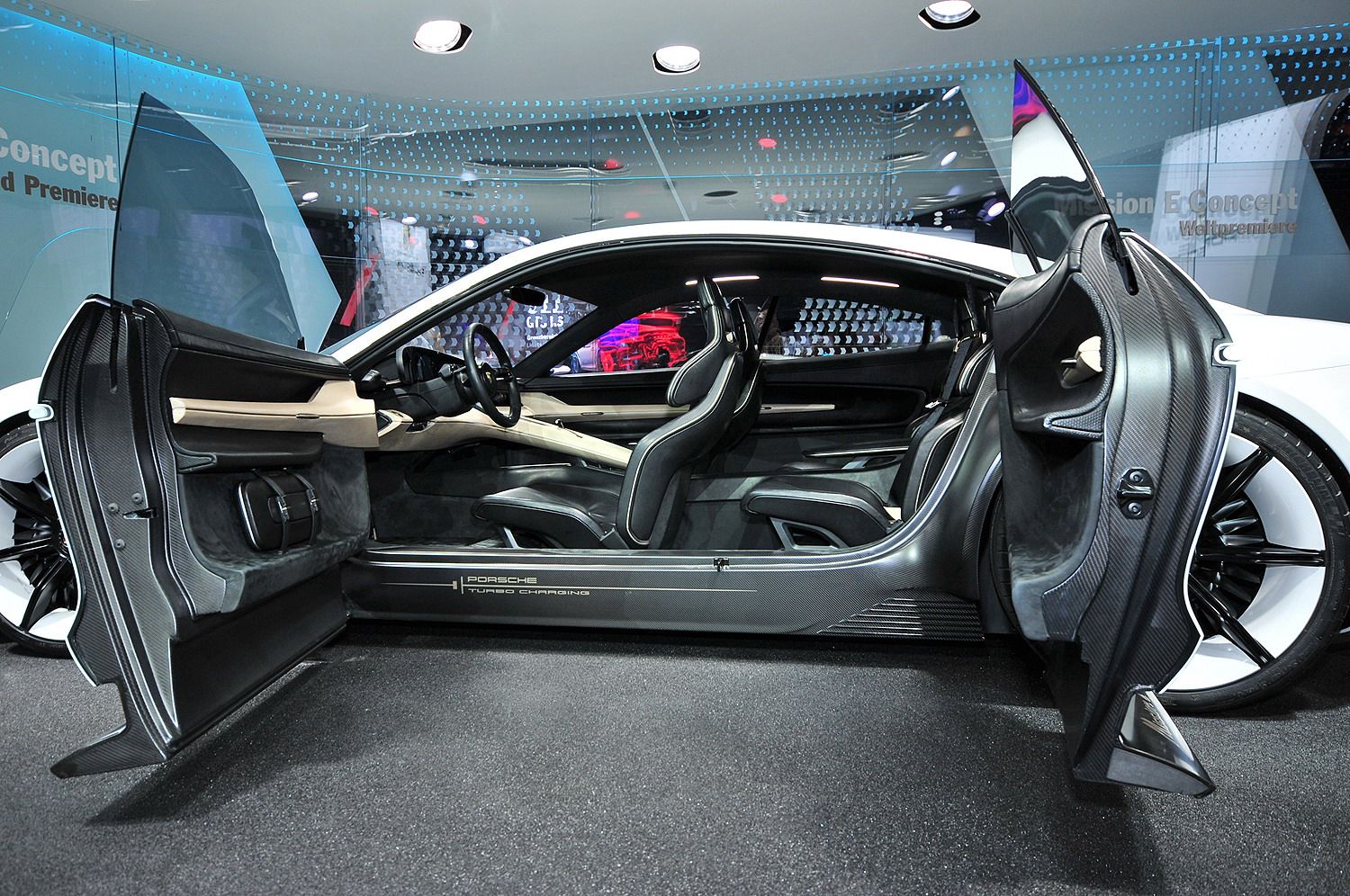
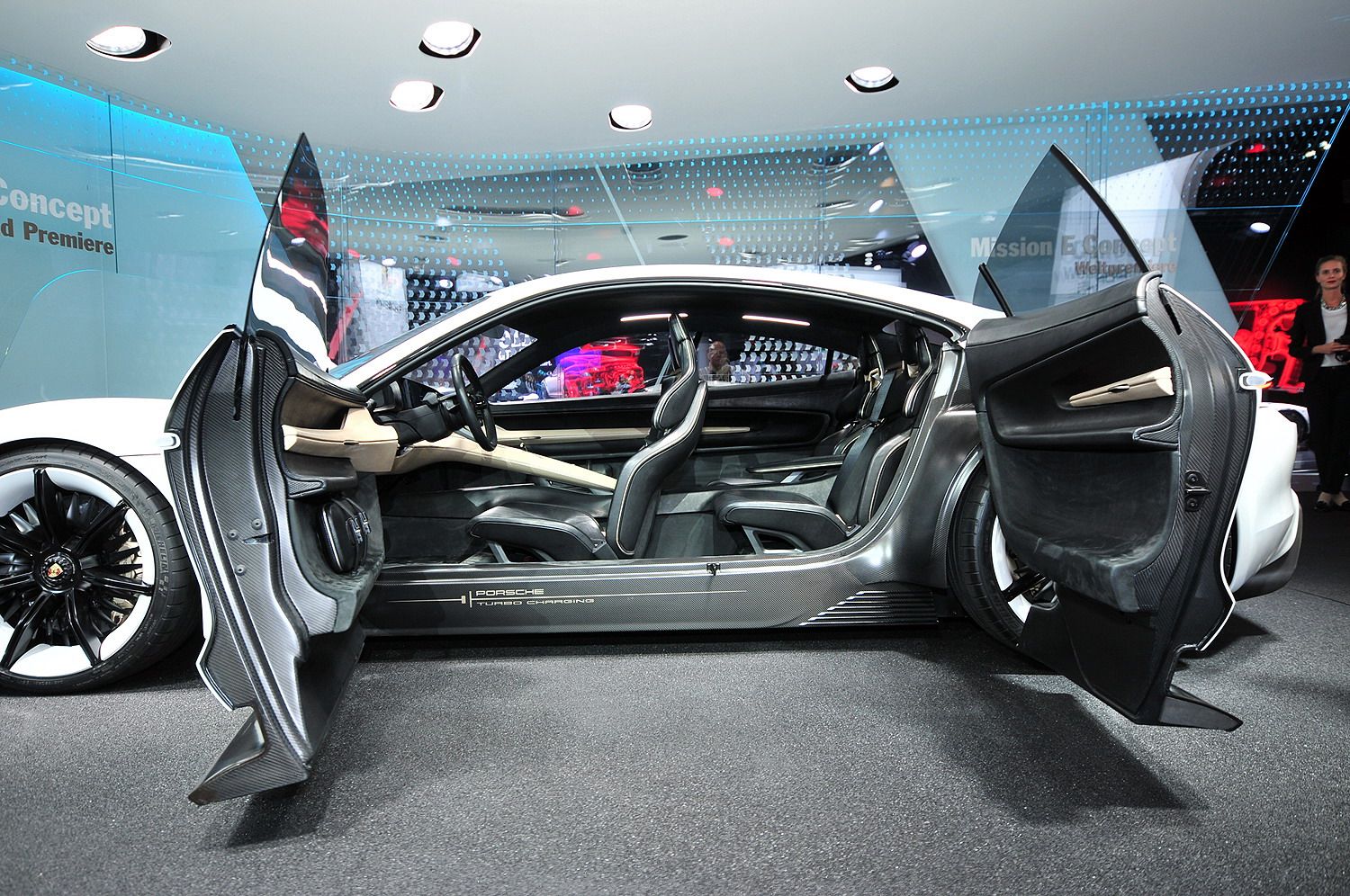
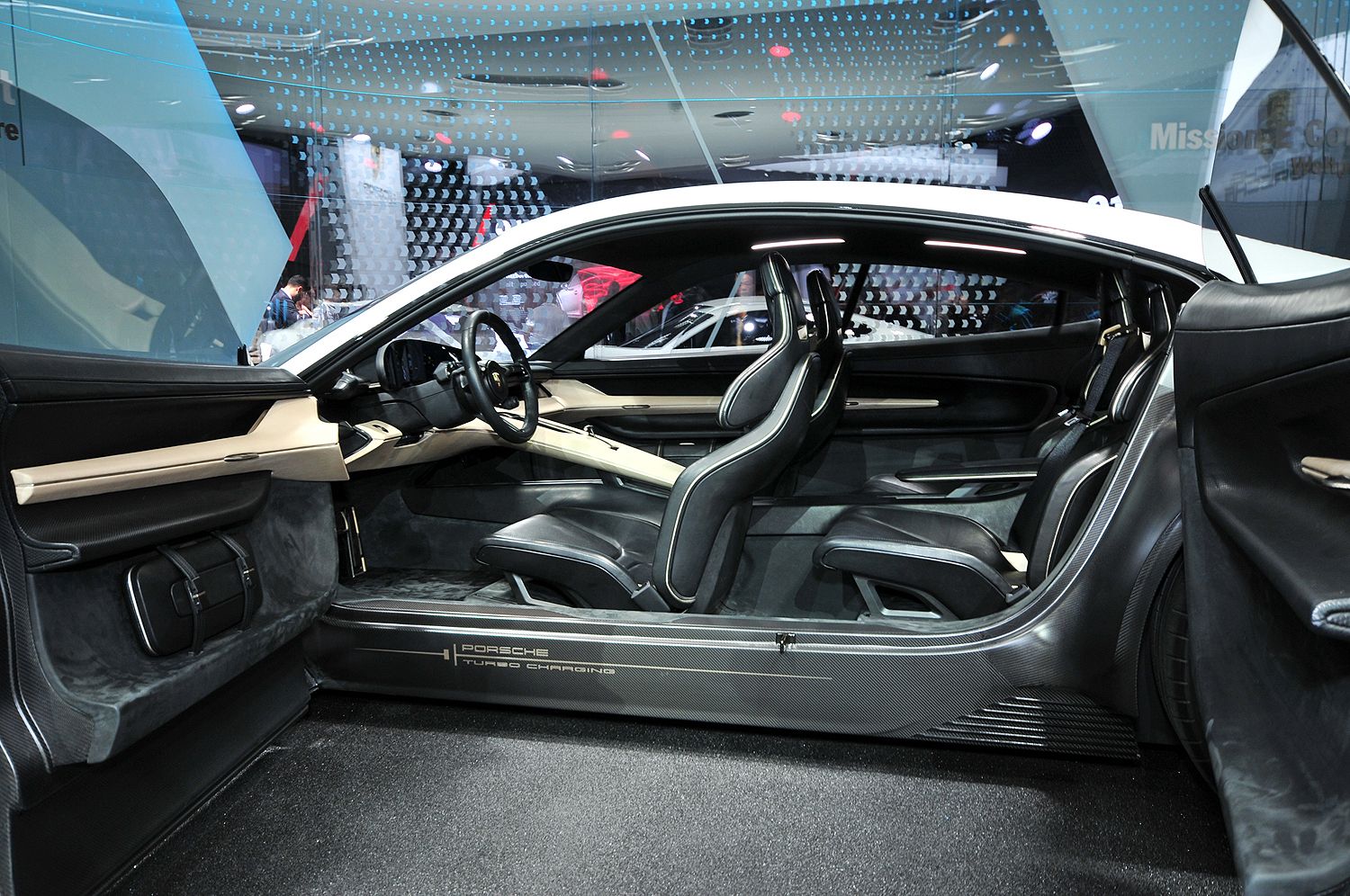
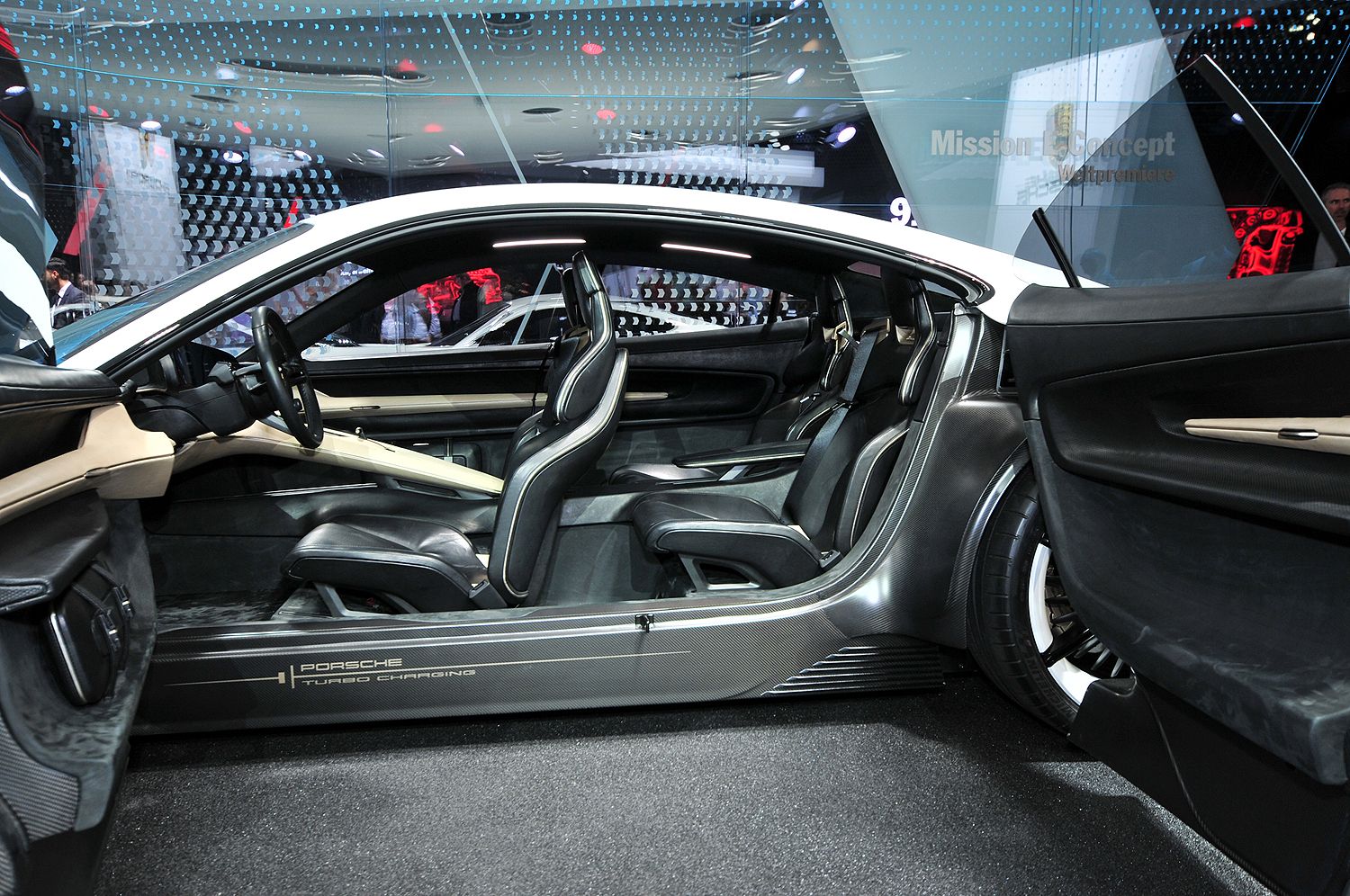
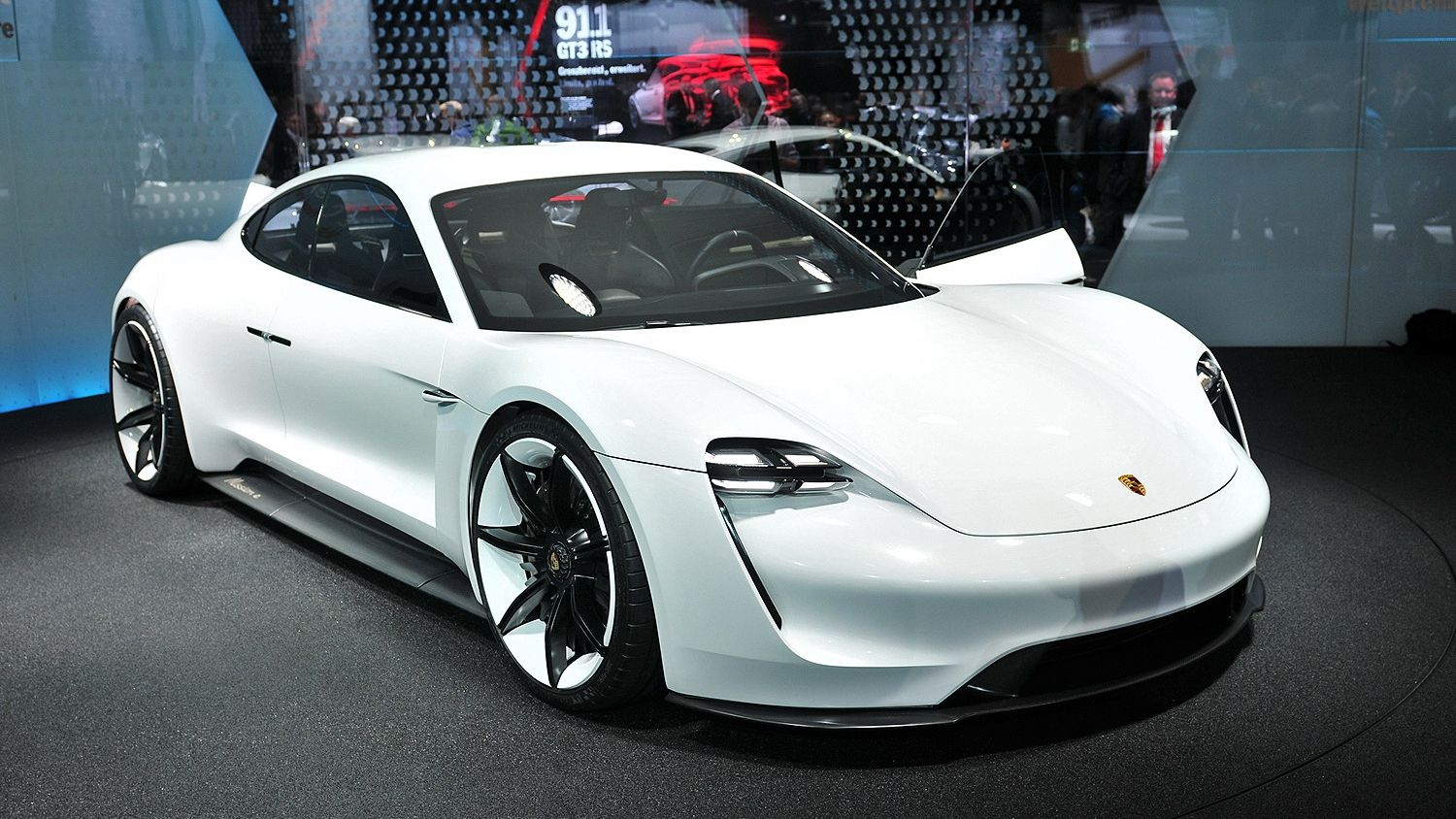
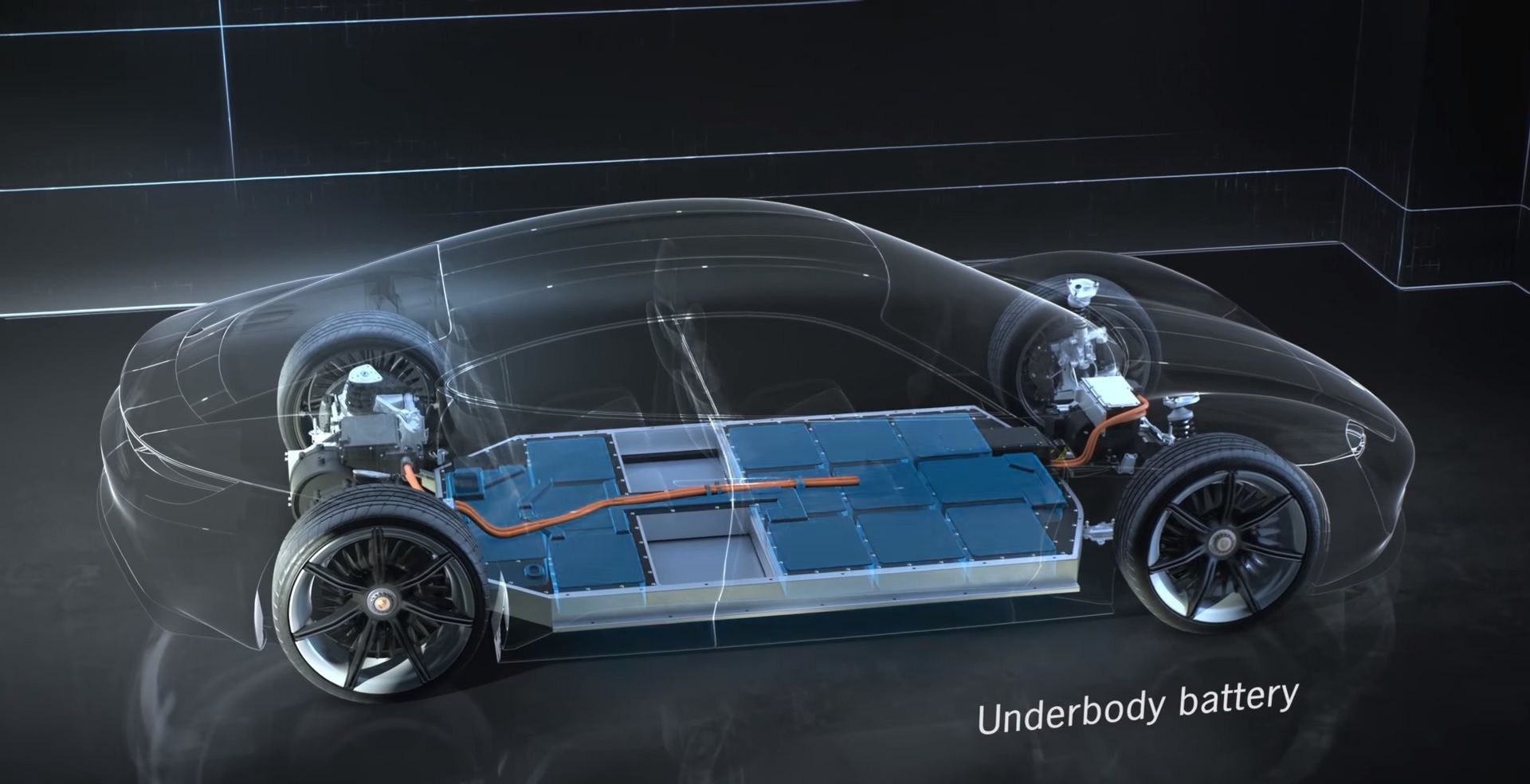

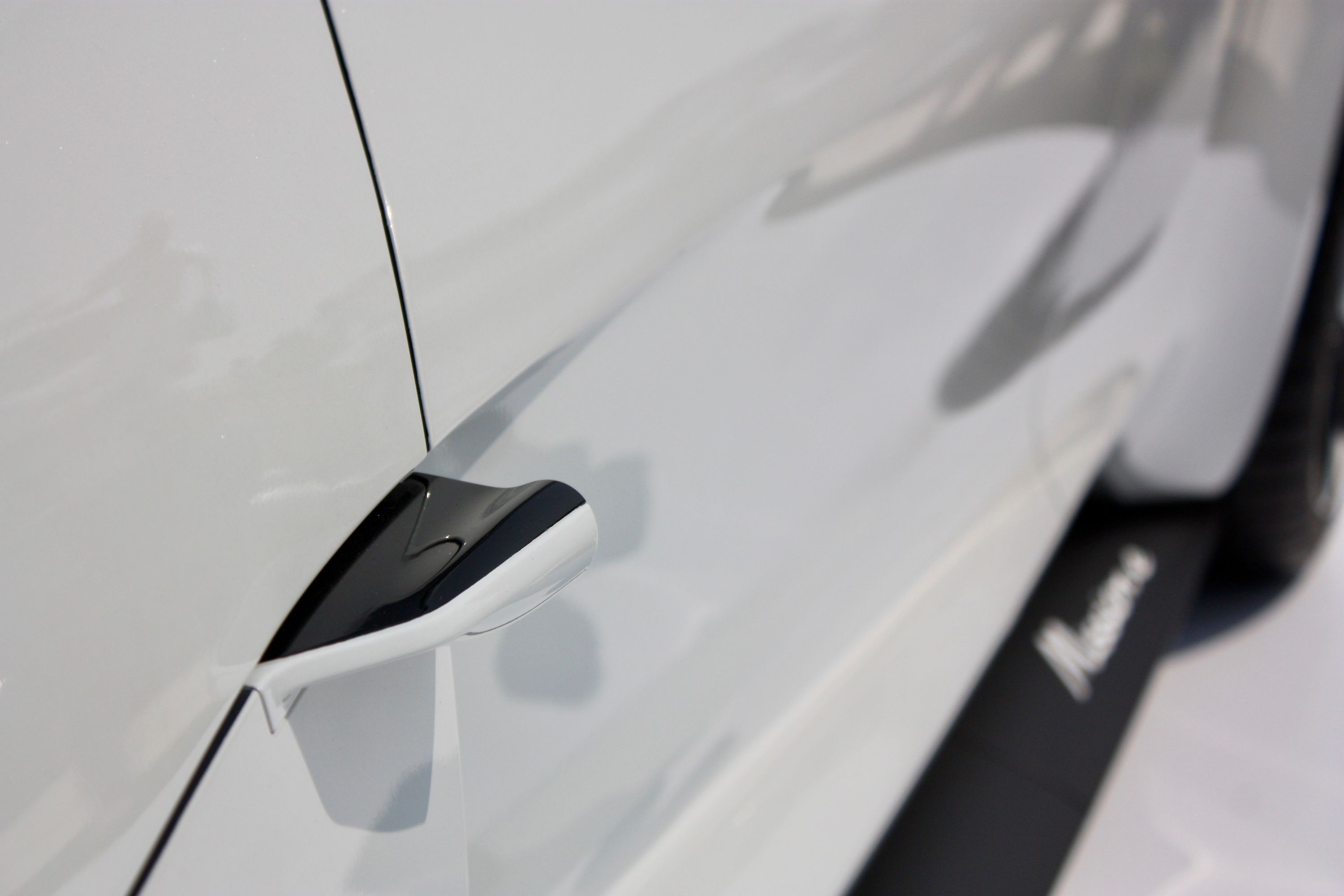
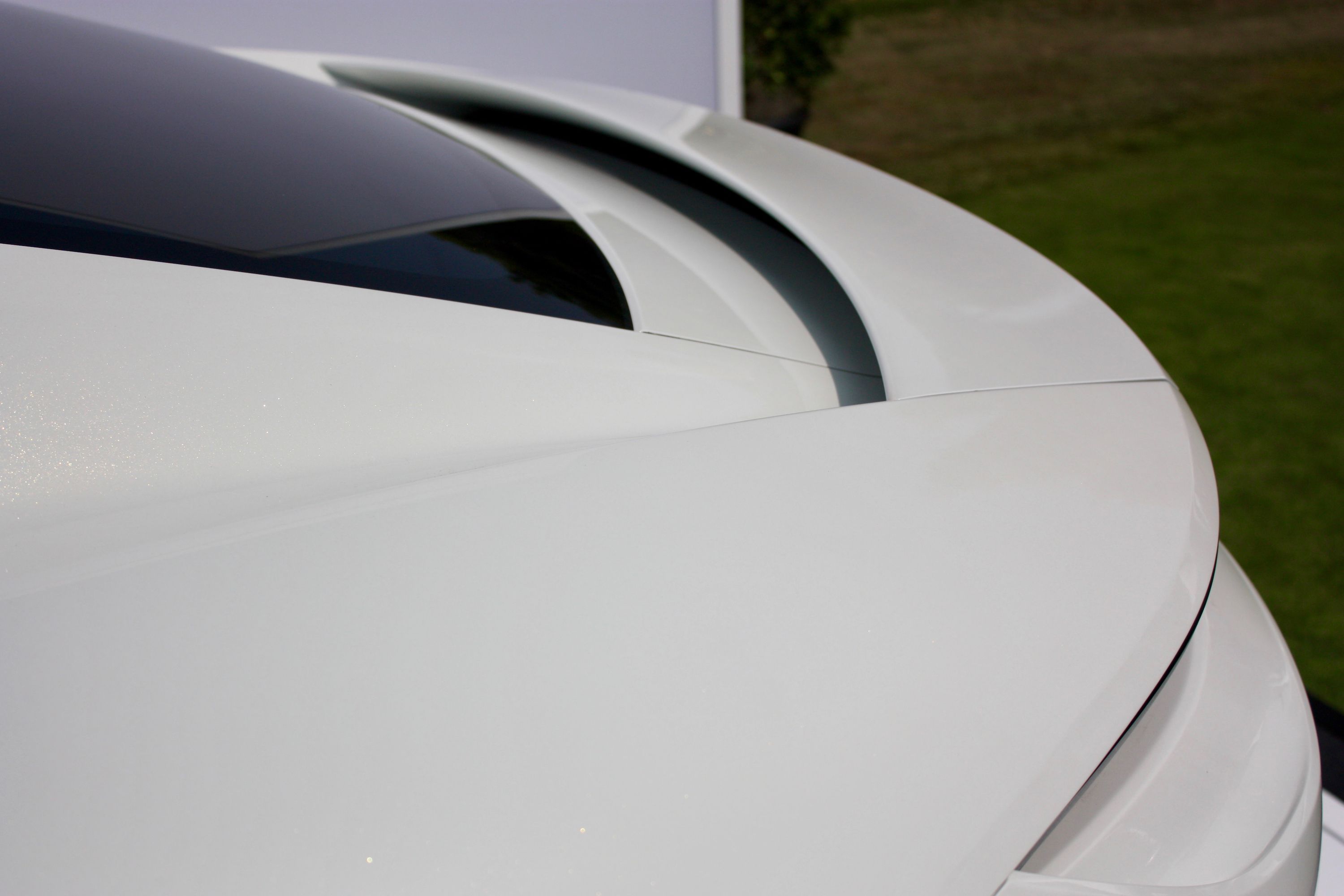
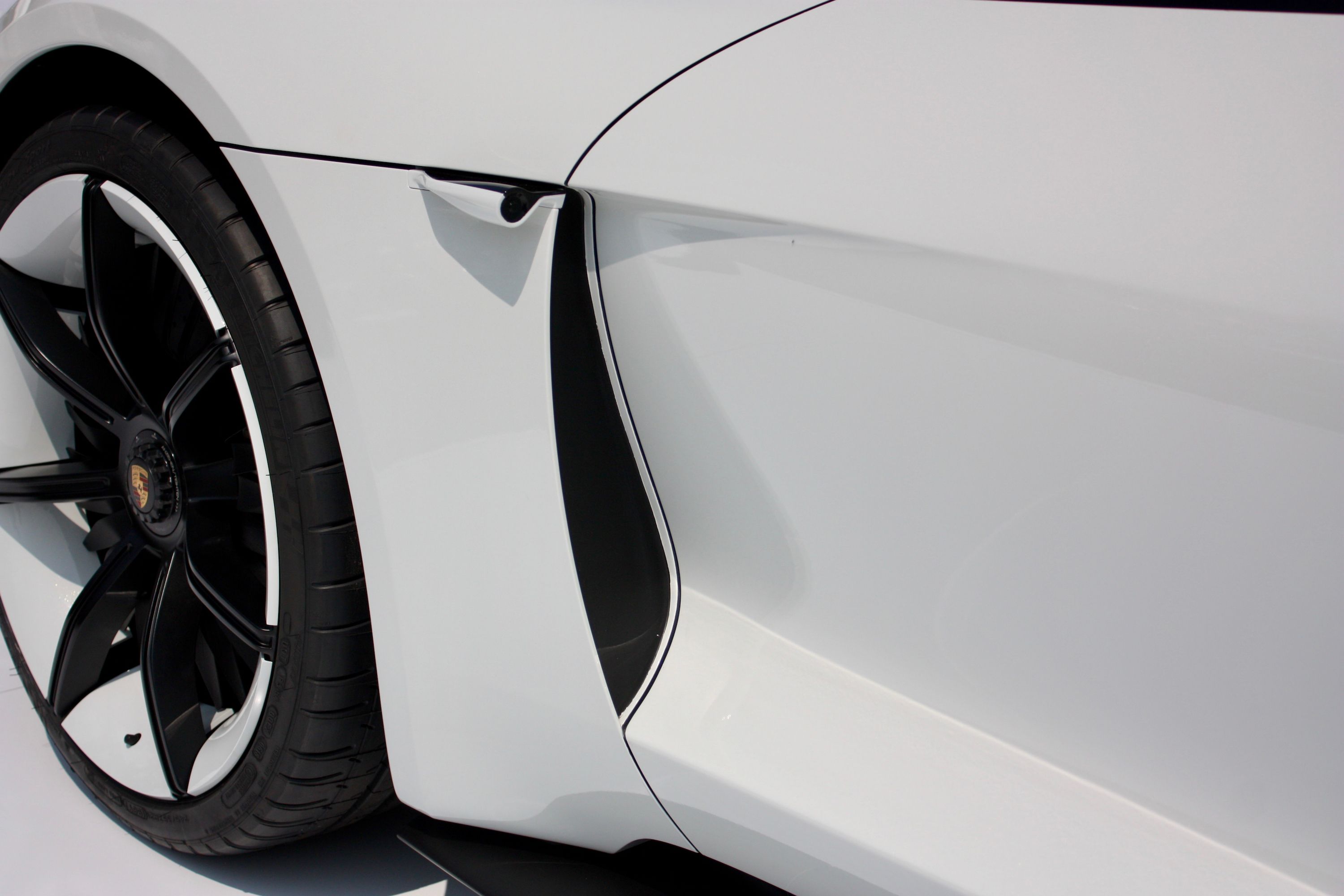
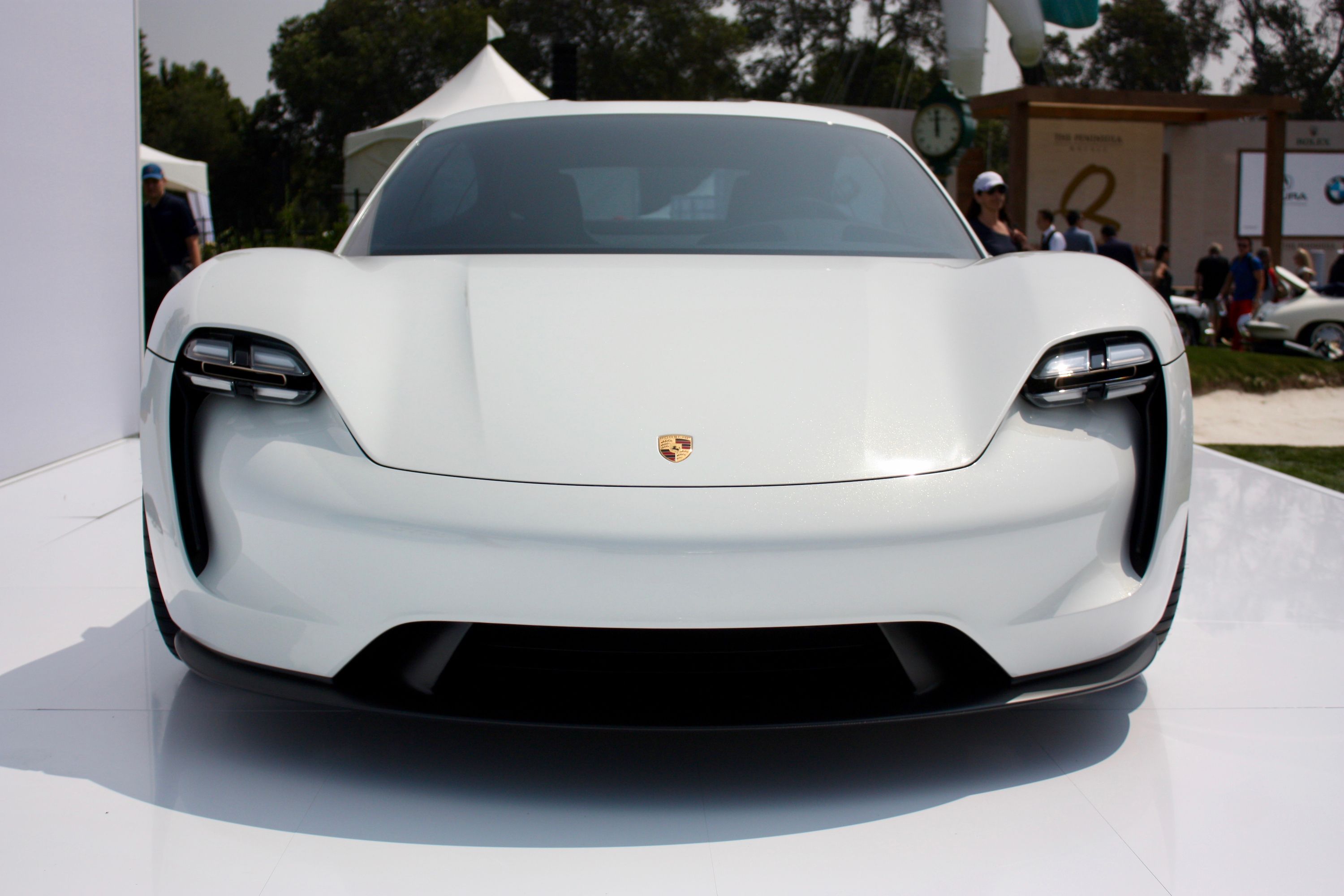
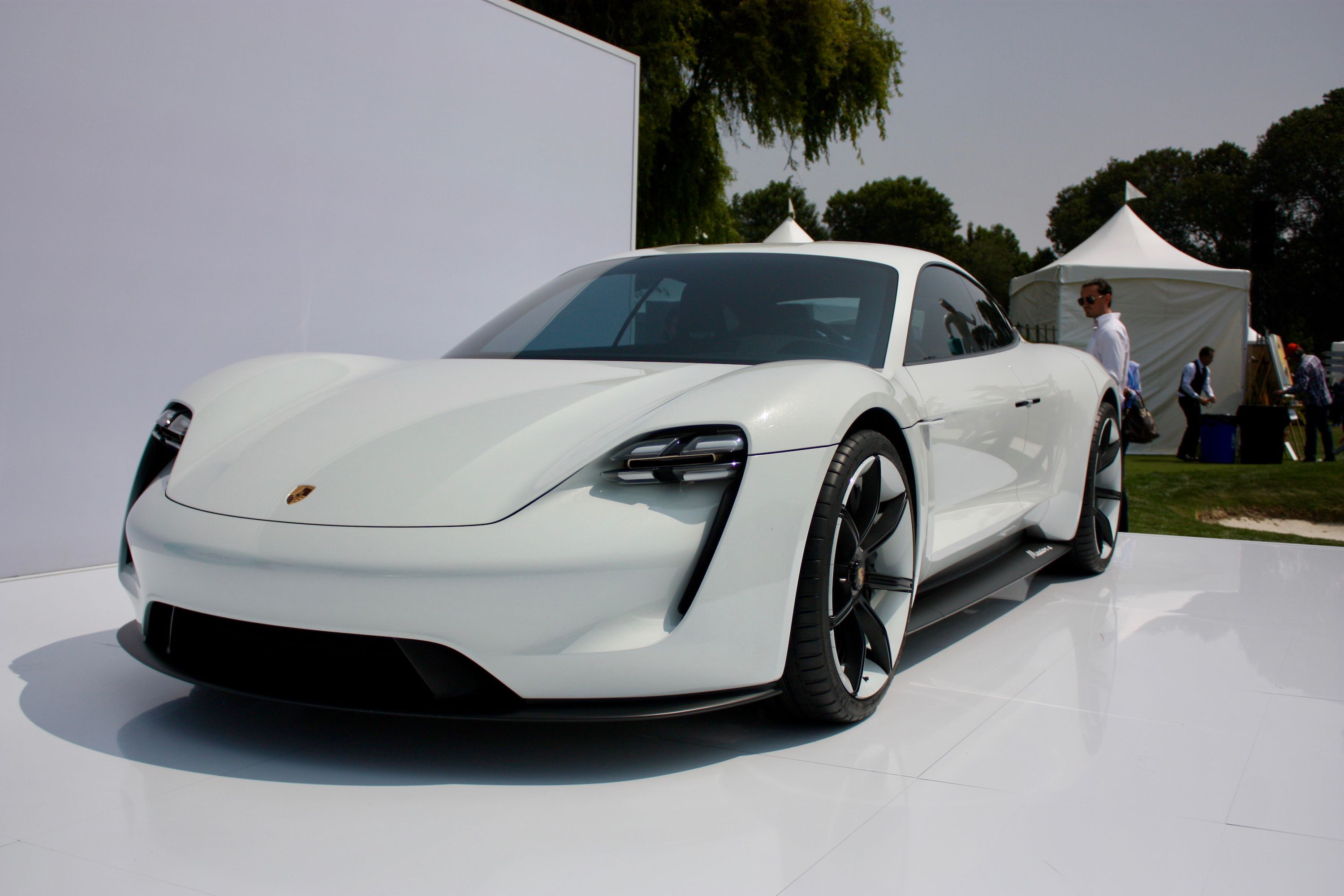
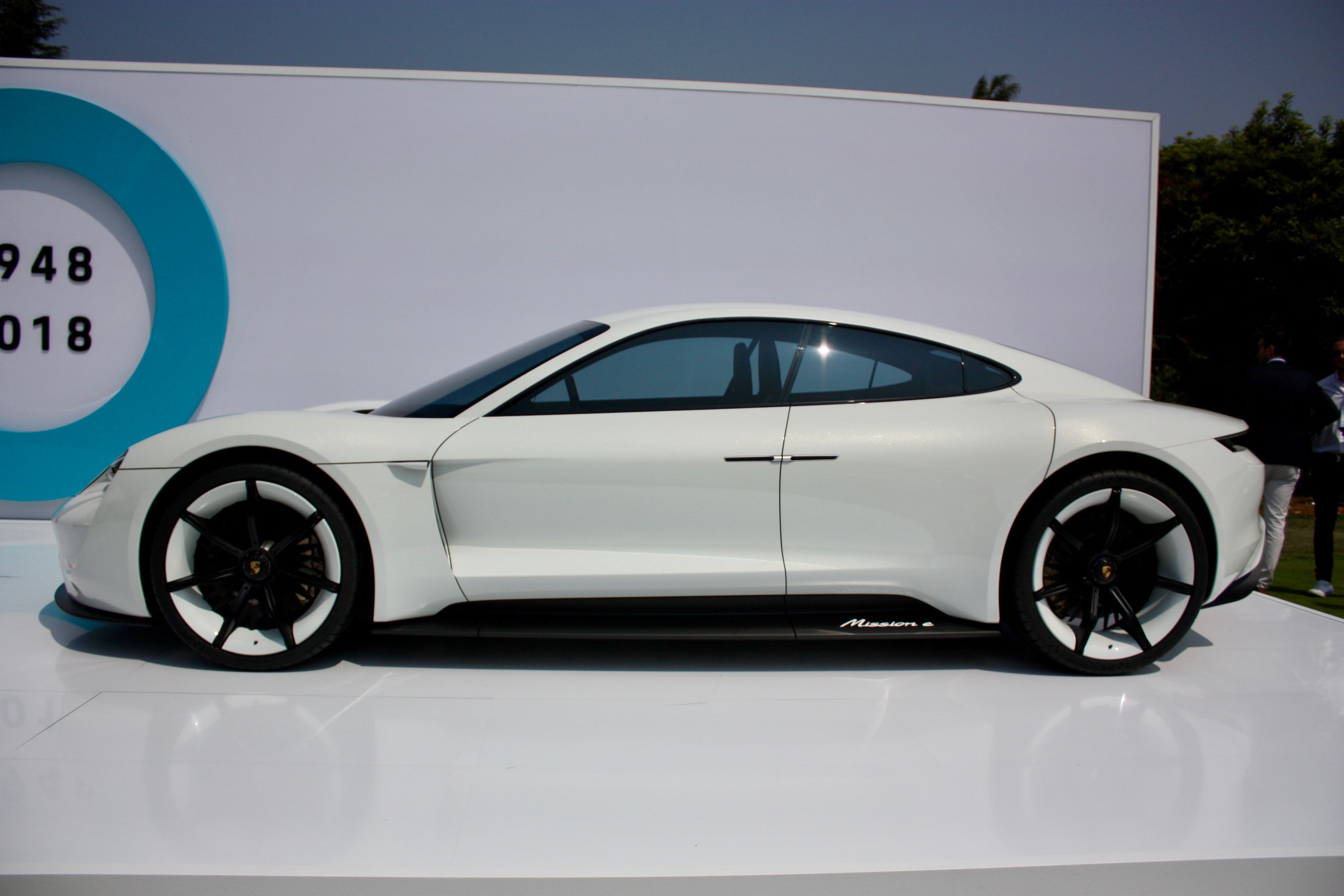
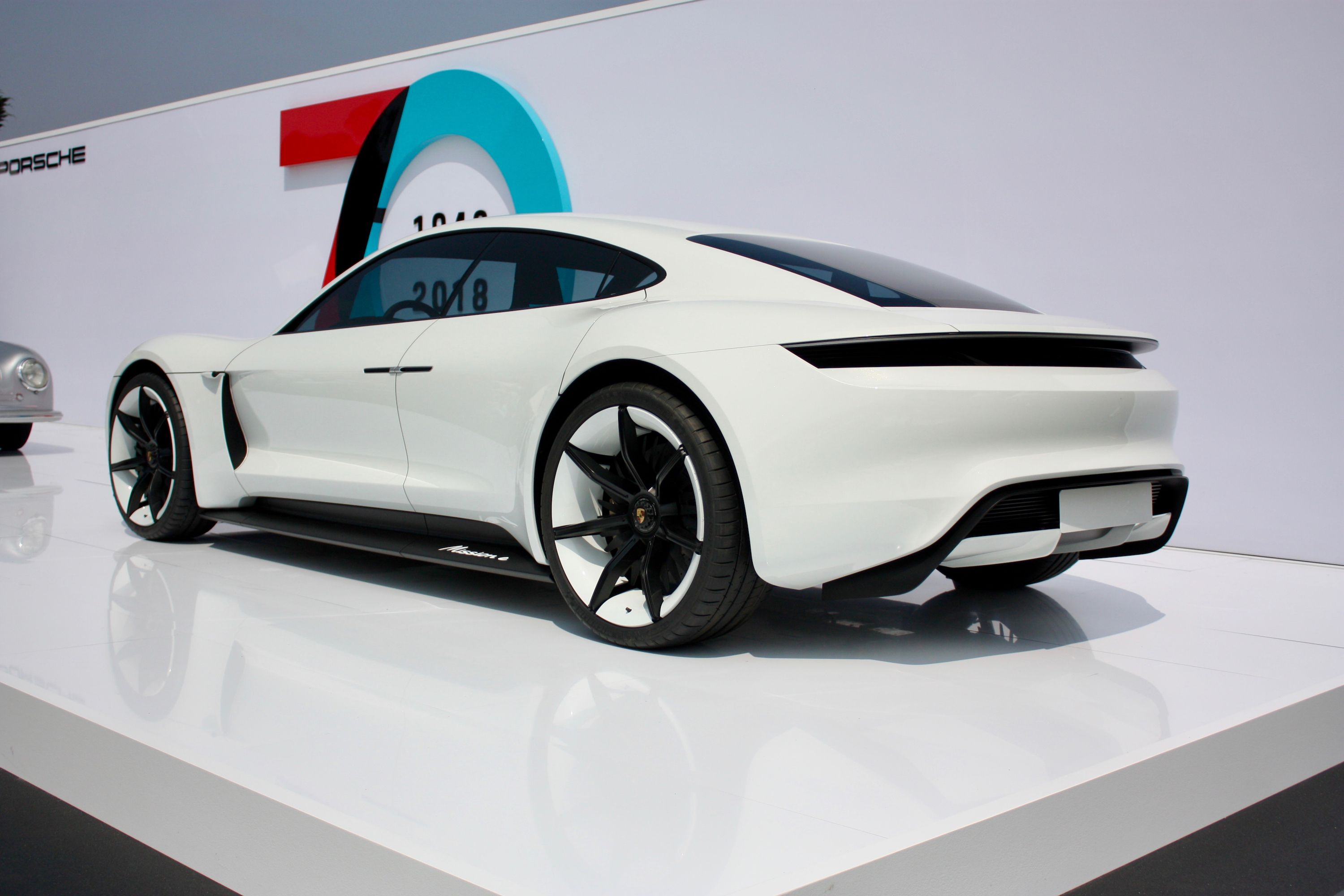
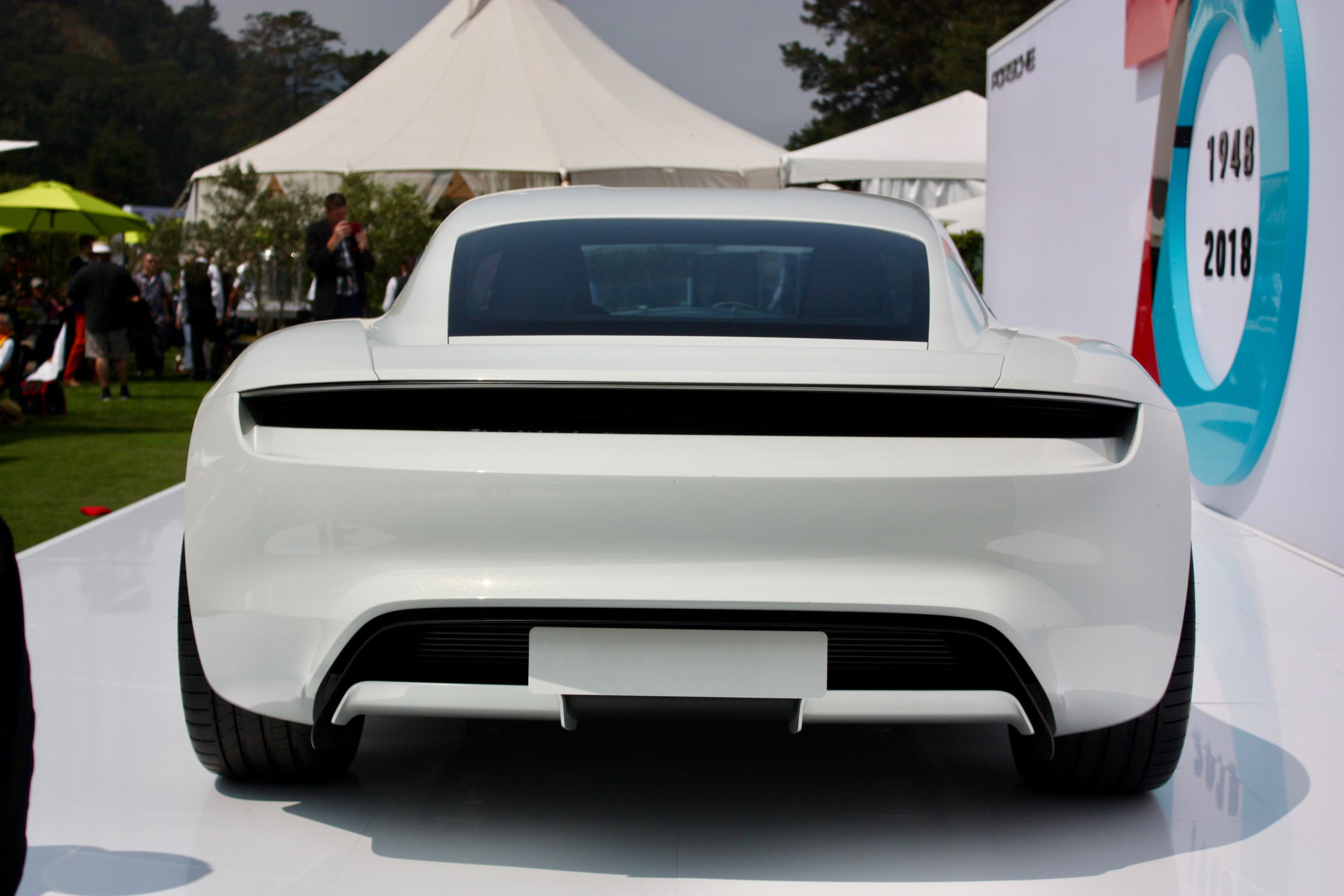
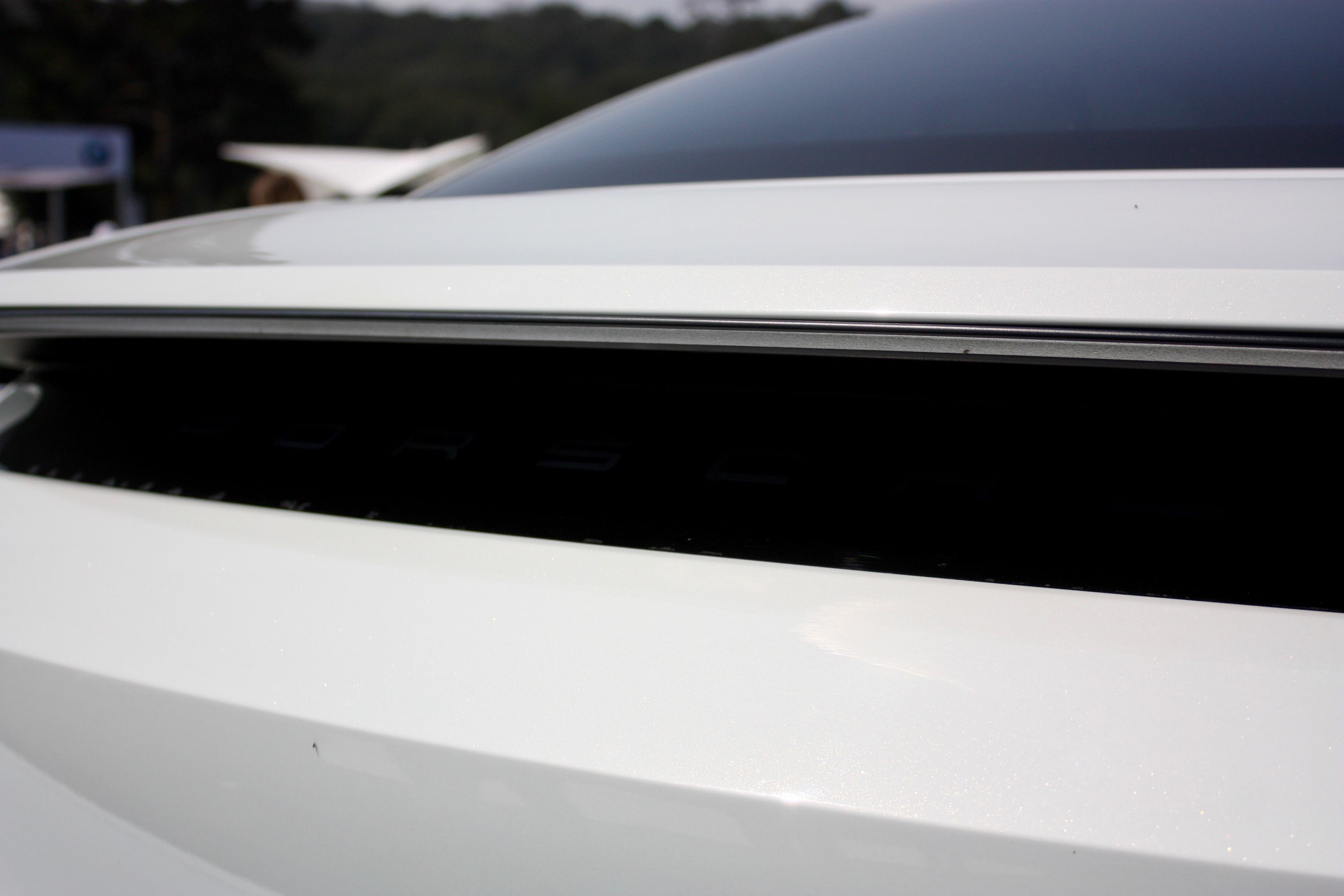
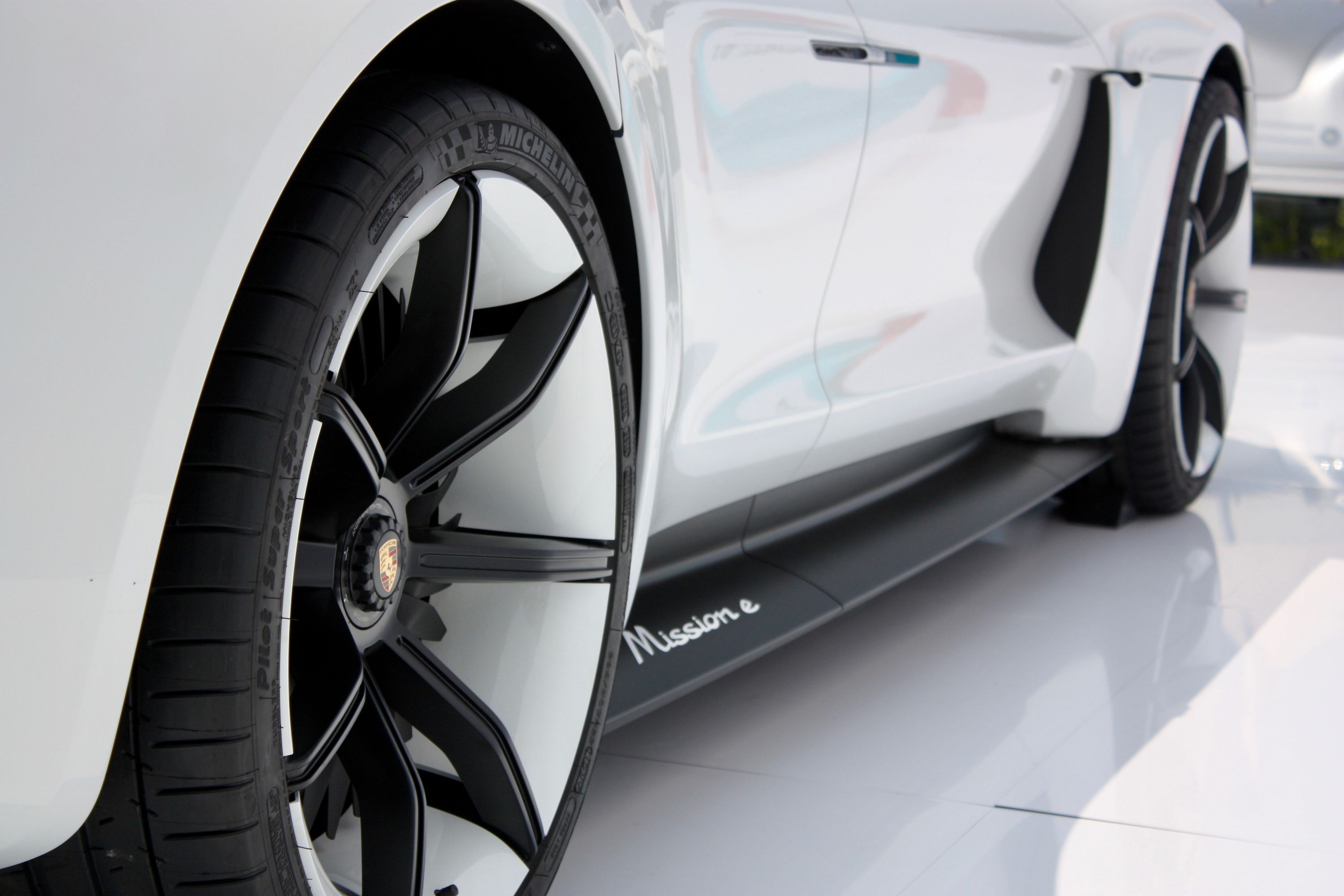
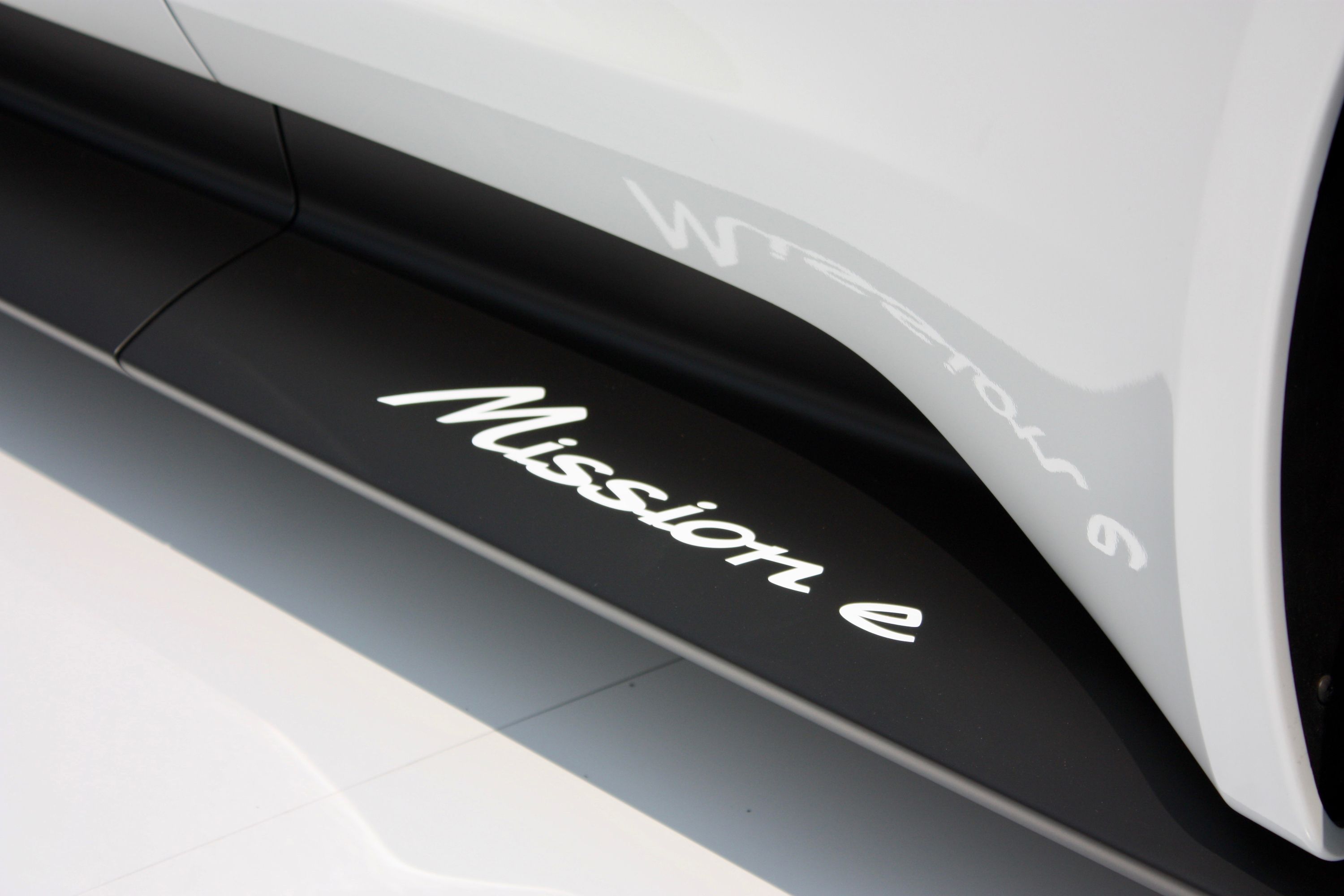
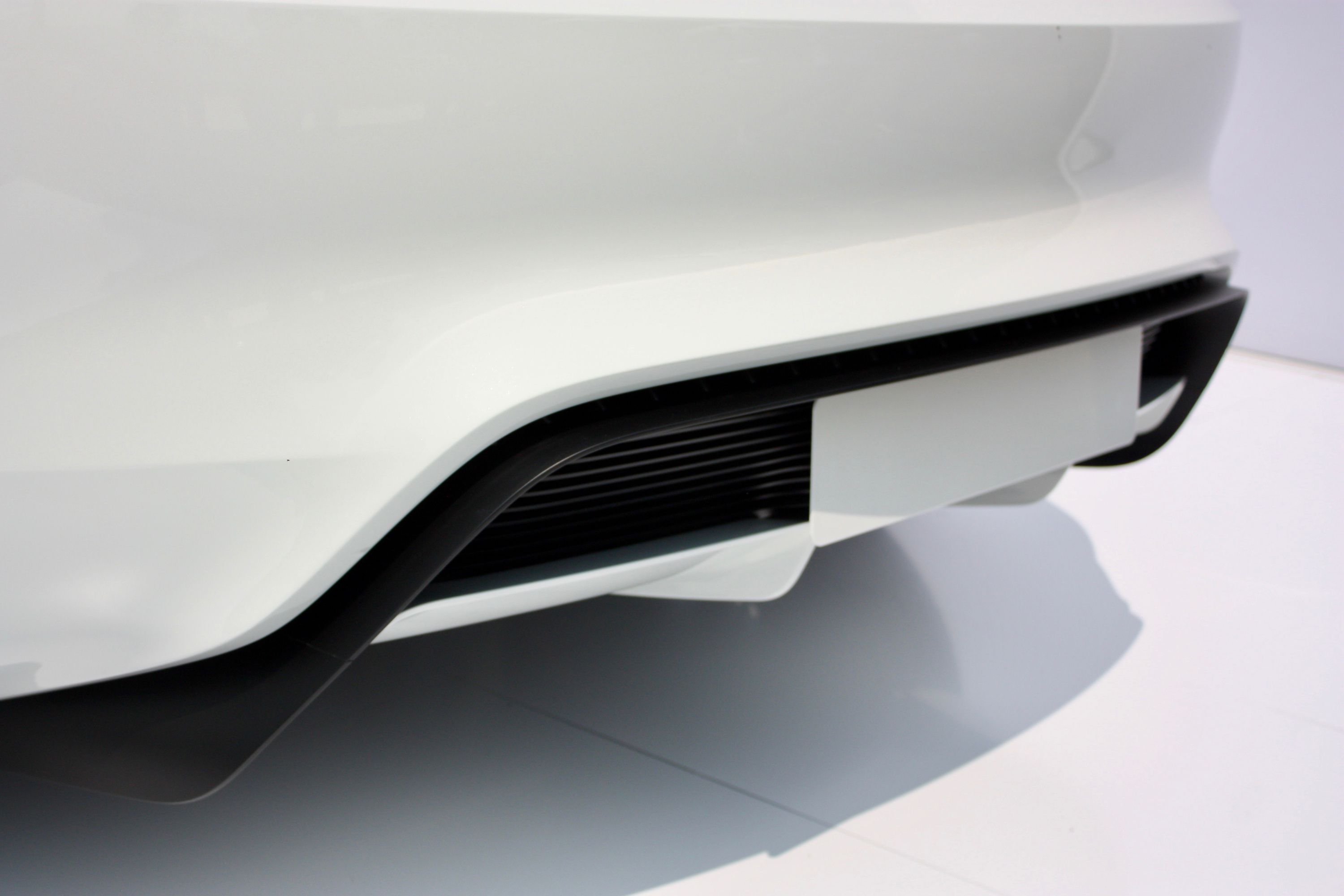
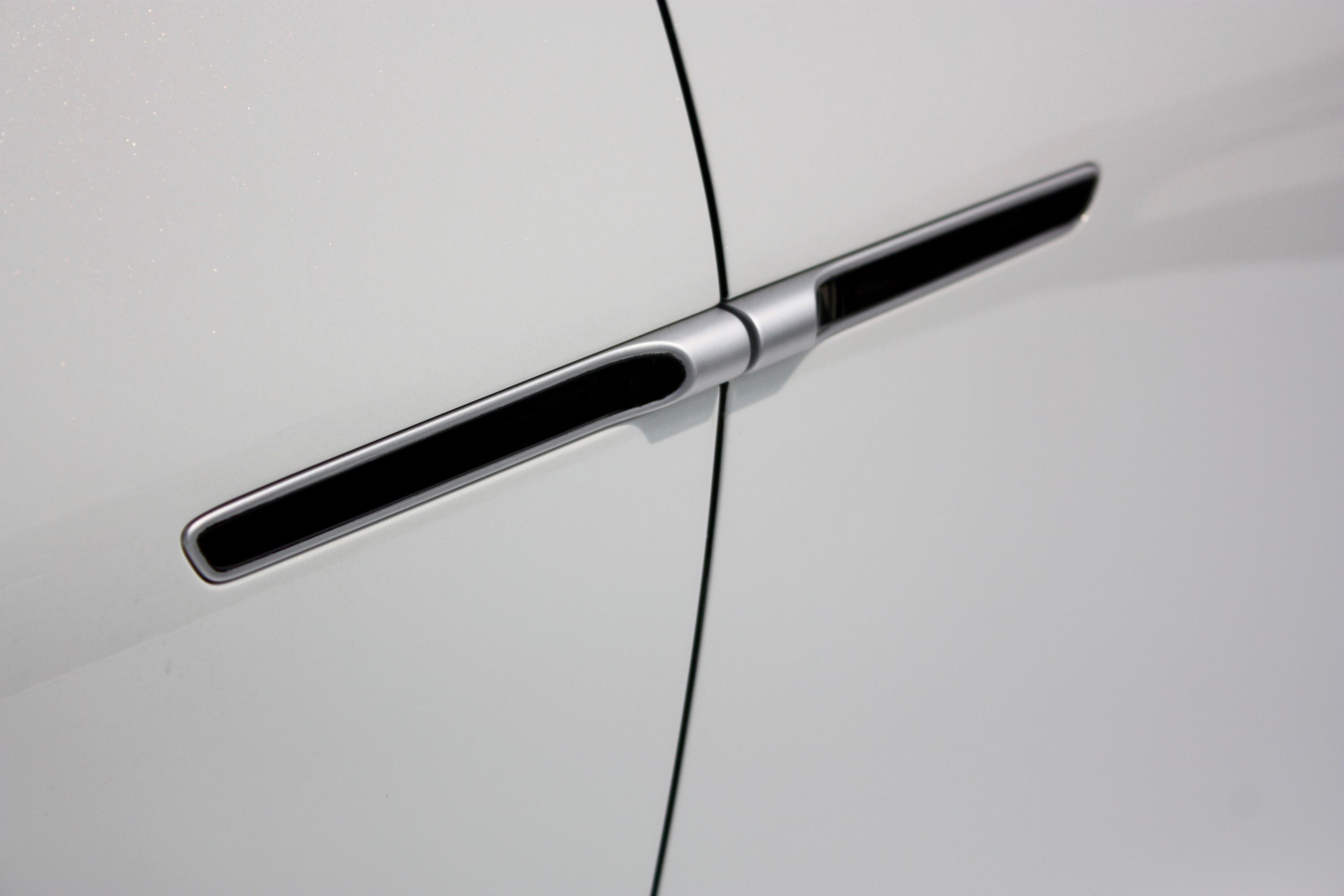
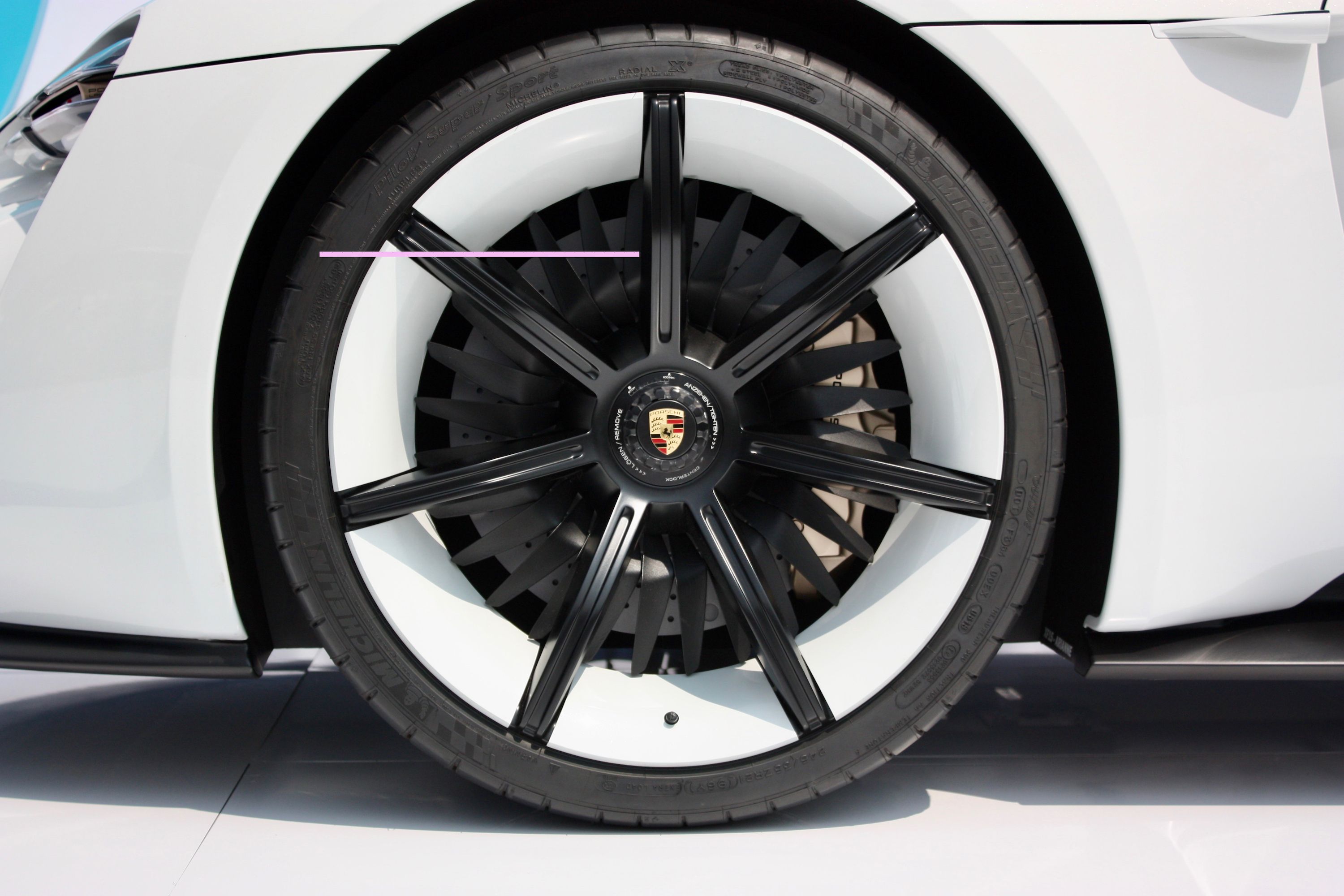
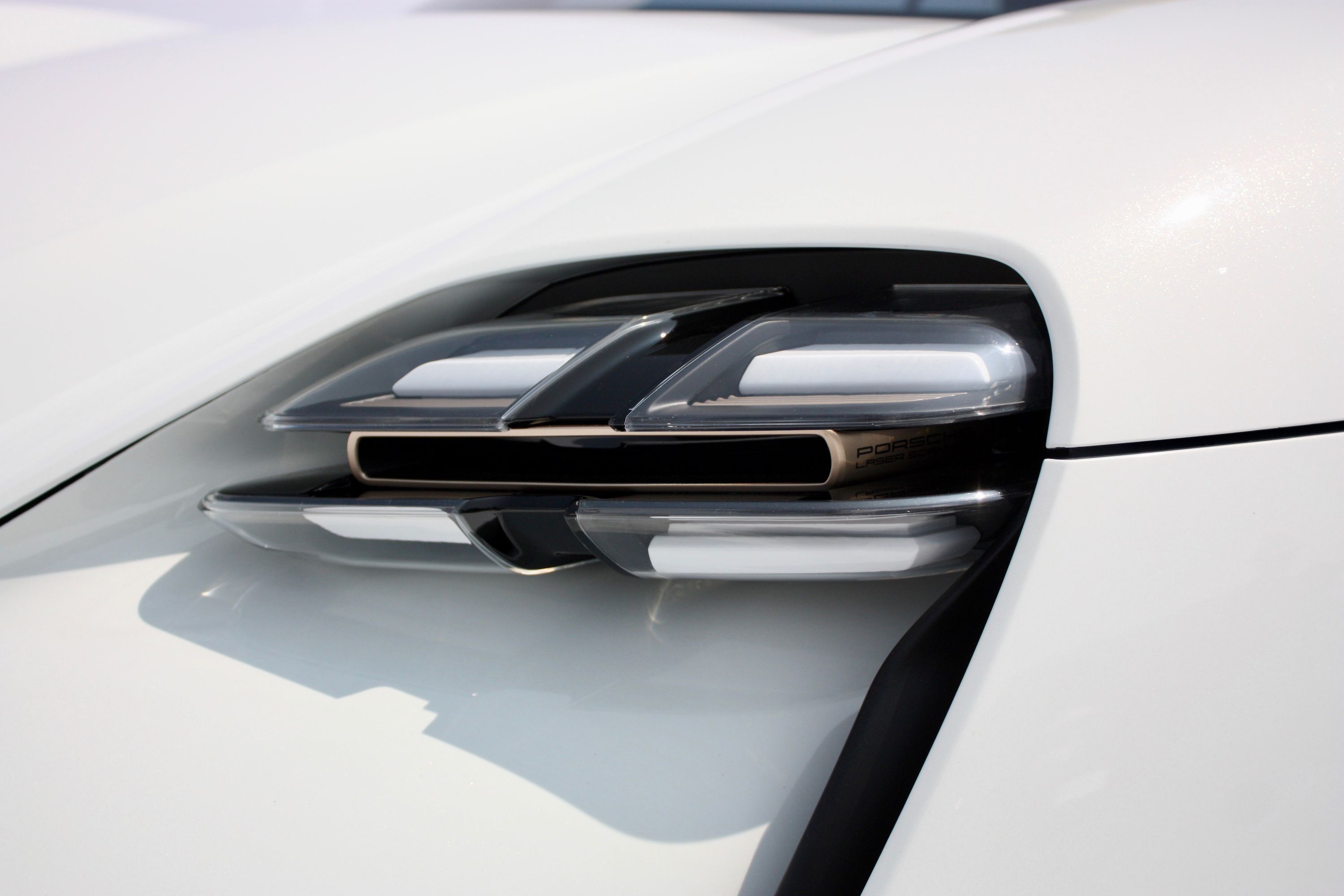
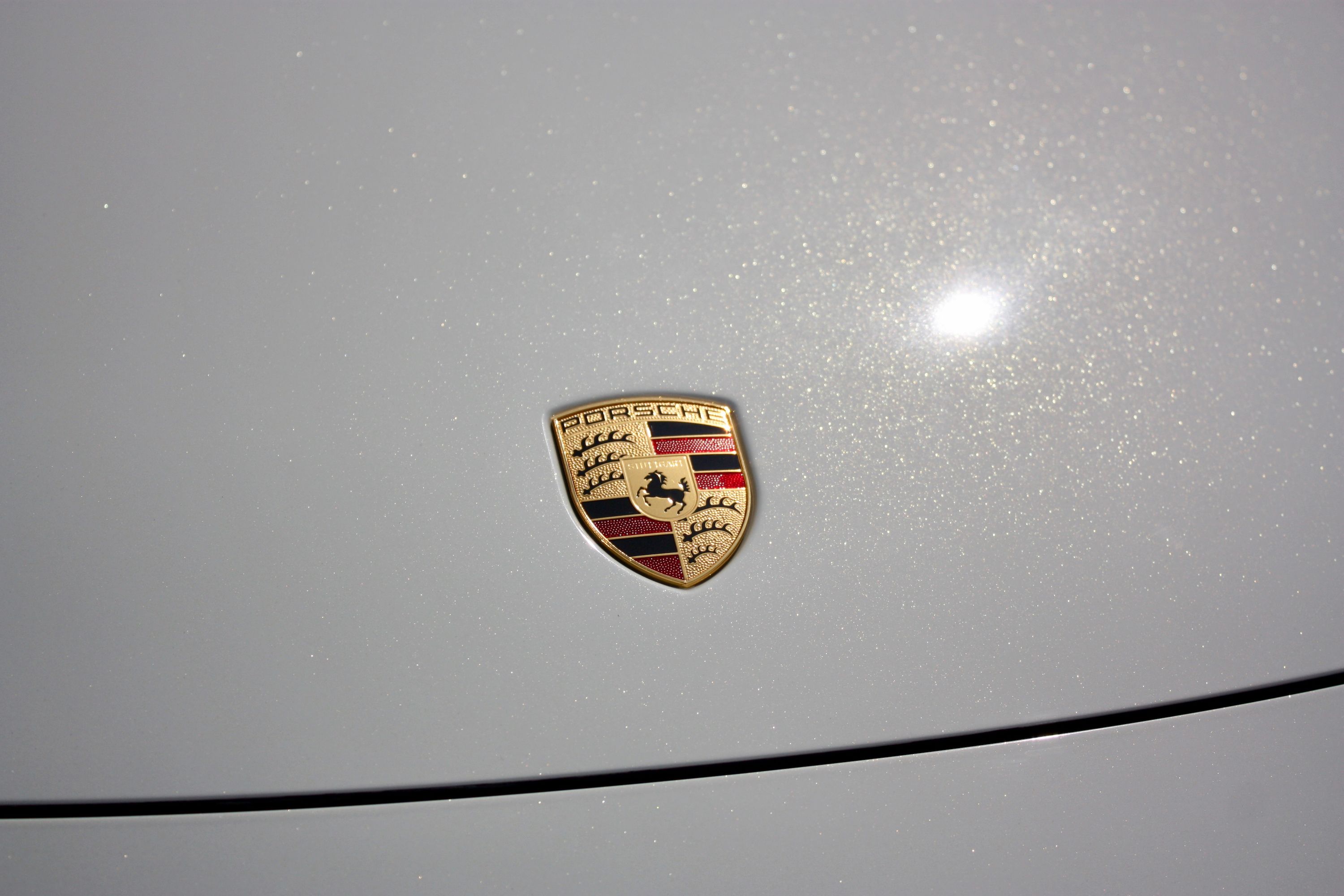
- Make: Array
- Model: 2015 Porsche Mission E Concept
- Horsepower: 600
- [do not use] Vehicle Model: Array
Exterior
Unmistakably a Porsche, the Mission E showcases a futuristic design that brings together styling cues from the 2016 Porsche 911 and 918 Spyder->ke3629, as well as the 919 Hybrid->ke4873 race car->ke148.
At the same time, the overall design is simpler than usual, as Porsche engineers and designers focused on innovative solutions in terms of aerodynamics. However, the Mission E's design is far from being a compromise. Significantly more aggressive than anything in its lineup but the 918 Spyder, the Mission E is basically a sedan in a racing suit and with styling cues cleverly selected as to suggest the concept is as green as they get.
Up front, there's a new set of headlamps that catch the eye. The four LED units in each headlamps are grouped around a flat sensor for assistance systems whose border serves as an indicator light. The headlamps are placed inside deep cutouts in the front fenders, which extend toward the splitter to form a pair of aggressive looking, horizontal intakes. The bumper, which is sculpted in the traditional Porsche fashion -- as seen on both the 911 and 918 Spyder -- features a trapezoidal intake and a carbon-fiber splitter at the bottom, further enhancing the car's sporty nature. The recess in the front hood that extends up and over the roof reference the 911 GT3 RS' design, as do the muscular front fenders.
Around back, the Mission E is again simple but design, but distinctive. The slim taillights and the red LED stripe between them seem to also pay tribute to the 911, although the deep recess underneath makes the EV's rear fascia quite unique. Down below, a race-inspired diffuser further suggests the Mission E is ready to hit the track.
When viewed from the profile, the Mission E seems like a significantly more aggressive version of the Panamera, but that's probably because it features two doors on each side. The roofline is actually similar to the 911's, while the protruding carbon-fiber side skirt reminds me of the 918 Spyder. Carbon-fiber wheels measuring 21 inches at the front and 22 inches to the rear round off the concepts gorgeous design.
Interior
The Mission E's interior is packed with state-of-the-art technology. Loosely based on the 918 Spyder's, the cabin mirrors the exterior's clean design with a strong on the driver. The free-standing instrument cluster is curved and features five round instruments displayed in OLED technology.
The innovative display uses a camera-based, eye-tracking system that detects which instrument the driver is viewing, so the respective gauge remains always visible. Also, it follows the seat position, reacting and moving with the driver when he sits lower, higher or leans to one side. This eliminates situations in which the steering wheel blocks the driver’s view of certain information on the instrument cluster.
Additionally, the lower corners of the windscreen show images of the outside via the cameras mounted in the front wings. These replace the traditional side mirrors.
But that's not all. On the passenger side of the dashboard, Porsche mounted a holographic display that shows individually selectable apps, which are stacked in virtual space and arranged with a three-dimensional effect. The apps can be used to control functions such as media, navigation or climate control by certain gestures that are detected by sensors. A grasping gesture means select, while pulling means control.
The Mission E can also be configured externally from a table via Porsche Car Connect. The integrated high-speed data module allows the driver to update apps from the Porsche Connect Store or contact a Porsche Center for remote diagnostics or to schedule appointments.
Even the rear view mirror comes with its very own features, recognizing the driver's mood and showing it as an emoticon in the instrument panel. This can be saved together with information such as speed or the route and then shared on social media.
Granted, we won't see most of these features on production cars anytime soon, but the Mission E is here to prove that Porsche is experimenting with state-of-the-art technologies and looking for ways to improve in-car connectivity and safety.
Drivetrain
As Porsche's first ever electric car, the Mission E is downright impressive. Featuring two permanent magnet synchronous motors similar to those used in the 919 Hybrid race car that won the 2015 24 Hours of Le Mans, the electric sedan->ke142 has "over 600" horsepower at its disposal.
Though it's not quite as powerful as the Tesla Model S P85D, which is rated at 691 horses, the Mission E is astoundingly fast, needing "less than 3.5 seconds" to hit 62 mph and less than 12 ticks to reach 124 mph.
The super sedan is also equipped with all-wheel-drive and Porsche's Torque Vectoring, which automatically distributes torque to the individual wheels, and Stuttgart claims it's more than suited to hit the race track. Moreover, Porsche says the Mission E has already lapped the Nurburgring Nordschleife->ke999, quoting a sub-eight-minute lap. If this turns out to be true, we have a new 'Ring record for electric cars.
As if all of the above didn't make the Mission E impressive enough, the German sedan can also brag about being able to travel for 311 miles (500 km) on a single charge. That's an extra 36 miles over what the Model S P85D is capable of right now. In addition, the brand's innovative 800-volt charging port -- double the voltage of today's EVs -- the battery can be charged to 80 percent of its capacity in around 15 minutes, a record for electric vehicles.
Drivetrain Specifications
|
Type |
two permanent magnet synchronous motors (PMSM) |
|
Output |
600 HP |
|
Driving range |
500 km (310 miles) |
|
0 to 100 km/h (62 mph) |
3.5 seconds |
Conclusion
Though we won't be able to buy or test it anytime soon, the Mission E is one heck of an electric car on paper and the Tesla Model S->ke3329 competitor we've all been waiting. Even without the fancy in-car technology and with a toned down design the German sedan would be able to give the Model S a run for its money. It's not only fast, nimble, and able to run for more than 300 miles on a single charge, it's also a Porsche.
Yeah, it's not like Porsche has any tradition building electric cars, but it's still a Porsche and comes with the brand cachet the Model S can't deliver. Moreover, we're talking about a race-bred drivetrain developed over two years of intense endurance racing, yet another feature the Model S can't brag about. I'm not saying the Tesla has become less impressive all of a sudden, I'm just saying the Model S is finally getting a worthy competitor that might have everything it takes to become the next big thing on the EV market.
Updated History
Updated 09/29/2015: Porsche dropped a new video, this time revealing the interior design of its latest Mission E concept car, or as they call it "their tribute to tomorrow." Enjoy!
Updated 09/23/2015: We’ve added a series of new photos we took at the 2015 Frankfurt Motor Show. Find them in the "Pictures" tab. Also, Porsche dropped a new video in which it explains the technology behind its new Mission E concept car.

